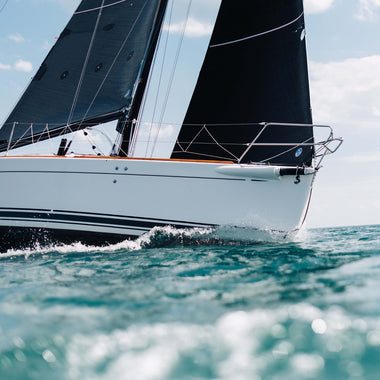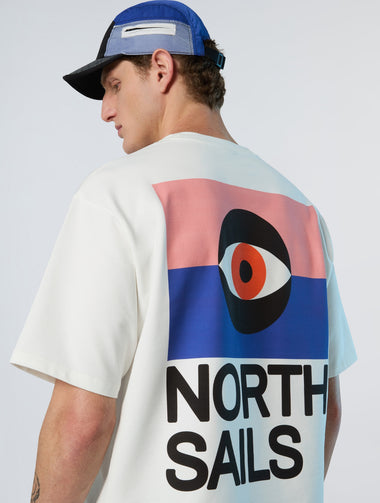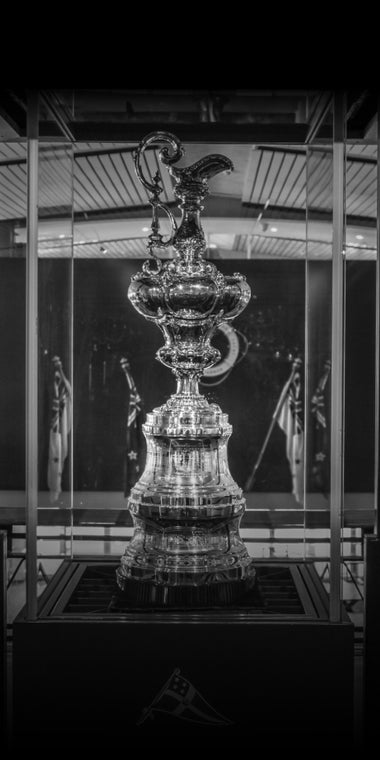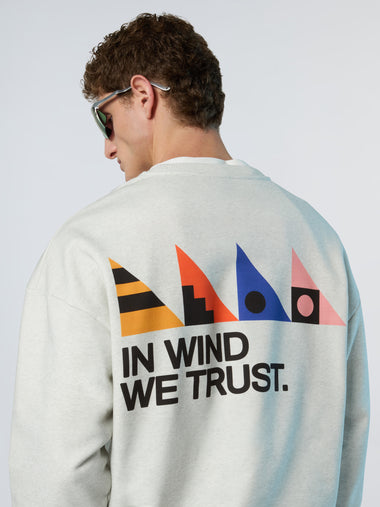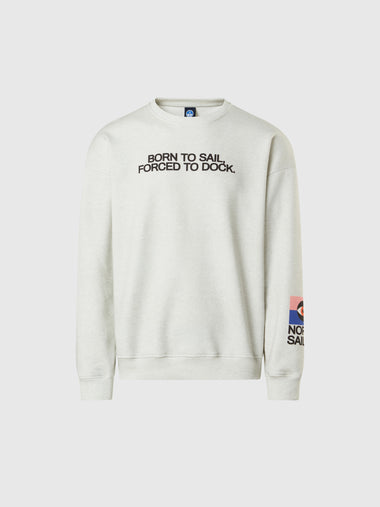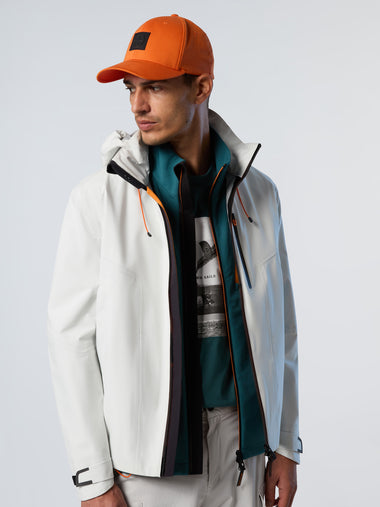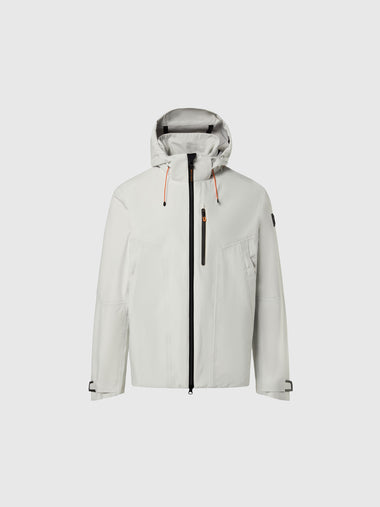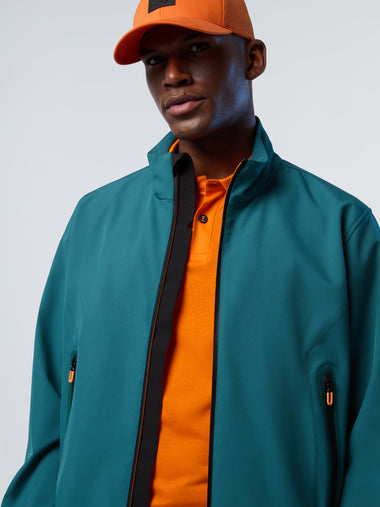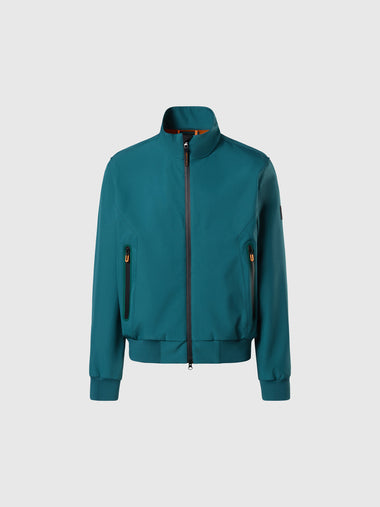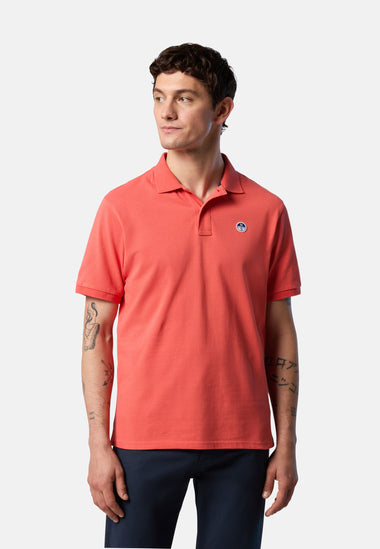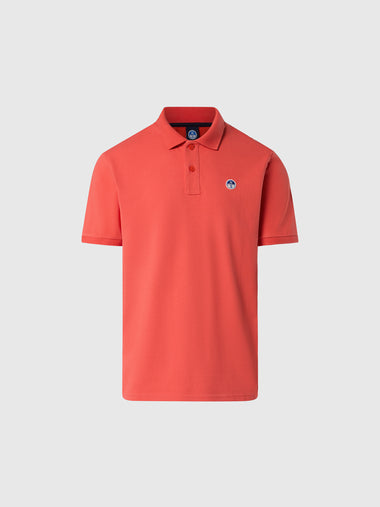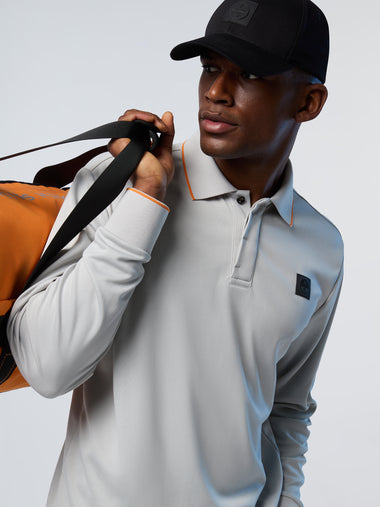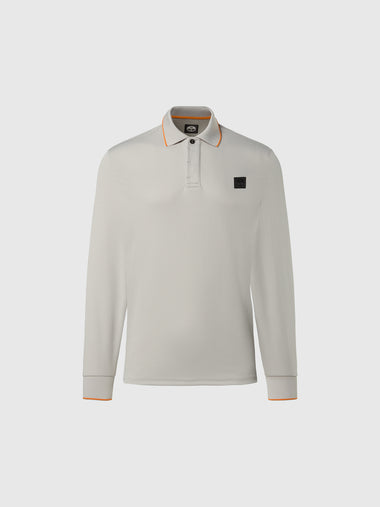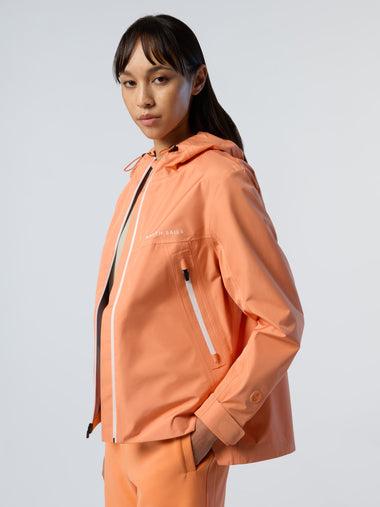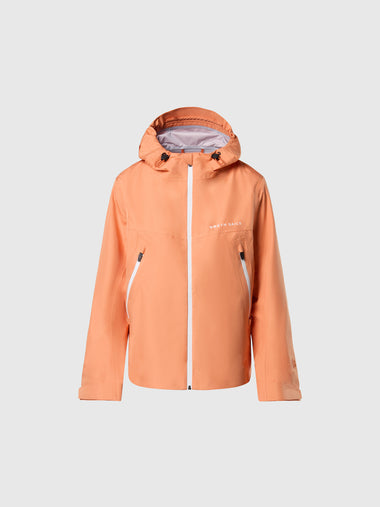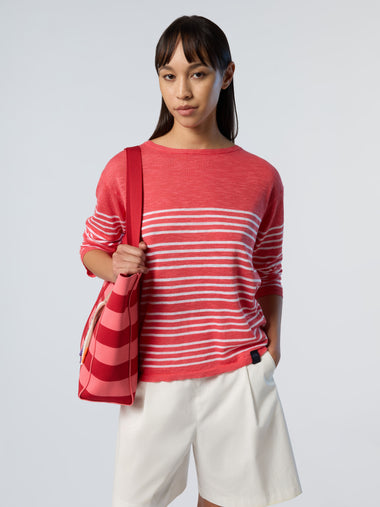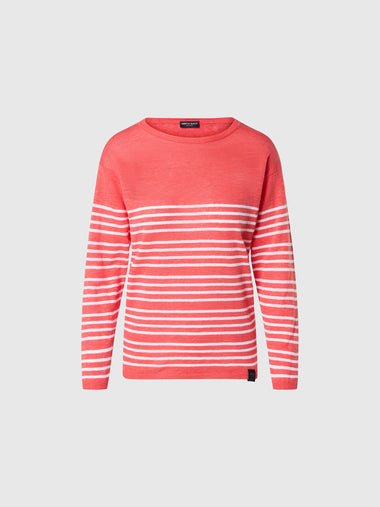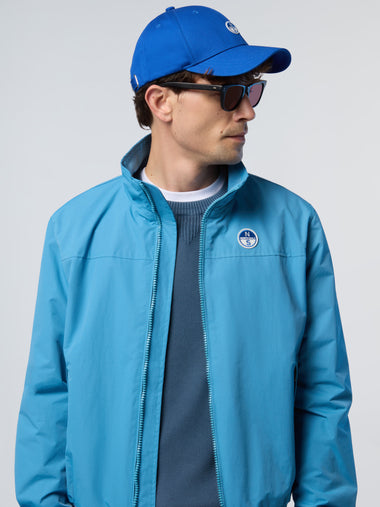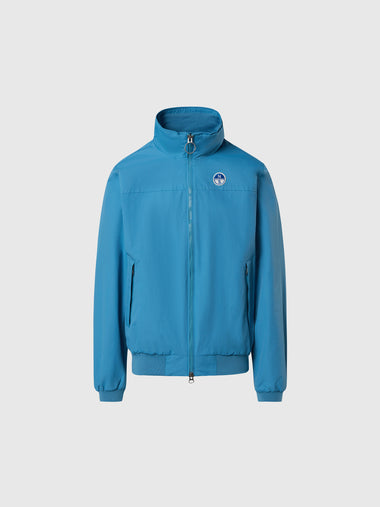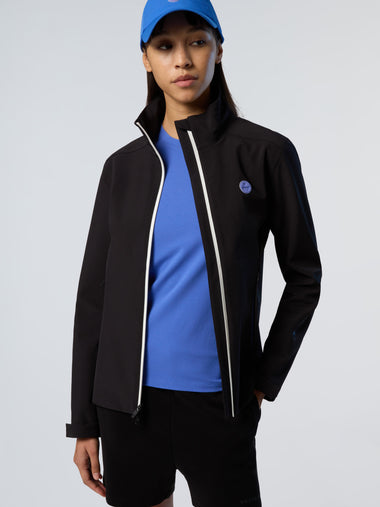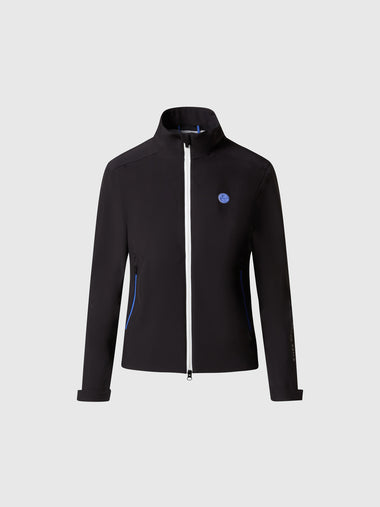NORTH SAILS BLOG
Alle
Events
Guides
News
People
Podcast
Sustainability
Tech & Innovation
Travel & Adventure
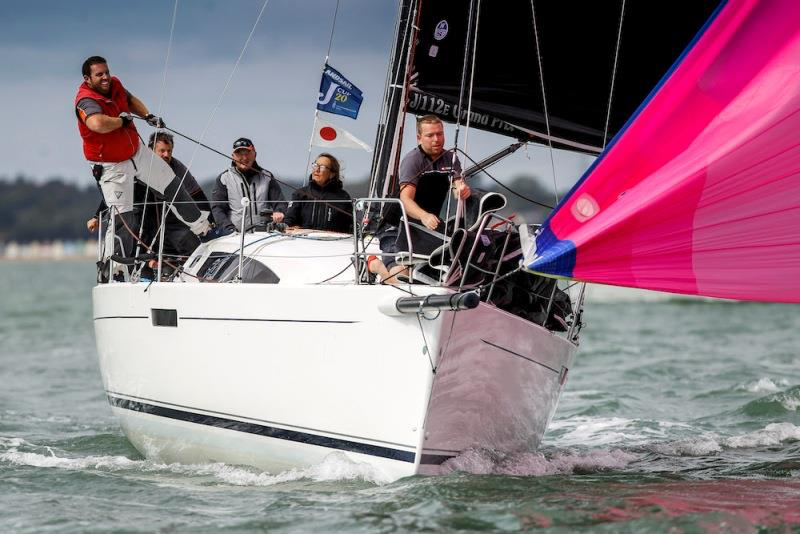
NORTH SAILS CONTINUES SUPPORT OF J CUP REGATTA
NORTH SAILS CONTINUES SUPPORT OF J CUP REGATTA
Key Yachting J Cup Regatta Outlook
Davanti Tyres, J112 - Landsail Tyres J-Cup - photo © Paul Wyeth
The 2022 J Cup Regatta is taking place from 30th June - 2nd July. Hosted by Key Yachting and the Royal Ocean Racing Club, the J-Cup is an annual regatta exclusively organized for racing yachts of the J/Boats brand, and all J/Boat models are invited to compete.
North Sails is thrilled to be supporting the event and competitors by providing on the water coaching with North Sail experts Ben Saxton; accompanied by drone footage from Shaun Roster. The North Sails loft in Cowes Yacht Haven will also be offering regatta repair service after sailing on Thursday and Friday. Connect with North Sails service expert James Hobson for all your service needs during the event.
Wayne Palmer, Owner of Key Yachting shares, “We are grateful for the ongoing support from North Sails with the J Cup Regatta and thrilled with the technical support they are providing.”
The regatta entails three days of exciting and competitive racing and incorporates the J/70, J/109 and J/111 National Championships. The program is coupled with a daily prize giving and lively shore-side entertainment to make the J-Cup a must for many of our owners and clients.
'The J-Cup is a highlight event in the J-Boat racing calendar every year. North Sails is delighted to continue supporting the regatta in 2022 and beyond, and we can't wait to see you all there'' said Ben Saxton.
The North Sails team will be scattered throughout the fleet with Jeremy Smart racing on McFly and Charlie Cumbley on Eat Sleep J Repeat. Ben Saxton, Pete Redmond and Ruaridh Wright will be in the coach boat over the weekend.
Stay tuned for updates over the weekend and keep an eye on results here and here.
Standfast, J70 - Landsail Tyres J-Cup - photo © Paul Wyeth
READ MORE
READ MORE

FÖRSNACK INFÖR BOHUSRACET OCH SHORTHAND-SM
FÖRSNACK INFÖR BOHUSRACET OCH SHORTHAND-SM
Vem tar hem det allra första SM-tecknet i shorthand-kappsegling? Det avgörs under Pantaenius Bohusracet 2022.
📸 Peter Gustafsson
På fredag förmiddag går startskottet för 2022 års upplaga av Pantaenius Bohusracet. Det som gör årets tävling till något utöver det vanliga är att den i år har officiell status som svenskt mästerskap.
Totalt är snudd på hundra båtar anmälda till Bohusracet och över fyrtio är med och kämpar om SM-medaljerna. För att få segla SM krävs verifierat SRS-mätbrev, tävlingslicens och medlemskap i Svenska Havskappseglingsförbundet, och med tanke på detta är fyrtio båtar en bra siffra. Det kan faktiskt bli årets största SM-klass för kölbåtar.
Det finns många anledningar till att Pantaenius Bohusracet blivit så populär. För en del är det totalsegern – i år dessutom toppad med en SM-plakett – som hägrar. För andra är det äventyret och utmaningen som är det viktiga; bara att ta sig runt den 170 sjömil långa banan är en bedrift. Trevlig samvaro med regattamiddag dagen före start och fisksoppa efter målgång får man på köpet. Plus varsin exklusiv T-shirt som bevis för att man fullföljt det långa, krävande racet.
Starten går i Uddevalla och därifrån seglar tävlingsbåtarna söderut mot Marstrand. De rundar Hättebergets fyr och viker sedan norrut. Efter avstickare runt märken i Fjällbacka och Strömstad seglar de upp till Tresteinene i Norge, innan de vänder tillbaka mot målet i Smögen.
Till skillnad från exempelvis Gotland Runt är det inte någon havskappsegling utan en skärgårdssegling, så säkerhetskraven är modesta. Det finns exempelvis inte några krav på mantåg, vilket öppnar upp för ett brett spektrum av båtar. Man kan delta med nästan vilken båt som helst.
North Sails representeras i år av Andreas Turesson från North-loftet i Göteborg. Han kommer segla en X332:a tillsammans med sin pappa Dan. Far och son har framskjutna placeringar sedan tidigare och har siktet högt inställt.
"Men det är ett svårt race", säger Andreas. "Det brukar alltid finnas många tillfällen där det kan gå fel."
Att man någon gång under racet blir liggande i bleke är regel snarare än undantag. Var detta inträffar, och hur man klarar sig igenom det, blir ofta avgörande för slutresultatet.
Vill du följa kappseglingen så är kappseglingens Facebook-sida en bra början.
READ MORE
READ MORE
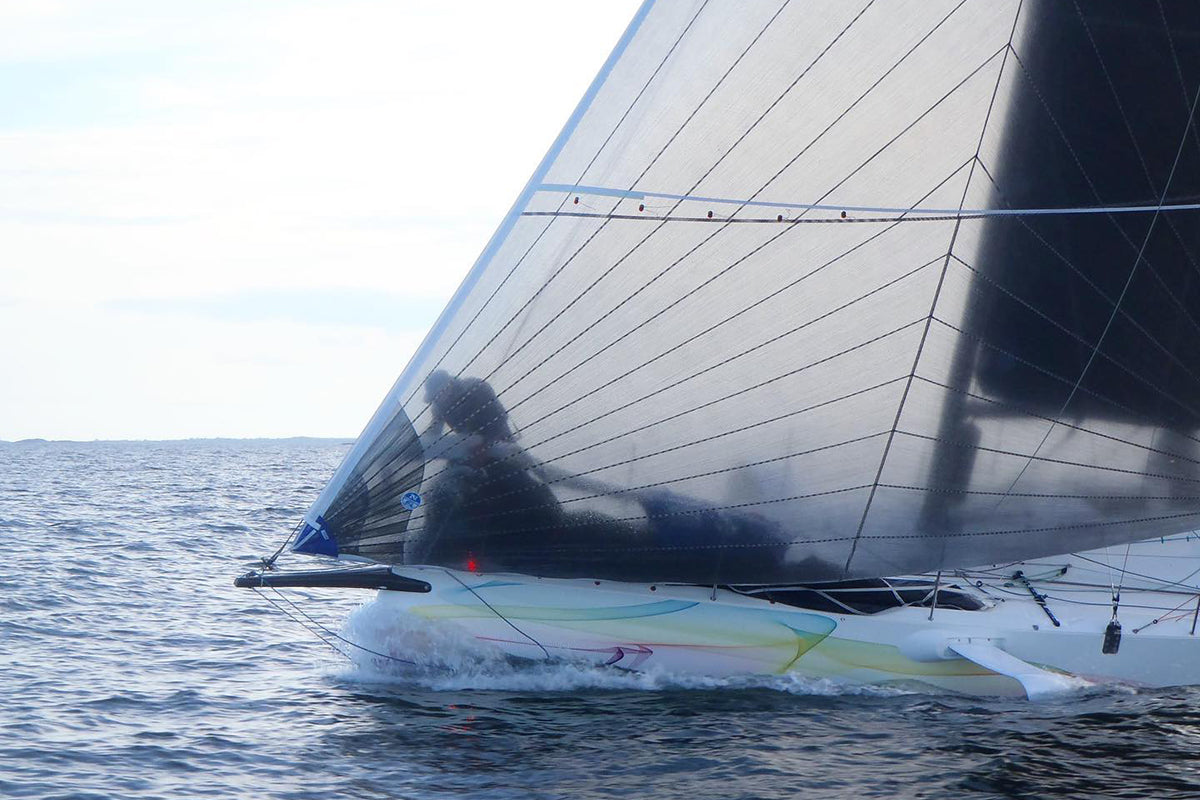
UPPSNACK INFÖR GOTLAND RUNT OCH SHORTHAND-VM
UPPSNACK INFÖR GOTLAND RUNT OCH SHORTHAND-VM
På söndag startar Gotland Runt. Att ORC Double Handed Worlds seglas parallellt på samma bana höjer temperaturen ytterligare.
📸 Anders Dahlsjö
Inte mindre än 225 båtar är anmälda till årets Gotland Runt. KSSS hade hoppats på runt 40 deltagare på shorthand-VM men det blev över 80. Det innebär att regattan totalt samlar över 300 båtar från 14 länder. Fantastiskt kul!
Om vi tittar lite närmare på VM-fältet kan vi konstatera att minsta båt är en Mini Transat på 21 fot, att den största är en Shogun 50 och att påfallande många ligger i spannet 30-36 fot. När detta skrivs är det ännu oklart hur klassindelningen ser ut, men gissningsvis blir det tre klasser.
Det känns inte meningsfullt att försöka utse några förhandsfavoriter. Men ur ett svenskt och nordiskt perspektiv finns det några besättningar som är värda att ha lite extra koll på. Anders Dahlsjö och Martin Strömberg i nya Z30+ är ett exempel. Team Pro4u, med Patrik Forsgren som skeppare, är ett annat. Patrik är en Sveriges allra mest framgångsrika havskappseglare och båten är mycket väl optimerad för ORCi.
Sunfast 3300:an Hyrrokkin med skepparen Sigmund Hertzberg från norska Tönsberg är ytterligare ett ekipage att ha under uppsikt. Båten är specifikt utvecklad för shorthand-segling, och de har förberett sig mycket väl inför VM. Att de var trea totalt på årets Raymarine2star och fyra på Kolfibedrrodret visar att de kan segla bra i Stockholms skärgård.
Och det kan visa sig vara väldigt viktigt. Starten för Gotland Runt och VM går nämligen precis utanför Gröna Lund. Tävlingen inleds alltså med inomskärssegling ut till Sandhamn. Sträckan är knixig och utmanande även för lokala seglare, och det ska bli intressant att se hur de utländska deltagarna hanterar det här. En del kommer ju från länder där det knappt finns skärgård över huvud taget.
Vi är förstås på plats både inför och under Gotland Runt – om du behöver hjälp med service eller reparationer är det bara att kontakta oss. Martin Angsell och Anders Lewander från North Sails Stockholm är för övrigt med på VM i varsin båt. Martin seglar Shogun 50 tillsammans med Anna Drougge, och Anders seglar Bénéteau Figaro 3 i par med Linnea Floser. Båda båtarna har lite nischade egenskaper, men om någon av dem får sitt favoritväder har de potential att gå långt.
Vill du ta en titt på tävlingsbåtarna så ligger de fram till starten på ett stort eventområde vid Vasahamnen. Själva seglingarna följs nog bäst digitalt. KSSS kommer exempelvis ha en Youtube-baserad Gotland Runt-Studio med uppdaterade nyheter två gånger om dagen.
READ MORE
READ MORE
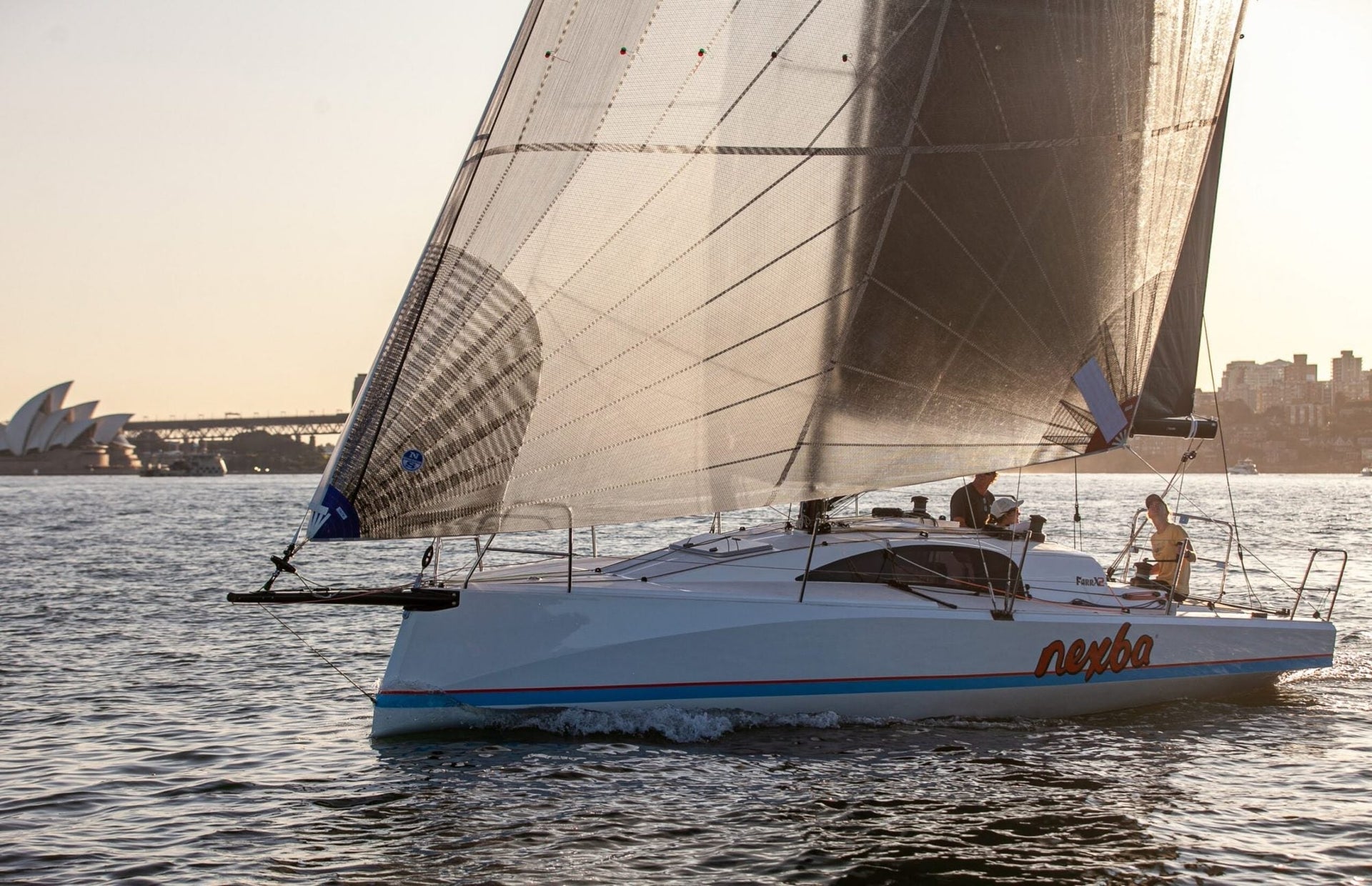
PASSION FOR PERFORMANCE TO BRIDGE THE AUSTRALIAN GAP TO EUROPE IN THE DOUBLEHANDED SCENE
PASSION FOR PERFORMANCE TO BRIDGE THE AUSTRALIAN GAP TO EUROPE IN THE DOUBLE HANDED SCENE
The Launch of the New Farr X2 with North Sails Australia
📸 VicSail
With the launch of the newest high performance short handed yacht, the Farr X2, North Sails Australia reveled in the opportunity to be part of something new, creating the sail inventory for the first Farr X2, designed specifically for the Australian double handed market.
The vision for the project stems from Farr Yachts Australasia’s, Bret Perry’s experience as Project Manager of RG Mini 650s in France, where he wanted to give the Australian short handed sailing scene an opportunity for high performance sailing, with modern design and techniques.
“What I wanted to do was to bring back to Australia with short-handed sailing and the boom it’s going through. Each boat is designed for a reason and purpose, and the Farr X2 is purely about no holds barred high performance yachting, designed with full power in mind for absolute performance. It’s very easy to sail a shorthanded boat crewed, but it’s very hard to sail a crewed boat shorthanded” said Perry.
Norths Sails Australia jumped at the opportunity to be involved from the outset, with short handed offshore racing at the forefront of the design.
Not only did we want to make the boat sail fast in all conditions, but it must be easy to sail shorthanded so, discussing the different principles and priorities was a key part of the design process for the team.
“There were lots of meetings between North Sails and us, to talk about what we wanted to achieve. The number one thing is that you’re sailing short handed so you have to be able to do the manoeuvres, and you have to think about safety, and then on top of all of it, you have to think about performance. That’s the biggest thing that I wanted in the sail package from North Sails.”
The sail inventory has maximum sail area in mind for the 30 footer, however there’s a delicate balance between achieving higher performance and having a competitive rating within IRC and ORCi certification.
“I wanted to be in furling sails early, and in saying that, to be at full speed very early. So, to be at max boat speed upwind in six or seven knots of wind.”
The upwind sails include an all-purpose hanked jib that will work up through the light to moderate wind range of 17 knots. The all-purpose jib is helpful for shorthanded sailing to allow for longer crossovers between sails and reduce the frequency of sail changes.
“The mainsail is fully battened, with a really large number one reef, as well as a 50% reef to cover the IRC rule, to eradicate the use of trisails.” continued Perry. “And, the first reef is probably more equivalent to a one and half, to three quarter reef so it’s really big.”
📸 VicSail
North can offer the inventory from their NPL laminate or their market leading 3Di product.
“In my experience in the mini 650s, we never put the first reef in, and instead put the second reef in and kept the big jib up so we still had the power to do what we wanted to do, but was de-powering enough to sail safely. We’re still going through testing but that’s the philosophy.”
Perry ran through the light to moderate sail package setup. “Let’s say you’ve got the big jib and have the first reef in the main, and I would estimate that would be comfortable in 17-18 knots, you’ll be quite comfortable but still powered up in that configuration. As you start getting above that breeze, you move into a J5 furling sail, which is on an inner tack point on the boat. Once you’re getting upwards of 25 knots, there’s the opportunity to furl the sail up when you feel overpowered, and sail in a furling mode – which is just so much safer than being up the front of the boat shorthanded and you’re controlling the ability to furl.”
When designing the downwind sail package, a key factor was getting the boat planing early, from 11 to 12 knots of wind. The choice then became a furling code zero built from Norths NPL laminate, with the additions of a masthead A2 spinnaker, and a furling A5 for heavy wind conditions built from conventional nylon.
“In light airs, you’d run the code zero and with an increase in wind, you’d use the all-purpose jib with the masthead A2, in up to about 17 knots of wind. You’ll be going pretty quickly and powered up, but you’ve got the choice as to when you want to start reducing the sail area from that point” explained Perry.
With all this in mind, the North Sails inventory was designed as if it was day two or three of a shorthanded race, to reduce the time non-furling sails are flying due to the attention required to trim the sail accurately.
“Where North Sails have been fantastic, is that they get excited about the project, and the ability to create something new.” Perry explained. “And what they’ve come up with is phenomenal. There’s no question they’re on the front foot from my point of view.”
“There’s been such a big group of people involved, from North Sails to Farr Yachts, XSP the builders, and all of the suppliers, and to VicSail who are supporting the project massively, we couldn’t have done this without their assistance.”
“It was amazing to see that the work that we did in the measurement and designs, it fit perfectly, only one small adjustment out of everything we put together. So that’s a credit to everyone involved to be able to put all this together to within millimeters – and all done remotely without the boat” Perry finished.
📸 VicSail
READ MORE
READ MORE
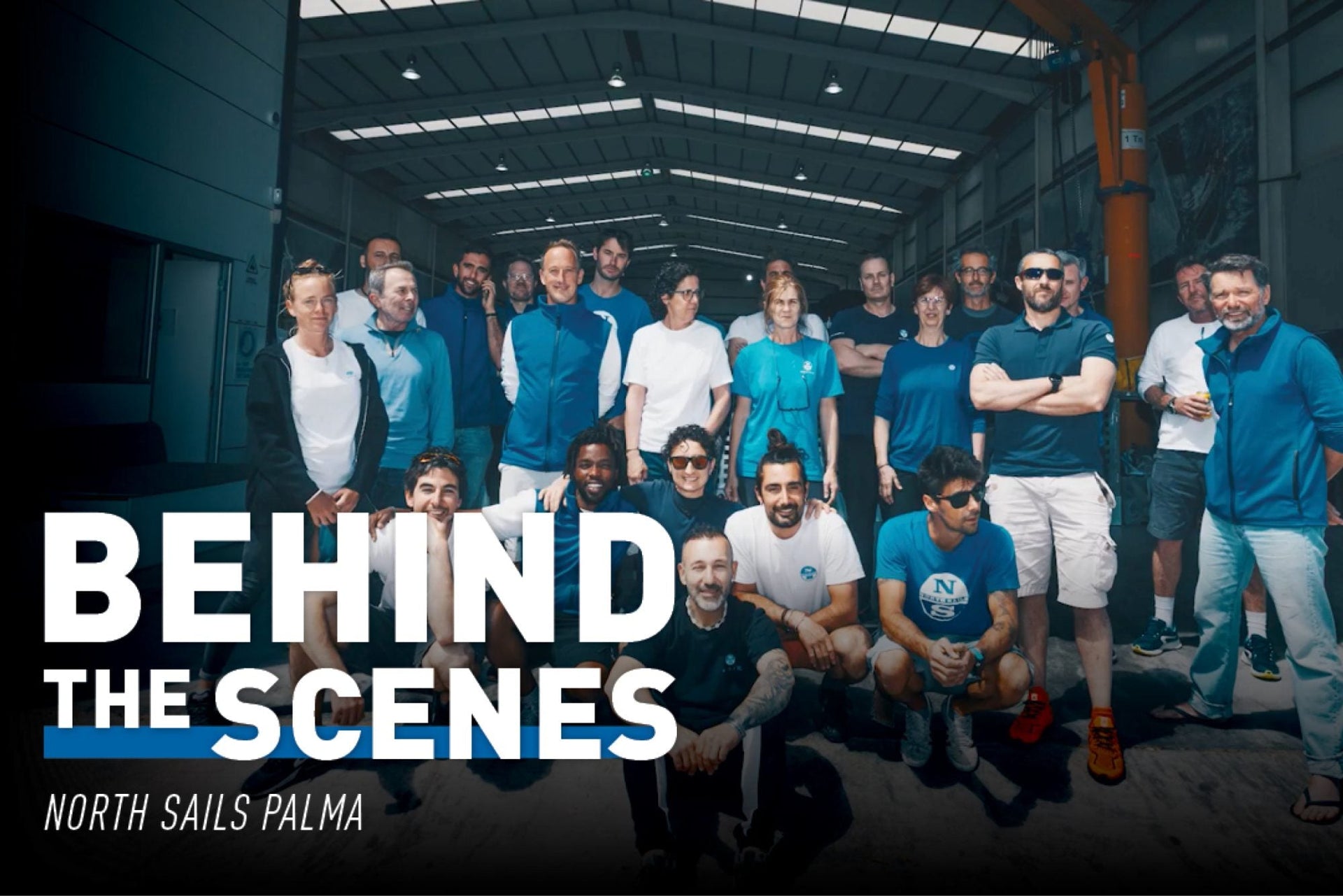
BEHIND THE SCENES: NORTH SAILS PALMA
BEHIND THE SCENES: NORTH SAILS PALMA
Step Inside One of Our Largest Service Lofts
This episode of Behind the Scenes steps into the North Sails loft in Palma and highlights our team working in one of the world’s biggest sail lofts. North Sails Palma is a vital hub within the North network and expanded to twice its previous size in the Spring of 2022.
This 4,720 sqm loft serves double duty as the on-island sailing community hub and a key destination for international sailors and boat captains. So whether you’re a superyacht arriving from a transatlantic delivery, in town for one of the many Grand Prix regattas, or cruising Europe during the summer season, there’s a good chance you’ve met the North Sails team dockside.
Over 30 experts, including sail designers, sailmakers, service professionals, and Superyacht experts sit under one roof, just a quick 10-minute drive from the harbor. The Palma team prides itself on delivering a level of customer service that is unprecedented. And while the team consists of consummate professionals, their passion for sailing and their motivation to keep raising the bar fosters a fun and dynamic atmosphere.
Join us as we spend a day in our Palma loft and get to know the North Sails team.
📸 Atila Madrona
READ MORE
READ MORE
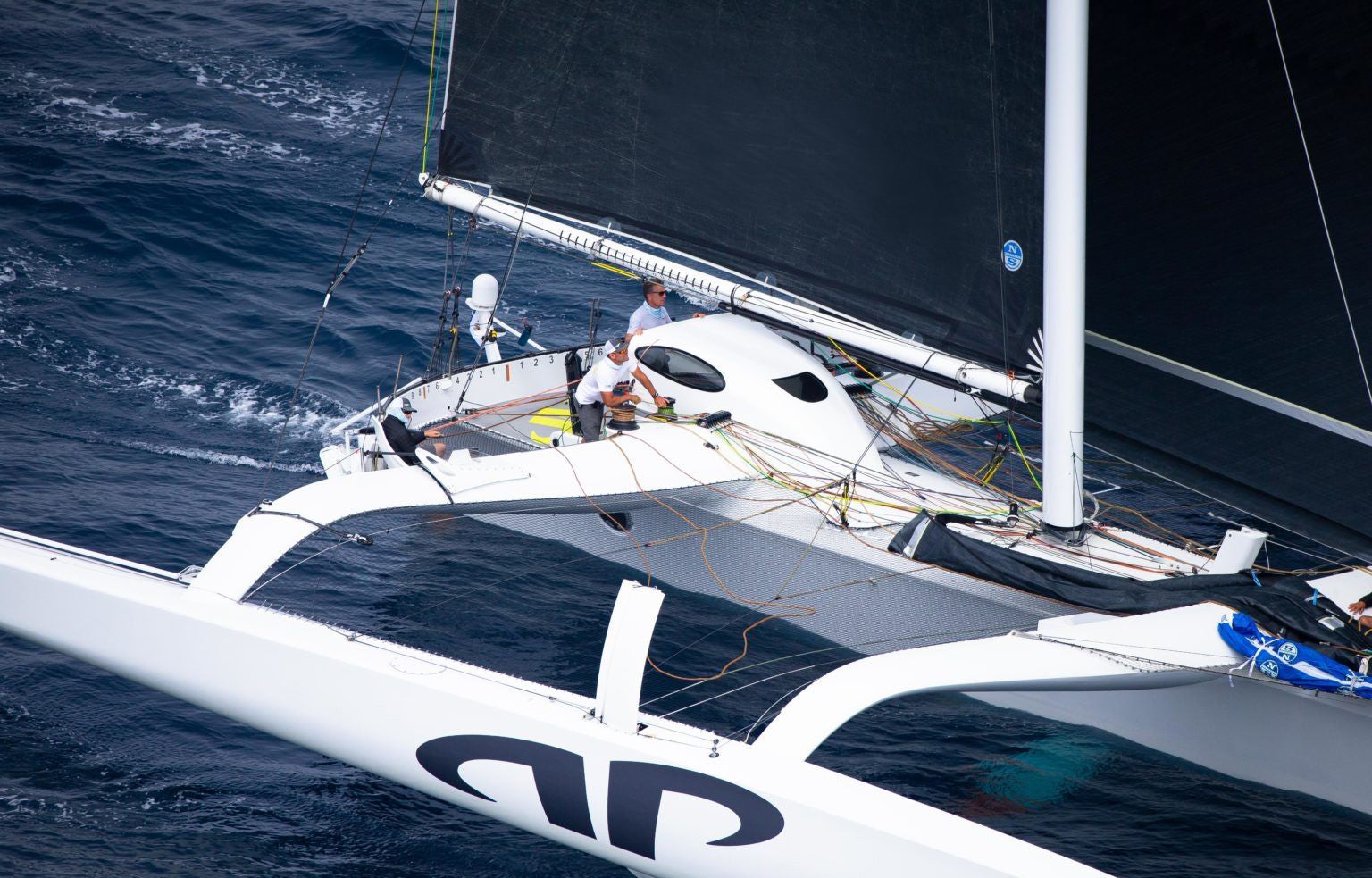
#NSVICTORYLIST: NEWPORT BERMUDA RACE 2022
NEWPORT BERMUDA 2022 RACE RECAP
North-Powered Teams Claim Major Victories and Over 50% of Podium Positions Across 19 Classes
The Newport Bermuda Race has kept North Sails buzzing (and busy!) since well before the fleet set off on June 17th. This year marked the 52nd edition of this East Coast offshore classic and the return of racing after a canceled 2020 event. And while we waited a bit longer than expected to see the competitors return to the start line, race fans and North Sails were quickly rewarded with a steady flow of results.
As the official performance partner to the race, North Sails is committed to helping our clients get the results they expect. The 2022 Newport Bermuda Race featured 186 boats competing across 19 classes. Race results are the ultimate test for sailmaking brands, and the proof is on the podium. This edition of the Bermuda Race saw North clients set a new overall course record, capture line honors, several major divisional wins, and 26 of the possible 49 class podium positions. Keep reading for a rundown of the North Sails-powered performances.
Jason Carroll’s Mod 70 Argo led the pack into Bermuda, claiming overall line honors and setting a new race record of 33 hours. Carroll and his crew are the first boat in the race’s history to finish on a Saturday, which proved both an honor and a challenge for the eight sleep-deprived sailors.
“It was some of the roughest conditions we’ve had on the boat,” Chad Corning said. “The sea state was just nasty, coming from all different directions. You never knew where the waves were coming from, and they would hit the boat at all different angles. You had to crawl around the cockpit to get anywhere. It was a very violent motion; a lot of the guys got sick.”
Argo’s record-breaking run set a new multihull record as well as the new overall course record. However, the monohull record of 34 hours, 34 minutes, and 52 seconds set by Comanche, skippered by North Sails President Ken Read, in 2016 still stands.
Powered by North 3Di and a heavy helping of Helix sails, 11th Hour Racing Team skippered by Charlie Enright was the second boat into Bermuda. Their IMOCA Mālama was the first monohull to complete the 635-mile race, and the wild ride proved an ideal opportunity for Enright to log training miles before the start of The Ocean Race in early 2023.
Like Argo, the Mālama crew was pushing hard and was short on sleep upon arrival. Enright compared the onboard conditions to spending 41 hours in a washing machine. “This has been full-on,” he said at the finish. “There has been no rest for anybody onboard. From the moment we left Newport, we have been racing at speeds between 20-30 knots in a heated sea state.”
Sailing with Enright were his 11th Hour teammates Justine Mettraux and Amory Ross, as well as Red Bull athletes Olympic snowboarder Elena Hight, and big wave surfer Ian Walsh.
View this post on Instagram
A post shared by 11th Hour Racing Team (@11thhourteam)
North Sails powered both Lighthouse Division winners: with Chris Sheehan’s Warrior Won on top in the Gibbs Lighthouse Division and Sally and Stan Honey’s Cal 40 Illusion claimed the St David’s Lighthouse prize.
The Newport Bermuda 2022 is the latest in a string of wins for Warrior Won; Sheehan and his team were named the 2021 Transpac overall winner and the overall winner of the 2022 RORC Caribbean 600. Warrior Won’s sail inventory includes North 3Di which has been onboard with the team for each of their wins in the past year.
View this post on Instagram
A post shared by Warrior Won Sailing (@warriorwonpac52)
Illusion bested the 108-boat fleet to place on top of the podium in the St David’s Lighthouse Division. And with an owner who’s also a world-class navigator, you’d expect nothing less. Honey is a multi-race veteran and was navigator onboard Comanche during their last record run.
“The conditions were perfect for our boat, and we had a pretty good navigator onboard,” said Sally of her husband. “Stan chose a really good course, and the conditions were just what the boat loves, heavy-air reaching, a lot. We got into a Gulf Stream eddy and stayed in it for about seven hours. That gave us a good boost. We managed to stay in the wind most of the way down. We had a couple of light spots, but nothing like the later boats.”
Prevail, Dudley Johnson’s Tripp 65 won the 38-boat Finisterre Division. Dudley and his crew knew they were on the right track when they were passed by Warrior Won in the Gulf Stream. Navigator Adam Klyver commented: “We felt like we were doing something right. We tried to stay in the middle of the Stream and found a five-knot current pushing us southeast. We probably had favorable current for close to 90 percent of the race.”
North Sails is a longtime partner to the Newport Bermuda Race and is honored to have been onboard in 2022. This year’s race saw a bumpy sea state, fast sailing and we know it was a battle to arrive in Bermuda. Congratulations to all participants and a job well done to North clients who saw their names on the leaderboard.
In Memory Of:
Our thoughts are with the family of Colin Golder and his Morgan of Marietta crew. Golder, a longtime client of North Sails, fell overboard en route to Bermuda and tragically passed away. He was not only a great client but an even better friend to our team who had the pleasure of sailing and working with him; he will be greatly missed. Sail on Colin.
READ MORE
READ MORE

PALMARÈS DES VOILES NORTH SAILS 2022
PALMARÈS DE NOS VOILES EN CETTE SAISON 2022
Les voiles North Sails commencent fort la saison! Un immense BRAVO à tous les concurrents des deux grandes régates traditionnelles lémaniques, la Genève-Rolle-Genève et le Bol d'Or Mirabaud.
Voici les résultats obtenus par des navigateurs équipés par North Sails:
© Yves Ryncki
Genève-Rolle-Genève:
Classement général mono, temps réel: 1er ,2ème (partiel), 3ème, 4ème (partiel)
Classement général, temps compensé: 3ème
Par catégorie:
M1: 1er, 2ème, 3ème, 4ème, 5ème
M2: 3ème
TCFX: 1er ,2ème (partiel), 3ème, 4ème (partiel)
TCF2: 2ème, 3ème
TCF3: 1er, 2ème (partiel)
TCF4: 1er ,2ème, 3ème, 4ème
Grand Surprise: 1er, 2ème, 3ème, 4ème, 5ème, 6ème, 7ème
Surprise: 2ème , 3ème
- - - - - - - - - - - - - - - - - - -
Bol d'Or Mirabaud:
Classement général, temps réel: 1er, 2ème, 3ème
Classement général, temps compensé: 3ème, 4ème, 5ème
Par catégorie:
M1: 1er, 2ème, 3ème
M2: 3ème
TCFX: 1er, 3ème (partiel), 4ème
TCF1: 1er
TCF2: 2ème ,3ème
TCF3: 2ème (partiel)
TCF4: 2ème
Surprise: 1er, 2ème, 3ème (partiel)
Grand Surprise: 1er, 2ème, 3ème, 4ème, 5ème, 6ème
© Yves Ryncki
READ MORE
READ MORE
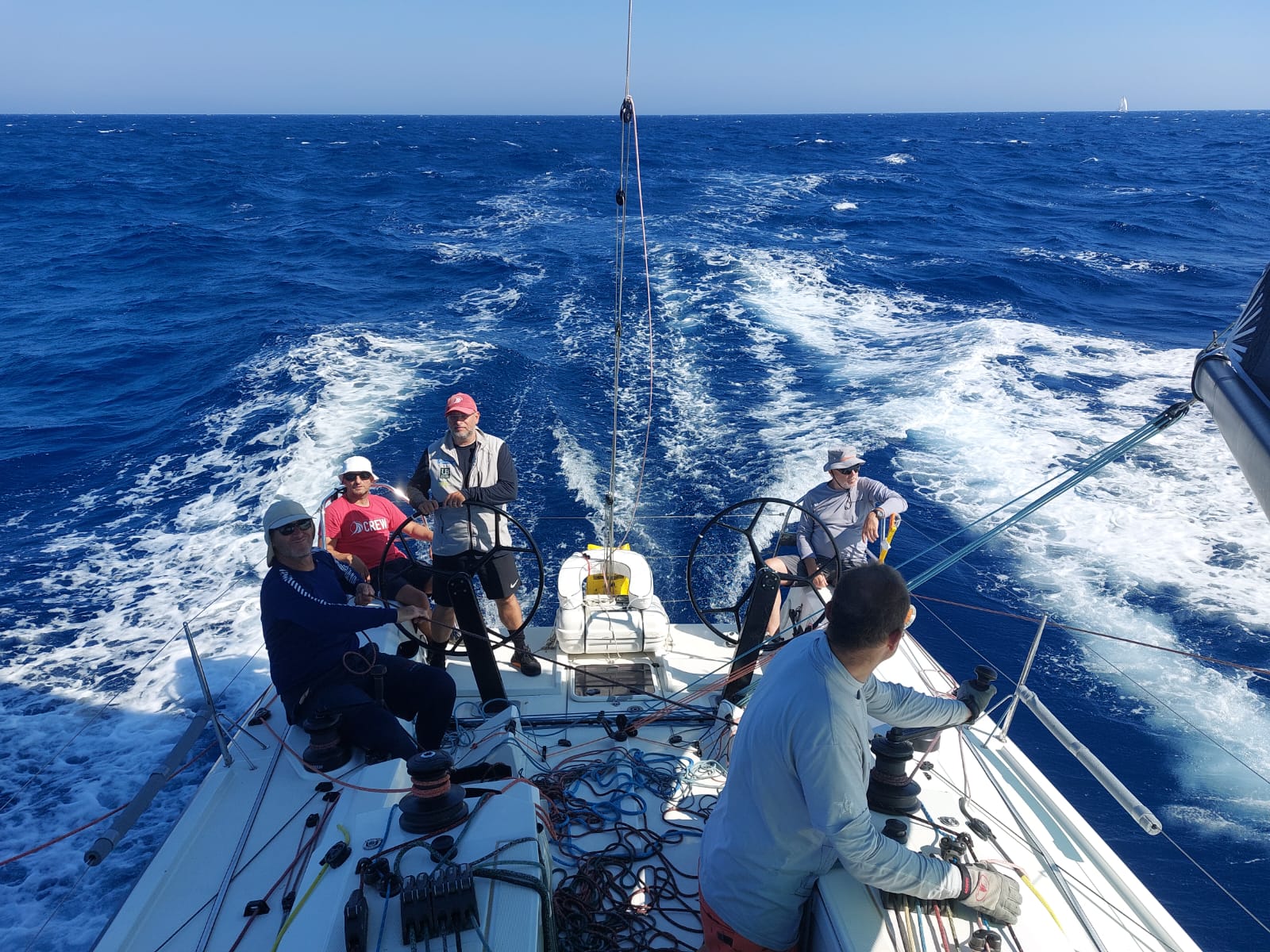
PRETTY, PRETTY, PRETTY GOOD.
PRETTY, PRETTY, PRETTY GOOD
A Recount of The 2022 International Regatta Brindisi- Corfu
The “International Regatta Brindisi- Corfu” (www.brindisi-corfu.com) was founded in 1986. During the first two years, the competition was limited to vessels from Brindisi. It was three years later that the participation of aggressive Corfiot boats began. In 2022. I was able to be a part of a multinational crew - a French boat under Greek flag, a Bulgarian owner, and a Bulgarian - Croatian crew. So we added a nice mixture to the already colourful image of the race - 78 entries from Italy, Greece, Croatia, Malta, Bulgaria, Sweden, Great Britain, Spain and USA. Our boat was lying in Corfu, so Nikola and I flew there to prepare everything for the delivery to Brindisi. The boat is a Sun Fast 3600, named after the American rock band from the 60s - “Iron Butterfly”. The first look at the boat already showed that it is fitted to be fast - custom Southern Spars carbon rig, full North Sails 3Di inventory, B&G instruments and lots of other racing gadgets. All in all, it makes you smile.
Corfu, see you in a couple of days..
Anyhow, the boat is ready, we meet the owner Nasco and his friend Dobry and we are ready to sail to Brindisi. A nice south easterly makes the first 30-40 miles pass by quickly, but than the unstable atmosphere with a low passing by shows us a good time. The first squall hits us around 8 PM, just before sundown.
The first squall
The second one comes around 1 AM with lots of wind and a lot more rain. It’s all part of the game, the only problem is that between the squalls there’s no wind and we are slowly motoring towards Brindisi. Early in the morning, around 6 AM we enter the rather big Italian port of Brindisi. A lot of industrial buildings make it hard to appreciate the traditional Mediterranean architecture.
The nice, Mediterranean part of Brindisi
In the next days we are preparing the boat for the race, gathering and installing all the safety equipment, checking the sails and finally - making some tourist routes around the city. The other part of the crew - Marko and Sapa are coming on Saturday evening, bringing a brand new 3Di mainsail for the race. Unfortunately, as the forecast predicted, there is a lot of wind on Sunday (30+ knots of north westerlies), and after a short wait around the starting line, the Race Committee postpones the start until Monday morning at 6AM.
Marko & Nasco shortly after the start
There are 78 boats racing in this year’s edition with a variety of different designs and lengths, all racing under the ORC rule. So, a fair chance for everybody. We are pretty psyched about the start so we start full power in 25 knots of north westerlies, under full main and A5. Soon after the start we change to A2 as the waves become longer and the surfs faster.
Iron Butterfly (aka Buffy) at her best
The wind varies from 20 to 25 knots, getting stronger near the Italian coast. After consulting our routing options, we decide to stay closer to the Italian coast before crossing the Otranto strait. Again, I was surprised at how little ships we met crossing the Otranto. There were definitely better days for the shipping industry. Back to sailing - the route to Corfu is 104 miles long, meaning there is plenty of time for the conditions to change. And so it is, some 40 miles before Corfu the wind starts to drop slowly, knot by knot. 15 miles before the finish there are only 10 knots of wind left, 10 miles from the finish only 5 knots and we knew we were headed into some really light winds just before the finish.
Nerves of steel
But we keep our morale high, Marko is making some good strategic choices and we are gaining on the boats ahead, mile by mile, minute by minute. A mile from the finish line we come to a complete stop, and the AIS is showing others boats closing in at higher speeds. But they will stop too, no worries.
The dynamic duo - Marko & Nikola
The slow motion finish finally comes to an end around 11 PM and we are all excited and proud to have entered 5th in real time. Now we have to wait for the compensated times, but with such a good race behind us we can only expect the best. But the but is always there, and just minutes from our finish Marko gets a message from the RC that we have to be present at the official crew weighing tomorrow at 9.30 AM. We know that our weight is close to the max allowed limit because we changed a lighter (read: female) crew member for a heavier (read: male) in the last moment, so we decide there’s no more food or water until tomorrow. Not an easy decision, after 17 hours of racing we can’t eat a nice steak? Merde. But it is all for a greater cause, so we don’t mind. After a good night’s sleep, we wake up for an early walk and prepare for the weighing. And, as usual, the scale is showing more than expected. We are 5 kilos over, and we have an extra hour to get rid of them. There is no other way - foul sailing gear on, and all of us are out for a nice jog in the Greek sun.
Why not?
It’s 30 degrees out and we are sweating like crazy. The regular folks are pretty confused seeing 6 guys running around the marina in sailing suits. The real connoisseurs of the ORC races are just smiling, they know what is really going on. On the second weighing, we are 2 kilos below limit meaning we managed to dry out 1.5 kilos each in just one hour. Not bad, not bad at all.
When we draw the line, we managed to enjoy a really nice race in perfect weather conditions with a super happy crew, in a great boat with an excellent result - 1st in ORC C, 1st in real time for the Groups B, C and D (the ones that started 10 minutes after the ORC A and Multihulls), and 1st in compensated times for the same Groups. And not to mention 3rd in ORC overall - www.brindisi-corfu.com/en/classifiche/ .
One of many trophies for the Iron Butterfly crew
You must admit it: it sounds pretty, pretty, pretty good.
READ MORE
READ MORE

SNART VIND I SEGLEN FÖR PRINCESS SVANEVIT
SNART VIND I SEGLEN FÖR PRINCESS SVANEVIT
Renoveringen går mot sitt slut - och vi har fått uppdraget att förse henne med segel
📸 Sjöhistoriska museet
Princess Svanevit är en klassisk 12mR-yacht från 1930. Det är en magnifik båt, dessutom med en spännande historia.
Hon beställdes av förläggaren Erik Åkerlund inför KSSS:s hundraårsjubileum 1930, ritades av Gustaf Estlander – "Trollkarlen från Nyland" – och byggdes av Carl Plym på det legendariska Neglingevarvet.
Åkerlund kappseglade båten med framgång i både Sverige och England, men sålde henne redan efter några år. I mitten av 50-talet seglade tredje ägaren ner Princess Svanevit till Spanien, där hon försvann spårlöst. Femtio år senare bestämde sig träbåtsbyggarna Bobby Cyrus och Andreas Millde för att försöka leta upp henne. Med hjälp av bland annat Google Earth lyckades de hitta henne uppställd på en kaj i södra England, och de ägnade sedan sju år åt att övertala ägaren – en excentrisk miljardär som gjort sig en förmögenhet på fastigheter – att få köpa henne. Precis innan kontraktet skulle undertecknas avled ägaren och det tog dem ytterligare något år att komma överens med dödsboet.
Men i augusti 2017 var allt äntligen i hamn och Princess Svanevit skeppades till Sverige. Hon fördes till Stockholms Båtsnickeri i Saltsjöbaden, inte långt från den plats där hon en gång byggdes. Sedan dess har hon under Andreas Milldes ledning genomgått en oerhört genomgripande renovering, som nu börjar gå mot sitt slut.
Om allt går som planerat seglar hon i slutet av augusti!
Vackra segel till en vacker båt
North Sails har varit involverade i 12mR-klassen sedan Lowell North rattade US 27 Enterprise i America’s Cup 1977. Intresset för såväl klassiska som moderna tolvor har ökat kraftigt på senare år, inte minst i Nordeuropa där klassen nu samlar runt 25 båtar, och North Sails-gruppen har lagt ner stora resurser på utveckling av design och konstruktion av segel.
För moderna tolvor finns inga begränsningar när det gäller segelmaterial, men för klassiska tolvor står valet mellan vävd duk eller laminerad polyester. 3Di-segel byggda i polyester ryms inom regeln, och om det är max prestanda man är ute efter är detta det självklara valet. Mycket riktigt sitter det 3Di 330 RAW-segel på de flesta klassiska tolvor som används för kappsegling.
De segel vi nu tar fram till Princess Svanevit är dock av mer klassiskt snitt. Tanken är att hon ska återställas till det skick och utseende hon hade som ny, och det gäller så långt möjligt även rigg och segel. "De estetiska värdena har stått i första rummet", säger North Sails Anders Lewander, "men de har fått vägas mot de praktiska fördelar som modern teknik ger oss. Det har ju ändå skett en del utveckling på materialsidan sedan 1930."
Tankarna bakom seglen har utvecklats i nära dialog med Christian Harding och Janne Björnberg, som är knutna till projektet som koordinator respektive sakkunnig. Christian är välkänd mångsysslare inom segling och Janne har varit segelmakare sedan 70-talet och driver idag Next Sails. Båda har massor av erfarenhet, inte minst av classic-båtar.
Krysseglen sys på traditionellt vis i högkvalitativ dacronduk, men panelerna är smalare än vanligt. Fock och genua får en gammaldags vådlayout som kallas för "mitre cut", med en söm som går diagonalt mellan skothorn och förlik. Även förstärkningarna får ett utseende som minner om svunna tider.
För att klara de höga laster som en så tung och styv båt genererar kommer några av seglen sys med two-ply-teknik, det vill säga dubbla lager duk längs akterliket. Two-ply är väl något man i dag främst förknippar med 80-talet, men i det här fallet har vi försökt hitta en estetik som ansluter till ett betydligt äldre ideal.
Mer av "uppvisningssegel" är racingsegel, skulle man kunna säga, men syftet är även att göra en noggrann utvärdering av laster och den helt nya moderna trämastens karaktär.
Just uppvisningssegling är också det som väntar framöver. Visionen är att Princess Svanevit ska bli "Hela Sveriges båt" och efter sjösättning och sedvanliga tester kommer hon visas upp i hamnar och på kappseglingar runt hela Sverige.
Princess Svanevit ägs av ett aktiebolag, som i sin tur kontrolleras av den ideella föreningen Svenska Träbåtar. För dem har renoveringen ett bredare syfte än att bara ge en vacker gammal båt nytt liv. Förhoppningen är att Princess Svanevit ska öka intresset för klassiska träbåtar och bidra till att de bevaras i Sverige. Bland de långsiktiga målen finns bland annat att få upp båtbyggnadskonsten på Unescos världsarvslista och driva igenom rotadrag för renovering av klassiska båtar!
Lästips
På projektets hemsida och Facebook-sida finns massor av information. Och i premiärnumret av helt nya tidskriften Båtklassiker ägnas ett trettiotal sidor åt Princess Svanevit, Erik Åkerlund och klassiska tolvor.
📸 Sjöhistoriska museet
READ MORE
READ MORE

DAHLSJÖ / STRÖMBERG RENSAR PRISBORDEN MED NYA Z30+
DAHLSJÖ / STRÖMBERG RENSAR PRISBORDEN MED NYA Z30+
Anders Dahlsjö och Martin Strömberg gör en satsning mot ORC Double Handed Worlds
📸 Malcolm Hanes
Och det har börjat bra, med bland annat totalseger i Raymarine2star.
Våren 2021 publicerade vi en artikel med rubriken Snart är nya Z30+ färdig! Det visade sig vara lite väl optimistiskt, och det borde vi kanske ha insett redan då. Att nya, tekniskt avancerade båtar går över tiden är ju en regel utan kända undantag.
I april i år sjösattes den första båten, SWE 301 Zeit. Den ägs av initiativtagaren Johan Larsvall men kappseglas fram till och med VM av Anders Dahlsjö och Martin Strömberg. Anders har två America’s Cup och ett Volvo Ocean Race i ryggen. Martin är professionell kappseglare, med bland annat fyra Volvo Ocean Race på sitt CV – och han är en av mycket få svenskar som vunnit totalt.
Anders och Martin seglade båten första gången i början av april och ägnade några helger åt att bekanta sig med den. På Lidingö Runt ställde de upp tillsammans med Johan Larsvall och slutade tvåa av sjutton båtar i SRS 1. Och på Raymarine2star slog de alltså till med totalvinst. Helgen därefter vann de för övrigt även även shorthand-klassen i KSSS Havskappseglingsregatta.
Det lovar gott inför VM, som ju avgörs på delvis samma vatten.
Ett ovanligt koncept
Vi ska inte fördjupa oss i tekniska detaljer eller gå in på hur z30+ utvecklades (det kan du läsa om här). Men kortfattat kan man säga att Johan Larsvall tagit in ett gäng experter med Jimmy Hellberg i spetsen för att göra en total makeover på gamla Z30:an. Modifikationerna är så genomgående att det i praktiken rör sig om en helt ny konstruktion.
Snudd på unikt i den här storleksklassen är att Z30+ byggs från topp till tå i kolfiber, vilket gör båten lätt och samtidigt extremt styv. I övrigt är den medvetet enkel, särskilt jämfört med andra båtar utvecklade för shorthand-kappsegling. Z30+ har inte dubbla roder, inga chines, ingen vattenballast och definitivt inga foils.
"Z30+ är en spännande båt", säger Anders Dahlsjö. "Enkel men extremt förfinad, med all kolfiber. Den går som en raket och det märks att den har mycket i bulben. Den känns nästan som en 40-fotare när man kliver ombord, för den gungar inte till som lätta båtar i den här storleken brukar göra."
Även segelgarderoben är enkel. Den togs fram redan för ett år sedan, och det som har hänt sedan dess är att ytterligare en fock har tillkommit. Den är designad för hårdare vindar och är 7 kvm mindre än allroundfocken. Två revpunkter i förliket och en i akterliket gör att den får ett väldigt brett register. Fullt hissad är det en hårdvindsfock (på 18 kvm) och med ett rev motsvarar den en J5:a (13 kvm). Dessutom kommer den användas som ett reaching-stagsegel (11 kvm,). Den halsas då i centrumlinjen 2,3 meter framför masten (ca 60 % av J-måttet).
"Man kan nästan säga att man får tre segel i ett", säger Anders Lewander på North Sails Lidingö, som tillsammans med sin bror Tore har varit ansvarig för utvecklingen av seglen.
Vägen mot VM
Enligt SRS-brevet ska Z30+ vara snäppet långsammare än Farr 30 med full besättning, men något snabbare i shorthand-figuration, vilket ju låter rimligt med tanke på det rätande momentet. Inte illa med tanke på att Z30+ är en båt med full ståhöjd och att den är tänkt att kunna användas även som semesterbåt.
På VM är det dock ORC som gäller. Det ser för övrigt ut att bli ett riktigt getingbo; i slutet av maj var nästan 90 besättningar anmälda och anmälningstiden går inte ut förrän i mitten av juni, så 100 båtar till start är ingen omöjlighet.
Säsongen har som sagt börjat bra, men Anders och Martin hoppas kunna jobba upp farten ytterligare i den nya båten. Sedan gäller det bara att toppa formen lagom till VM i början av juli.
READ MORE
READ MORE
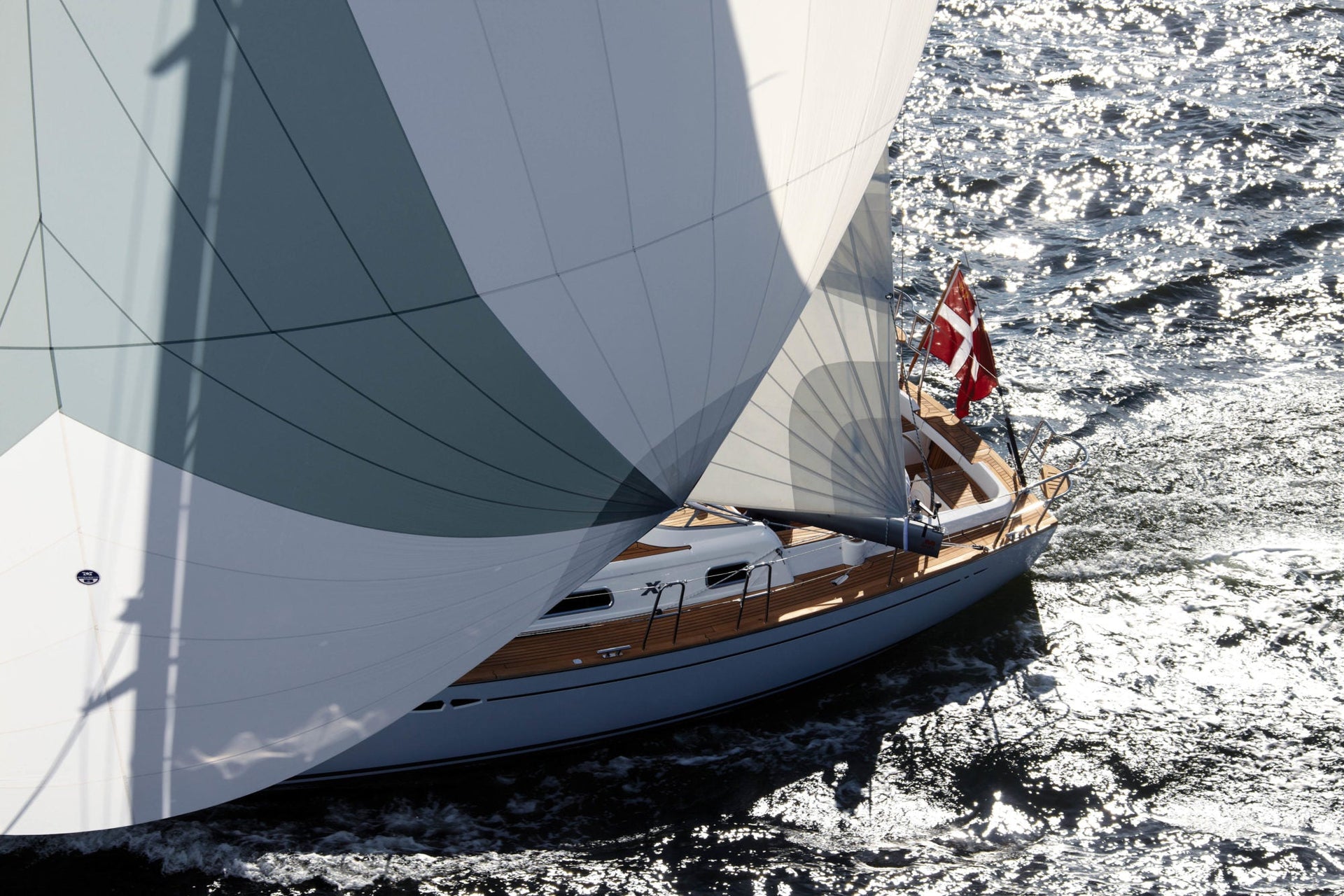
KLART DU SKA SEGLA SPINNAKER PÅ SEMESTERN
KLART DU SKA SEGLA SPINNAKER PÅ SEMESTERN
Det är faktiskt enklare än många tror
En spinnaker ger en enorm prestandaökning på läns och slör i lätta till måttliga vindar. Dessutom är det ett roligt segel som ger seglingen en ny dimension. Vi vet att många tycker att det kan känns svårt och komplicerat, men gör du bara på rätt sätt så är det inget att vara orolig för. Här tar vi en titt på hur man hanterar såväl konventionella spinnakers som asymmetriska cruisingspinnakers – även kallade gennakers. Fokus ligger på avslappnad cruisingsegling med liten besättning.
Sättning av gennaker
En gennaker riggas med ett fall, en halslina i fören och två skot, ett på vardera sidan. Skoten leds genom block längst bak på däck och går sedan framåt till varsin vinsch. Gennaker-skoten kan antingen ledas innanför eller utanför förliket. Båda varianterna fungerar och båda har sina fördelar. Du får helt enkelt testa och se vad som fungerar bäst på din båt. Tänk på att det bästa alternativet kan variera beroende på vindstyrka. För en liten besättning är en spinnakerstrumpa ett riktigt bra hjälpmedel. Seglet packas inuti strumpan som då får en korvliknande form. Eftersom seglet inte fyller på vägen upp är det enkelt att hissa. Väl i topp drar du i strumpans manöverlina, vilket drar ihop strumpan och frigör seglet. För att förhindra att seglet snurrar runt sig själv – vilket kan förorsaka timglas – bör halslinan spännas innan hissning. Ett om möjligt ännu ännu enklare alternativ är att investera i ett bra rullsystem. Numera fungerar de faktiskt bra även för länsbetonade gennakers. Då är det bara att hissa det inrullade seglet, lossa inrullningslinan och skota hem så att seglet rullas ut. När seglet ska ner upprepas manövern, fast i omvänd ordning.
Behöver du en halsstropp?
Ibland kan det vara bra att använda en så kallad halsstropp. Den kopplas till halshornet och fästs runt det inrullade förseglet. Därmed hindras halshornet från att röra sig i sidled. Om förliket på din gennaker är så långt att halshornet hamnar bara lite ovanför pulpiten behövs inte någon halsstropp. Men har du ett kort förlik ger halsstroppen ökad kontroll och stabilare segling.
Sättning av spinnaker
En konventionell spinnaker som sätts på spinnakerbom ger dig ökade trimmöjligheter och oftast högre prestanda. Men det är ett mer komplicerat segel än en gennaker. Även här är spinnakerstrumpa något vi gärna rekommenderar, särskilt om du seglar med liten besättning. Riggning och hissning sker på samma sätt oavsett om du har en strumpa eller inte. Du börjar med att fästa fallet i spinnakerns fallhorn. Därefter sätter du upp bommen, koppla den till lovartsgajen och hänger bommen i liften. Innan du hissar drar du i lovartsgajen tills det främre hornet ligger dikt an mot spinnakerbommen. Så fort spinnakern är i topp tajtar du läskotet så att spinnakern inte börjar rotera och drar upp strumpan. På lite större båtar är det vanligt att man seglar med dubbla gajar och dubbla skot. Bommen kopplas till en gaj som går ner till ett fast block ganska långt fram på däck (strax bakom vanten är lagom) och därifrån till en vinsch. Lähornet trimmas med ett skot som går till ett block längst bak i båten och som därefter leds framöver till ett spärrblock eller en vinsch. I gipparna hanteras spinnakern med enbart skoten, vilket innebär att gajen, som bommen ska fästas på, alltid är obelastad. Detta gör att det aldrig blir tungt att sätta bommen i beslaget på masten.
Nedtagning av gennaker
När du ska ta ner gennakern underlättar det om du plattar ner lite så att gennakern skuggas av storseglet. Släpp på skotet så att seglet faller ihop och dra ner strumpan över seglet. Sedan är det bara att släppa fallet och stuva undan seglet i sin säck, alternativt dra ner det genom fördäcksluckan.
Nedtagning av spinnaker
När du river spinnakern gör du på samma sätt som när du hissade den, fast i omvänd ordning: Lägg dig på öppen slör, släpp läskotet, dra ner strumpan och lägg loss lovartsgajen. Nu är det bara att sänka fallet och stuva undan strumpan med seglet. I hårdare vindar underlättas nedtagningen om du skuggar spinnakern bakom storseglet. Processen inleds, precis som i sekvensen ovan, med att du lägger dig på en öppen slör. Men istället för att bara släppa läskotet, så kan du lägga en lina i en loop runt skotet och använda detta för att straffa ner lähornet mot en punkt precis bakom masten. I och med att du tvingar ner akterliket bakom storseglet tappar spinnakern trycket och blir lättare att hantera.
📸 Amory Ross
READ MORE
READ MORE

NS KLIJENTI NAJBRŽI I U REGATNOJ I U OBITELJSKOJ SKUPINI NA OVOGODIŠNJOJ FIUMANCI
NS KLIJENTI NAJBRŽI I U REGATNOJ I U OBITELJSKOJ SKUPINI NA OVOGODIŠNJOJ FIUMANCI
Ovogodišnja regata Fiumanka ponovno je okupila vrlo impresivan broj sudionika, a među njima i nekoliko najvećih jedrilica na Jadranu. Među njima su se posebno isticali Portopiccolo i Maxi Jena i s obzirom na uvjete sasvim opravdano je bilo među njima očekivati generalnog pobjednika ove manifestacije.
Za razliku od mnogo ranijih izdanja ove Riječke manifestacije pod jedrima, ova je bila izrazito vjetrovita. Na startu je puhalo 10-12 čvorova burice koja je jačala kako se flota približavala prvoj bovi koja je bila postavljena ispred Viktora Lenca.
U toj zoni vjetra je bilo i preko 20 čvorova, tako da je taj dio regatnog polja sigurno pružao i užitak i hrpu adrenalina svima koji su u tim trenucima u laškoj orci jedrili u tom kursu.
Nakon obilaska ove bove regatna skupina jedrila je prema sredini Riječkog zaljeva gdje je bila postavljena druga bova, dok su obiteljski krstaši jedrili direktno natrag prema vrhu Molo Longa.
Do Molo Longa je nakon obilaska druge bove jedrila i regatna skupina, tako da su se u završnoj fazi regate na cilju susreli svi i stvorili vrlo atraktivnu i sliku i situaciju koja se rijetko može vidjeti na regatama.
Što se tiče najvećih, do prve bove nadmetanje Portopiccola i Maxi Jene bilo je poprilično izjednačeno iako je Portopiccolo startao dosta lošije u odnosu na perjanicu Crnogorske regatne flote.
Do preokreta dolazi baš na samoj bovi na kojoj dolazi do pucanja vanga Maxi Jene i to vrlo spretno Talijanska posada iskorištava i ostvaruje prednost koju nisu ispuštali do samog kraja.
Zanimljivo je bilo i u završnom dijelu regate jer je vrlo brzo za najvećima u Riječku luku uplovila i Bubamare, najbrža jedrilica iz obiteljske skupine.
Sve u svemu regata je bila vrlo brza po pitanu obje skupine, a ono što je organizatore posebno veselilo je to što su skoro svi koji su isplovili uspješno dojedrili do cilja.
Bogatu fotogaleriju iz Rijeke možete pronaći na ovom linku.
READ MORE
READ MORE

TRADITIONS AND CHANGE
TRADITIONS AND CHANGE
WVYC RNSA NYC Singlehand/Doublehand Regatta
What’s unique about this regatta? After all, there are now many solo sailing regattas now; the impact of that concept has evolved over the years since it was first launched in the 1970’s by Capt. John Horton of the Royal Naval Sailing Association here in Vancouver BC. Or has it? Now in it’s 48th edition, this regatta’s Ancient Mariners (75+ years ) and Old Salts (65-74 years) remind and inspire the rest of us that one of the milestones of a keelboat sailor is the test of a solo crossing of the Strait of Georgia from Vancouver to Nanaimo, and back the next day. A glance of the winners’ names engraved on the coveted Janet Stamper Memorial trophy for the fastest overall singlehand racer reminds us of those who have gone on to make further impacts in the sailing world. Nowadays a doublehand division has been added - today’s way of developing tomorrow’s solo sailor.
The West Vancouver Yacht Club as the organizing authority had 29 entries this year, a respectable number given the uncertainty that COVID has brought. Racers drifted across the start line at Point Grey bell buoy but the breeze kicked in soon after to allow spinnakers to fly to the mark off Bowen Island, then across to Nanaimo. The Nanaimo Yacht Club graciously hosted a dinner with generous door prizes given out.
The Second day of racing offered fantastic winds that allowed the racers to finish well within the 5pm time limit. The 55’ orange Delta Lifeboat with the Captain and 5 crew members presided over the event, and was a super host for the 4 person Race Committee, allowing us to focus on race management. This vessel built in 1944, had served in the Second World War at Pearl Harbour and was a definite highlight for RC to be aboard.
The nuances of categories from the age categories, to predicted elapsed crossing times, to novice first timers, continue to be a part of the tradition…and a great excuse to participate!
For full results, see here. To learn more about racing or cruising in West Vancouver, connect with a team member from North Sails Vancouver today.
READ MORE
READ MORE
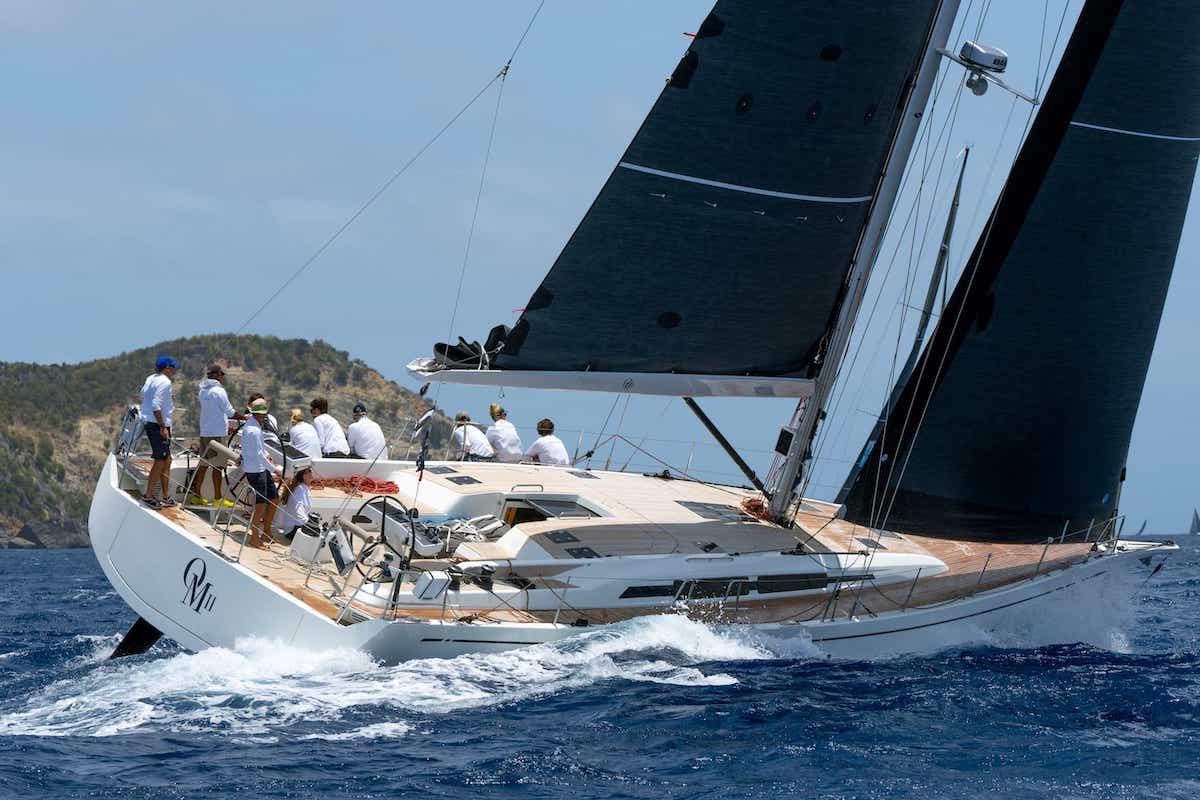
EVEN VOORSTELLEN: NIC BOL
EVEN VOORSTELLEN: NIC BOL
North Sails Expert
Nic Bol (56) geeft sinds 2017 als Sales Manager Benelux leiding aan de North Sails vestigingen in Nederland en België. Met zijn enorme zeilervaring in vele verschillende wedstrijdklassen, adviseert hij klanten om hen zo succesvol en plezierig mogelijk te laten varen. Zeilen is voor Nic een ‘way of life’.
Hoe is North Sails op jouw pad gekomen?
Mijn carrière in de zeilmakerij is gestart in 1993. Toentertijd heb ik agentschappen in Nederland opgezet voor het merk wat ik destijds vertegenwoordigde. Toen de productievestiging in 1997 van merk veranderde, ben ik met hen meegegaan en heb ik mijn eigen dealernetwerk opgebouwd in Nederland. In 2017 werden we benaderd door North Sails. Aangezien de missie en visie van North Sails op dat moment veel beter bij het team en mijzelf paste, hebben we besloten om van koers te veranderen.
Je bent zelf geen zeilmaker. Is dat een bewuste keuze?
Zeker! Mijn achtergrond ligt op het gebied van financial management. Waar ik goed in ben, is het verkopen van zeilen en het verzamelen van goede mensen om mij heen. Momenteel hebben we zowel in Rotterdam als in Antwerpen en Almere een topteam. Aan mij de taak om goed voor deze mensen te zorgen.
Wat is het leukste aan jouw baan?
Uit het meevaren met klanten haal ik de meeste voldoening. Het kost veel weekenden en het is vaak ook hard werken, maar wij hebben een zeer bevoorrechte baan. We brengen graag onze expertise over op onze klanten. Op die manier kunnen zij nog beter, sneller en plezieriger varen. Zij geven vaak veel geld uit, dus voor hen is dat heel belangrijk. Dat begrijpen wij en stellen ons als doel om mensen blij te maken.
📸 Sander van der Borch
Zeil je zelf ook nog weleens voor het plezier?
Met klanten varen is ook heel plezierig. Zo staat er een reis met een Swan 58 in het Caribisch gebied op de planning. Daarnaast verheug ik mij op het Europees Kampioenschap ORC in de Middellandse Zee, maar Laser zeilen blijft eigenlijk het leukste. Ik doe vaak mee aan de avondcompetitie op de Kralingse Plas in Rotterdam. De wind is daar meestal minimaal, maar dan is het juist de kunst om zo hard mogelijk te zeilen. In de Laser ligt het allemaal aan jezelf. Dit is echt de basis van het zeilen en dat maakt het zo leuk.
Wat is je mooiste zeilervaring?
Voordat ik de zeilmakerij in ging, was ik ‘gewoon’ professioneel zeiler. Ik heb regatta’s gevaren die als een reizend circus van Key West naar Japan trokken. In de grote klassen van toen, waaronder de one tonners, 50 voeters en J/47. We zijn twee keer Wereld Kampioen geworden in de J/22, waarvan de tweede titel het meest bijzondere was, aangezien mijn zoon ook meevoer. Ook in de X35 waren we heer en meester. Maar voor het eerst met North Sails ORC Wereld Kampioen worden in 2018, was tevens een mooi moment.
Wat is het beste (zeil)advies dat je ooit hebt gekregen?
Mijn vader zei altijd; werk om te leven, leef niet om te werken. Wij woonden in Zuid-Afrika en na een reis naar Nederland, waar mijn vader had gezeild met vrienden, kocht hij bij terugkomst in Kaapstad een toerboot van 22 voet. Het zeilen heb ik dus vanuit huis meegekregen en het was het beste ingrediënt om te kunnen voldoen aan dat advies van mijn vader. Ook al ben ik aan het werk, vaak voelt het niet zo. Toch verlies ik niet uit het oog dat andere zaken, zoals familie en vrienden ook belangrijk zijn. En dat geef ik ook mee aan mijn team.
READ MORE
READ MORE

WIJ ZIJN VERHUISD!
WIJ ZIJN VERHUISD
Terug in Antwerpen
North Sails België is verhuisd. Het team verruilt de zeilmakerij in Stabroek voor een plek in het nieuwe Antwerp Nautical Center aan het Asiadok, in Antwerpen. Vanaf 1 juni kunt u hier terecht voor advies, onderhoud en service voor uw zeilen.
Na vele jaren gevestigd te zijn in Stabroek, kwam de mogelijkheid om intrek te nemen in het gerenoveerde pand van het Antwerp Nautical Center. “Hier zitten we weer op een centrale plek. Stabroek lag voor veel klanten in het weekend wel redelijk op de route, maar doordeweeks was het te ver om. Daarnaast worden we nu onderdeel van een one-stop-shop,” vertelt Sales Manager Nic Bol. Het Antwerp Nautical Center biedt alle services voor de watersporter, waaronder een scheepswinkel, reparaties, onderhoud en verkoop. Het beschikt over een unieke ligging waardoor het zowel uitstekend via de weg bereikbaar is en in de nabije toekomst ook via het water.
Vernieuwingen zeilmakerij Rotterdam
Naast Antwerpen zijn de klanten in de Benelux ook nog steeds welkom in de zeilmakerij in Rotterdam. Hoewel onze full service zeilmakerij in Rotterdam nog steeds op dezelfde locatie zit, heeft de vestiging wel een grote verbouwing achter de rug. De werkvloer is volledig vernieuwd en er zijn putten gekomen, zodat de naaimachines in de vloer zijn ‘gezonken’. Hierdoor is het werkoppervlak verdubbeld. Ook is er een vide gebouwd, zodat er extra opslagruimte voor zeilen is gecreëerd.
Onze service zeilmakerijen zijn te vinden op onderstaande locaties. HIernaast bent u natuurlijk ook nog steeds van harte welkom in ons kantoor in Almere.
North Sails Antwerpen
Asiadok-Oostkaai 28F
2030 Antwerpen
België
North Sails Rotterdam
Anthonetta Kuijlstraat 7
3066 GS Rotterdam
Nederland
North Sails Almere
Televisieweg 44-46
1322 AM Almere
Nederland
READ MORE
READ MORE
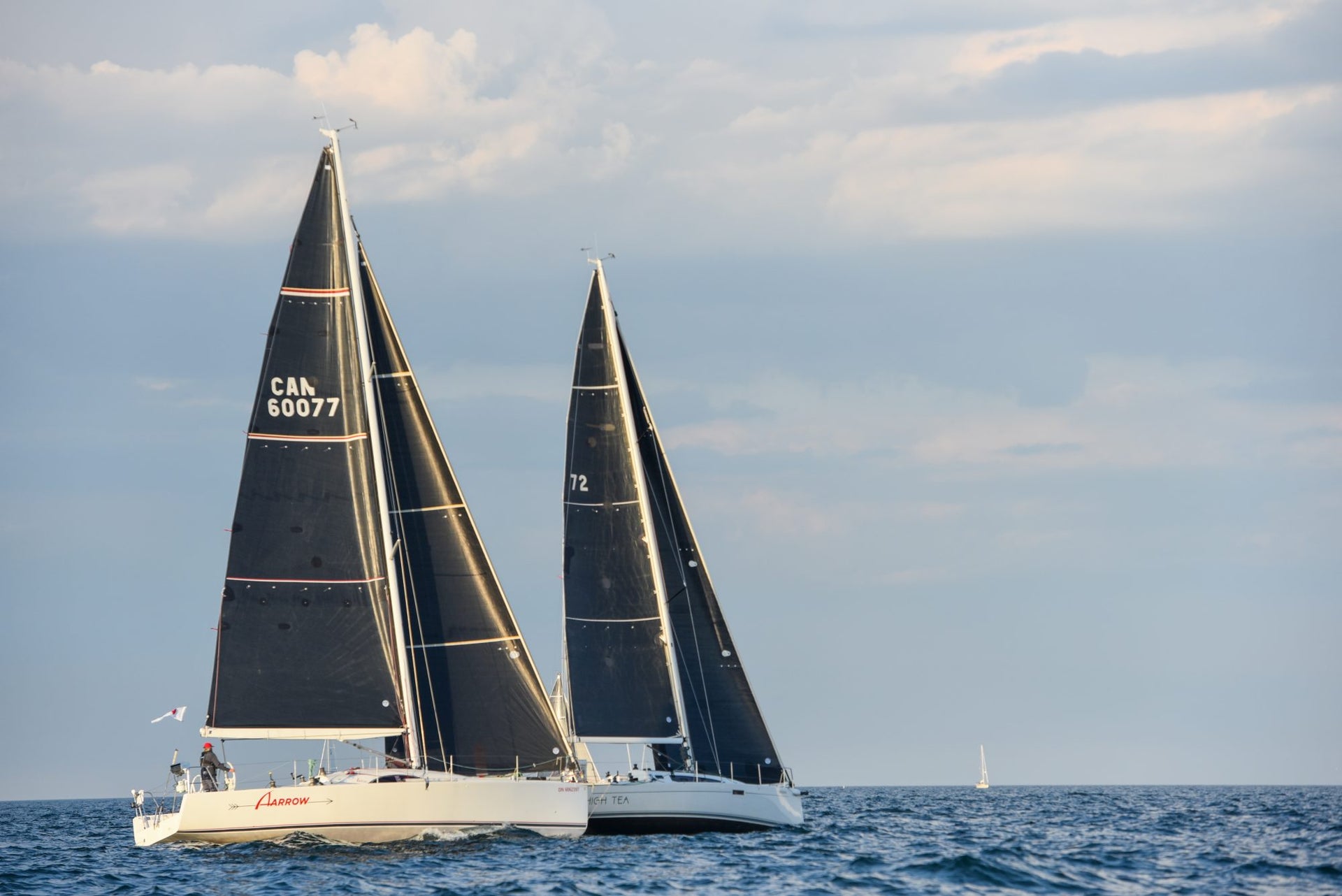
BACK AT IT WITH THE SUSAN HOOD TROPHY RACE
BACK AT IT WITH THE SUSAN HOOD TROPHY RACE
Chilly But Fun For The Overnight Adventure
In classic Susan Hood fashion, it was breeze on at the start for the first three divisions then let off towards the remaining few. 77 boats showed up for the 2022 Susan Hood Trophy Race sponsored by DriveHG. It was exciting to see so many clients out on the water again after trying restrictions for the past two years.
Father-daughter duo Doug Folsetter and Zoe Folsetter were on the line again in their Farr 30, Sabotage. By now, Zoe is a pro at the Susan Hood Trophy Race, having first sailed the 75nm overnight race back in 2017. She even convinced her mom, and fellow sailor Marnie, to join the Sabotage team this year, making the overnight race a family affair. Reflecting on the race at the dock Saturday morning, Zoe shared, “The race was a lot of fun and it was great to do it again. I learned a lot and remembered much more of the race as I hardly slept. The race was as cold as ever but I would do it again! It was good to see a few more younger sailors out there but more kids should give racing like this a try.” Meanwhile her dad Doug Folsetter, skipper and North Sails expert, shares “It’s nice to be back sailing across the lake again. This race always offers up something different. This year it was more about keeping the boat moving towards the next mark and finding the best sail combination to do so. Irrespective of how you do, this race always provides a lesson for the next one.”
Joining the Folsetter family was North Sails designer Phil Williamson who has a wealth of experience and knowledge when it comes to racing on Lake Ontario. On this year’s race, Phil shares, “I am always amazed by the great effort owners and crew put forth to get their boats race ready, provisioned and on the start line. No easy task especially early in the season. The Susan Hood is an excellent race to kick off the distance race season. It gives everyone a chance to shake down their boat, assess sail selections and re-evaluate personal gear. Better to learn, or remember lessons, on a shorter course that can throw many challenges your way.”
North Sails expert Hugh Beaton joined Soto 40 Afterburn for the season kick off. He shares, “ Aside from more jib reaching than we would have liked, it was a beautiful night for racing with a clear sky, some stars and wind that stayed up for the entire race. Congratulations to Hooligan and the other class winners for a well sailed race, and to all competitors for making it a fun event. Thanks must also go to LOOR for making the event possible - Great job.”
Podium sweep for North Sails powered customers Hooligan, Xoomer Xpress, and Afterburn in the ORC division. While High Tea, powered by 3Di Raw, took first in the flying sails short handed division and Arrow took third with their new 3Di Raw mainsail.
Congratulations to all competitors and a big thank you to RC and all the volunteers who helped make the event happen. We look forward to seeing everyone out on the water the rest of the season.
READ MORE
READ MORE

VOOR DE WIND CRUISEN MET VERSCHILLENDE SPINNAKERS
VOOR DE WIND CRUISEN MET VERSCHILLENDE SPINNAKERS
North Sails Heeft Wat Je Nodig Hebt
📸 Laurens Morel
Spinnakers kunnen voor enorme prestaties zorgen bij het voor de wind varen in lichte tot matige wind. En dat is ze maar geraden ook, als je kijkt naar de problemen die ze kunnen veroorzaken! Hoe hanteer en trim je de verschillende spinnakers? We behandelen zowel de gennaker (een asymmetrische cruising spinnaker welke zonder spinnakerboom wordt gevaren), als ook de conventionele spinnaker die met een spinnakerboom wordt gezet.
Een gennaker zetten
Een gennaker wordt bij het hijsen op drie punten verbonden met het schip. Middels de tacklijn op de boeg of boegspriet, de val uit de mast en de schoten welke naar beide zijden van de achtersteven worden geleid. In geval van een kleine bemanning (shorthanded zeilen) wordt aanbevolen om een spinnaker slurf te gebruiken. Deze hoes houdt de gennaker bijeen tijdens het hijsen en strijken van het zeil.
Het zeil wordt in deze beschermende slurf gehesen. Eenmaal in top wordt aan de lijn van de slurf getrokken om de slurf op te halen en het zeil te bevrijden. Om te voorkomen dat het zeil gaat draaien, dient de tacklijn voorafgaand aan het ophalen van de slurf strak te worden gezet.
Wat betreft de gennaker schoten; deze kunnen zowel binnendoor als buitenlangs het gennaker voorlijk worden geleid. Beide mogelijkheden werken en allebei hebben ze voordelen. Door te experimenteren komt u erachter welke manier het beste werkt op uw schip. Dit kan overigens ook variëren per windsterkte. Door de schoten tussen de voorstag en het voorlijk van de gennaker te voeren hoeft u niet om te kijken naar de schoten, maar kan het zeil tijdens het gijpen wel moeilijker overkomen doordat het tussen het voorlijk en de voorstag door moet. Door de schoten buitenlangs het zeil te voeren wordt gijpen makkelijker, maar dient er continu op de losse schoot gelet te worden, zodat deze niet onder het schip terecht komt.
Een spinnaker met boom zetten
Met een conventionele symmetrische spinnaker met spinnakerboom heeft de zeiler over het algemeen meer controle over de projectie van de spinnaker en de vorm van het zeil, dan bij een gennaker. Dit kan prestatie verhogend werken, maar het gaat wel gepaard met de nodige uitdagingen.
Ook bij deze spinnaker wordt voor shorthanded zeilen een slurf aanbevolen. Voor de voorbereidingen en het daadwerkelijke hijsen maakt dit echter niet uit. Het proces verloopt hetzelfde, of er nu wel of geen slurf wordt gebruikt.
Bevestig eerst de ophaler om de spinnakerboom omhoog te houden en een lijn om de boom naar voren te trekken. Sommige schippers geven er de voorkeur aan om ook een lijn naar achteren te zetten, om op die manier de boom tegen te houden. Anderen laten de voordekker hiervoor zorgdragen. In beide gevallen kan er veilig en succesvol worden gezeild, echter met een lijn naar achteren beweegt de boom veel minder tijdens het hijsen en neerhalen van de spinnaker. In alle gevallen bevindt de loefwaartse spinnaker schoot zich in ieder geval aan het uiteinde van de boom.
Zodra de spinnaker hijsklaar is, trekt u de loefschoot naar het einde van de boom. Hierna kan de spinnaker worden gehesen met de val. Zodra deze de top bereikt, moet de schoot worden gevierd om draaiingen van het zeil te voorkomen. Tot slot kan de slurf omhoog worden getrokken, tot deze in top zit. Hierna kunnen de lijnen van de slurf losjes worden vastgemaakt aan de mast en kan het trimmen van de spinnaker middels de schoten beginnen.
Het neerhalen van de gennaker
Om het zeil neer te halen, valt u af met het schip tot bijna voor de wind, zodat het grootzeil de wind uit de gennaker neemt. Daarna moeten de schoten zo ver worden gevierd, dat de gennaker tot een compact pakketje kan worden teruggebracht door de slurf, die van boven naar beneden over de gennaker wordt getrokken. Zodra de slurf volledig over het zeil is getrokken, kunt u de val laten zakken en stopt u de gennaker in de zak op dek, of laat u deze door het luik op het voordek zakken.
De spinnaker weghalen
Om de spinnaker weg te halen, wordt de hijsvolgorde omgekeerd uitgevoerd: creëer voldoende manoeuvreerruimte, vier de schoot, trek de slurf naar beneden, laat de loefschoot vieren en laat de val zakken. Bij een hogere windkracht wordt het makkelijker om de spinnaker weg te halen, wanneer er eerst wordt afgevallen zodat het grootzeil de wind uit de spinnaker wegneemt.
Nog een tip: in plaats van de schoot te vieren, kunt u ook een extra lijn bevestigen aan de schoot, welke naar voren wordt geleid. Op deze manier creëert u een zogenaamde ‘choker’ en trekt u de schoothoek van de spinnaker richting de mast. Na het lossen van de loefschoot kan de slurf naar beneden worden getrokken. Deze techniek - waarbij ook het achterlijk van de spinnaker achter het grootzeil wordt getrokken - zorgt ervoor dat de gehele spinnaker wordt afgedekt door het grootzeil.
Veiligheid voorop: ga zitten!
Bij zeilen staat veiligheid altijd voorop, maar zeker bij shorthanded zeilen en het werken op het voordek, is het van belang om hier extra bij stil te staan. Bij het naar beneden trekken van het zeil, is het aan te raden om te gaan zitten. Op die manier kunt u niet vallen. Zeker op een rollende boot met rond wapperend en glad zeildoek waar u op kunt stappen, is misstappen of overboord vallen zo gebeurt. Ga er dus lekker bij zitten!
📸 Laurens Morel
READ MORE
READ MORE

EVEN VOORSTELLEN: JACCO HUIJGEN
EVEN VOORSTELLEN: JACCO HUIJGEN
North Sails Expert en Operations Manager
📸 Laurens Morel
Jacco Huijgen (33) ondersteunt als Operations Manager Benelux, Nic Bol bij het leiden van de vestigingen in Nederland en België. Hoewel hij het zeilen niet direct met de paplepel heeft meegekregen, is hij inmiddels een bekende in het wedstrijdcircuit met de nodige titels op zijn naam.
Je ouders zeilden niet. Hoe ben je toch met zeilen in aanraking gekomen?
Mijn ouders hadden wel een motorboot. We lagen in de jachthaven van Drimmelen en daar ging een klasgenootje iedere zaterdag zeilen met zijn Centaur. Ik was 12 en vond het prachtig, dus ik stapte ieder weekend aan boord.
Net als Nic ben je geen zeilmaker. Wat is jouw achtergrond?
Ik heb commerciële economie gestudeerd in Breda, waarna ik een minor business management heb gedaan in Engeland. Ook geen studie waar je zeilmaker mee kunt worden, maar letterlijk spelenderwijs ben ik de zeilmakerij in gerold. Eigenlijk al op mijn veertiende. Op een gegeven moment had ik een eigen bootje, een soort van 470. Daar had ik op een gegeven moment nieuwe zeilen voor nodig, maar ik had geen geld. Dus verdiende ik de zeilen door allerlei klusjes te doen voor de zeilmakerij in Drimmelen. Deze zeilmaker was verbonden aan het merk dat Nic destijds vertegenwoordigde, dus zodoende kwam ik met Nic in contact.
En nu ben je onderdeel van North Sails. Hoe is dat?
Het was een gezamenlijk besluit om verder te gaan als North Sails, dus ik sta er voor honderd procent achter. Ik heb nu meer het gevoel dat we onderdeel zijn van een groter geheel. Ook mag ik meedenken over projecten buiten Nederland en België. Het is een prachtig merk met een goede naam en met onze service kunnen we veel betekenen voor wedstrijdzeilers, maar zeker ook voor toerzeilers.
📸 James Tomlinson Photography
Wat houdt jouw functie bij North Sails in?
Wat niet, kun je beter vragen. Officieel ben ik Operations Manager, maar ik pak naast de operationele kant ook backoffice taken op, zoals het inkopen van materialen. Daarnaast krijg ik de kans om nieuwe processen te bedenken en te laten slagen. Zo zijn we bezig met een ERP-systeem, om ook de achtergrondprocessen nog professioneler aan te pakken. We leveren prachtige producten en dat moet weerspiegelen op alle facetten van het bedrijf.
Waar haal je de meeste voldoening uit?
Als we adequaat en à la minute een probleem kunnen oplossen. Wanneer klanten nieuwe zeilen aanschaffen, is dat vaak een grote investering. Dan wil je er ook optimaal van kunnen genieten. Als er problemen voordoen, dan lossen we dat snel op. Als we daarmee iemands weekend kunnen redden, dan worden wij daar ook gelukkig van. Sowieso is het fantastisch om klanten te helpen het beste uit hun boot te halen.
Op welke zeilprestatie ben je het meest trots?
Dat is een lastige keuze.. Ik vaar veel met klanten en verheug me op het Europees Kampioenschap ORC in Italië, waar we met een Dufour gaan varen. Zelf heb ik nog een Laser voor op de Kralingse Plas in Rotterdam, maar als ik moet kiezen, dan heb ik voor mijn gevoel het grootste aandeel (gehad) in de J/80. Afgelopen april ben ik voor derde keer Nederlands Kampioen geworden. Het team is zo goed op elkaar ingespeeld. Als alles zo gesmeerd loopt, geeft me dat nog steeds een kick!
📸 Laurens Morel
READ MORE
READ MORE

EVENT SPOTLIGHT: ABYC COASTAL RACE
EVENT SPOTLIGHT: ABYC COASTAL RACE
An Afternoon On The Water
📸 Arlene Taylor
The 2022 ABYC Open Regatta weekend saw 18 boats race eastward from Ashbridge’s Bay under sunny skies on Sunday May 29th. The Coastal Race is a point-to-point middle-distance race so for both casual sailors and the more seasoned sailor it’s a chance to have a great afternoon on the water. Thanks to our friends at North Sails, three lucky skippers also went home with brag-worthy North Sails swag.
Wendy Loat, a seasoned skipper and owner of Looney Tunes, a 26” Thunderbird, recounts the day on the water.
“The Coastal Race started in a light breeze of about 5 to 6 knots. As always, the trick is deciding to sneak along the shore or to go out into the lake. A small number of us chose the lake, having heard the wind would go from southwest to east in the afternoon. That turned out to be the right decision. The boats that went in shore ran out of wind before the rest of us. Eventually, the wind died completely. We watched the GPS speed drop to zero and saw that no one anywhere was moving. Then we realized that the buck we were on had turned into a broad reach and up went the spinnakers for a sprint to the finish in about 8 knots of easterly wind.”
All boats were welcomed back on shore by the ABYC house band The Weathered Legs while they enjoyed a couple refreshments to hydrate after the long day. Top finisher overall was the smallest boat on the course - a Thunderbird - proving that staying on the lake paid, and that age and treachery can indeed beat youth and strength.
Joanne Chwalek
Chair 2022 ABYC Open Regatta
📸 Arlene Taylor
📸 Arlene Taylor
READ MORE
READ MORE
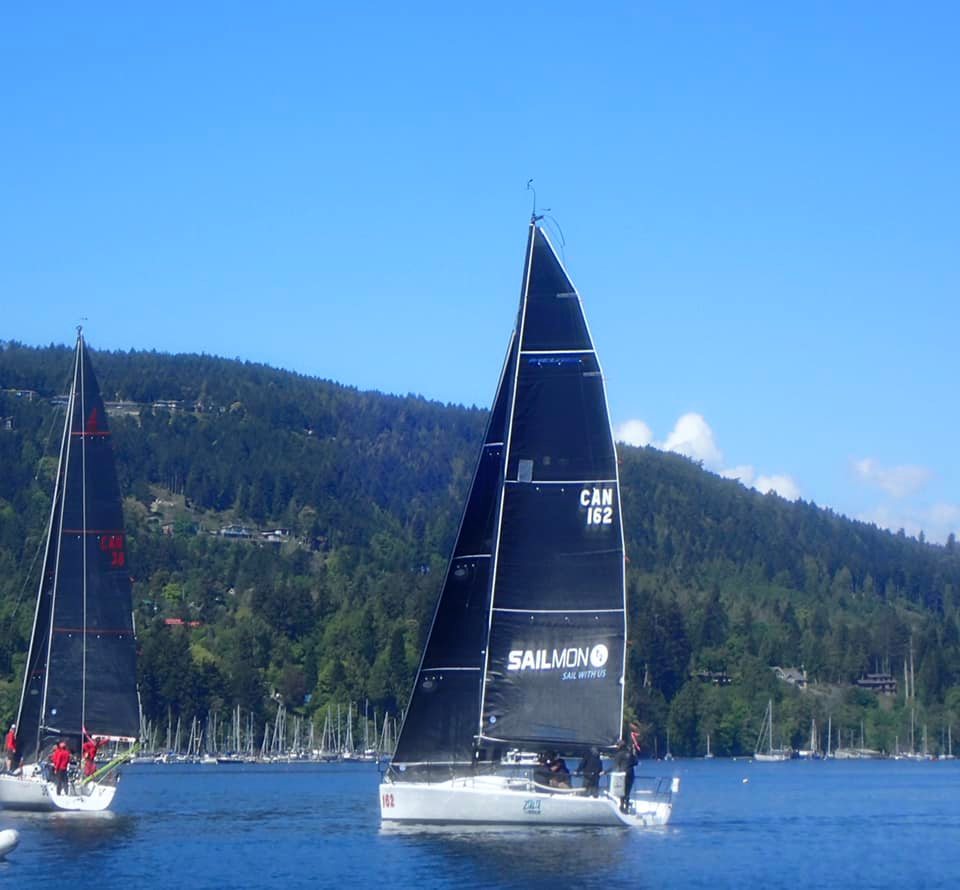
EVENT SPOTLIGHT: ROUND SALT SPRING
EVENT SPOTLIGHT: ROUND SALT SPRING
Great Racing with Great Sailors
Photo Credit: Salt Spring Yacht Club
Round Salt Spring 2022 had a good turn out with 79 boats and ended up being a very challenging race for competitors. Racers showed up on Friday at Salt Spring Yacht Club where a BBQ with live music was held. It was great to see racers before things kicked off and hear all the chatter on which way to go this year.
For the 2022 race, the race management decided to let the sailors decide which way to go around the island. With the forecast calling for sun but minimal wind, most racers thought that clockwise would be the way to go around. If the wind showed up the fast boats might have been able to go counterclockwise and be "heroes".
Almost identical to the round Thetis race earlier this year, as all 7 divisions got out to the start line, a small wind line showed up. Everyone was beating out of Ganges and headed clockwise around the island, a few boats chose a quick end to their race by choosing to go counter clockwise.
Getting around Salt Spring Island is always challenging with many "holes", passes, narrows and currents. After the nice beat out ganges the wind lightened then everyone creeped around the south end of the island and made it through Samson Narrows in the daytime. At about dark most the fleet was at or near southey point, which is the northern point of the island, yes confusing! Some boats retired, others continued to creep down the east side of Salt Spring. The sunset was amazing but it got very cold once the sun went down. I personally was lucky enough to be on a boat that finished around 2 am after being spat out of the captain's passage about 3 times just as the sun was setting. It took us about 5 hours to finish the last 3 miles of the race! After finishing a few crew stayed up to see when the rest of the fleet would come around the corner and head to finish. Just after the sun came up the rest of the fleet that was still racing came around captain passage and all started sailing into the finish. Pretty neat to see boat after boat round the corner and head to the finish after a long night of sailing.
Awards were planned for roughly noon and boats were still coming across the finish line as the race committee did not have a posted finish time. Once the majority of boats were finished most sailors made it up to awards. After 24+ hours of racing there is nothing better than walking around congratulating everyone on their race, hearing stories about the "issues" and "success" getting around the island in little to no wind. The awards were great fun for the 7 different divisions and sailors of all ages accepting awards. The Fugitive Race team had a few sailors under the age of 15 and another boat had a sailor close to 90 years old!
Round Salt Spring was another challenging fun round island race. Congratulations to the Salt Spring Yacht Club and all the volunteers who put on a fantastic race. Looking forward to returning next year!
Full results here.
Photo Credit: Lin Parks
Photo Credit: Salt Spring Yacht Club
Photo Credit: Salt Spring Yacht Club
Photo Credit: Lin Parks
READ MORE
READ MORE
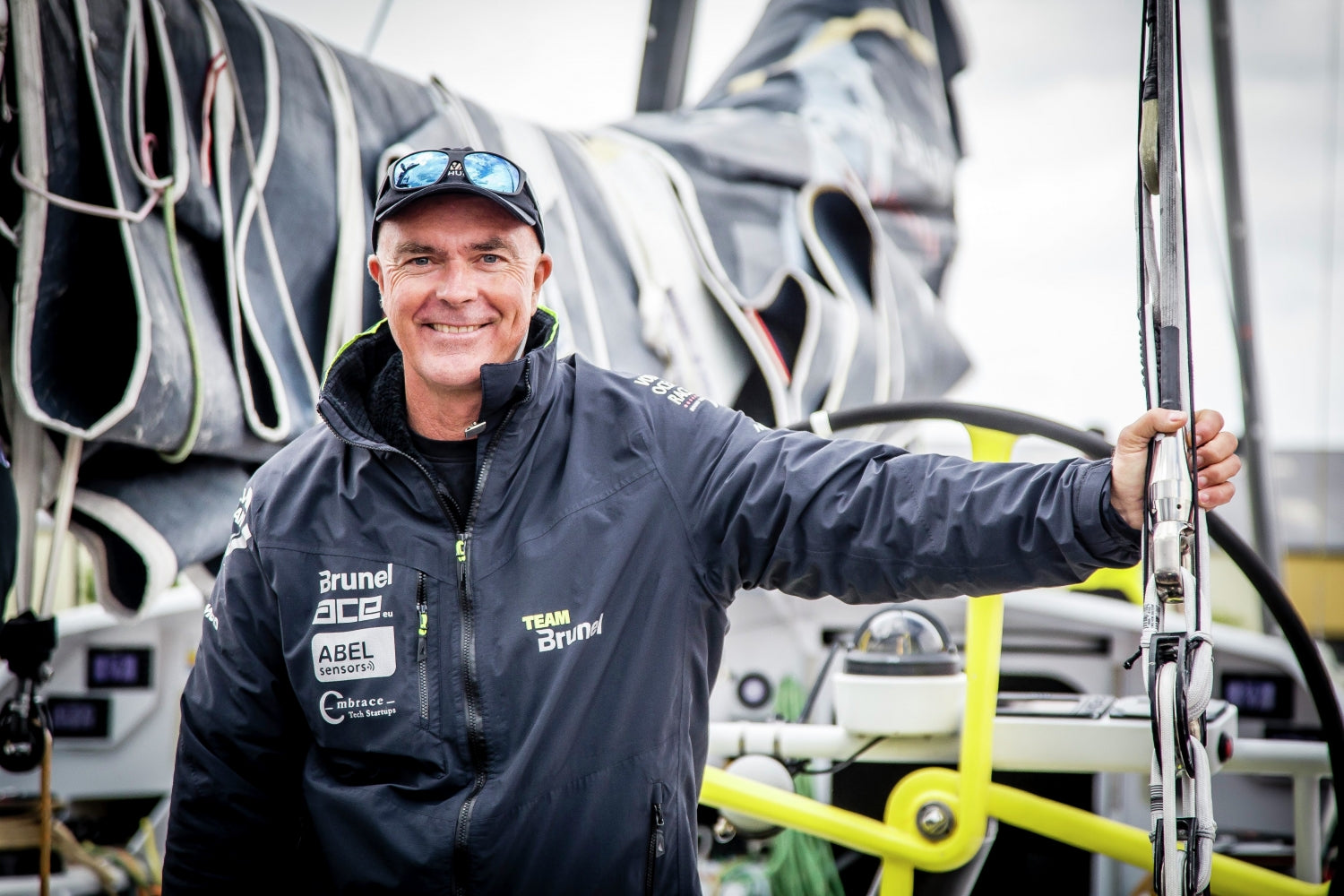
NORTH SAILS ADDS BOUWE BEKKING TO THEIR ROSTER
NORTH SAILS ROSTER BOLSTERED WITH BOUWE BEKKING
One of the Sport’s Most Experienced Sailors Joins North Sails
📸 Jesus Renedo / Volvo AB
North Sails is proud to announce that Bouwe Bekking has joined the brand to support their Grand Prix division. Bekking is considered one of the world’s most accomplished and experienced sailors. The Dutch sailor has participated in eight around-the-world races, his first being the 1985-86 Whitbread onboard Philips Innovator and his most recent as skipper of Team Brunel during the Volvo Ocean Race 2014-15. His experience has earned him the moniker “Volvo Ocean Race Legend.”
Beyond endurance ocean racing, Bekking has extensive sailing experience on various boats. Bekking is a six-time World Champion in multiple classes and has claimed dozens of European and National titles. His name is also in-demand within Superyachts, where he was recently named tactician to J-Class Svea.
“Bouwe is an undisputed opinion leader in our sport,” says Ken Read, North Sails President. “He is highly respected amongst his peers and a familiar face to the global sailing audience. His expertise is a huge advantage to North Sails and our clients. As a result, Bouwe is uniquely positioned to add immediate value to our business. His input will play an important role in ensuring North Sails remains the leader in our sport.”
“Direct feedback from the field is critical to advancing the performance and application of our products,” explains Paul Westlake, Grand Prix Leader, and North Sails Executive Vice President. “Bouwe is actively using North Sails products across a wide range of boats and conditions. His candid and direct feedback is guaranteed to impact future product developments.”
“I have worked with the North Sails team at various points and with numerous projects throughout my sailing career, explains Bekking. “Whether flying off 40-foot waves in the Southern Ocean or inshore day racing, I’ve seen the evolution of the products. Product development and innovation are of particular interest, and I’m looking forward to working closely with a team who shares my ‘let’s give it a go’ attitude.”
Bekking will maintain his robust professional sailing career while supporting North Sails within Grand Prix sailing. He will work closely with his sailing peers, the North product development team, and sales leaders.
The “Volvo Ocean Race Legend” himself recently sat down with Ken Read and master sailmaker Nathan Quirk for Episode 4 of Loft 57, the North Sails Podcast. Collectively, our guests’ experience includes hundreds of thousands of offshore racing miles; Bekking onboard as a sailor, and Quirk in the sail repair loft.
Subscribe to the Loft 57 podcast via Spotify, Apple Podcasts or connect with the North Sails community on Facebook and Instagram. Loft 57 is a North Sails production.
📸 Jesus Renedo / Volvo AB
READ MORE
READ MORE
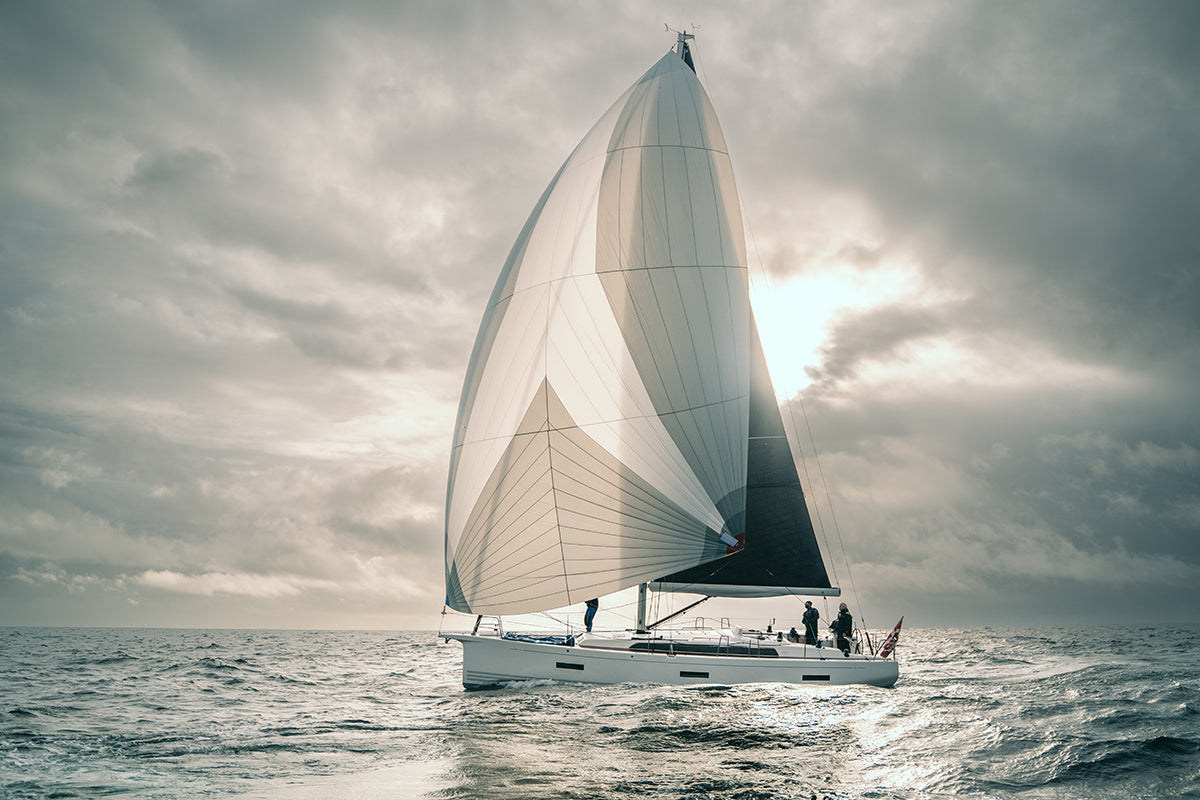
THE PERFECT MATCH: NORTH SAILS + X-YACHTS
The collaboration is based on the fact that a fast, high-quality boat needs a sail inventory to match. And that’s exactly what the collaboration between X-Yachts and North Sails does.
READ MORE
READ MORE
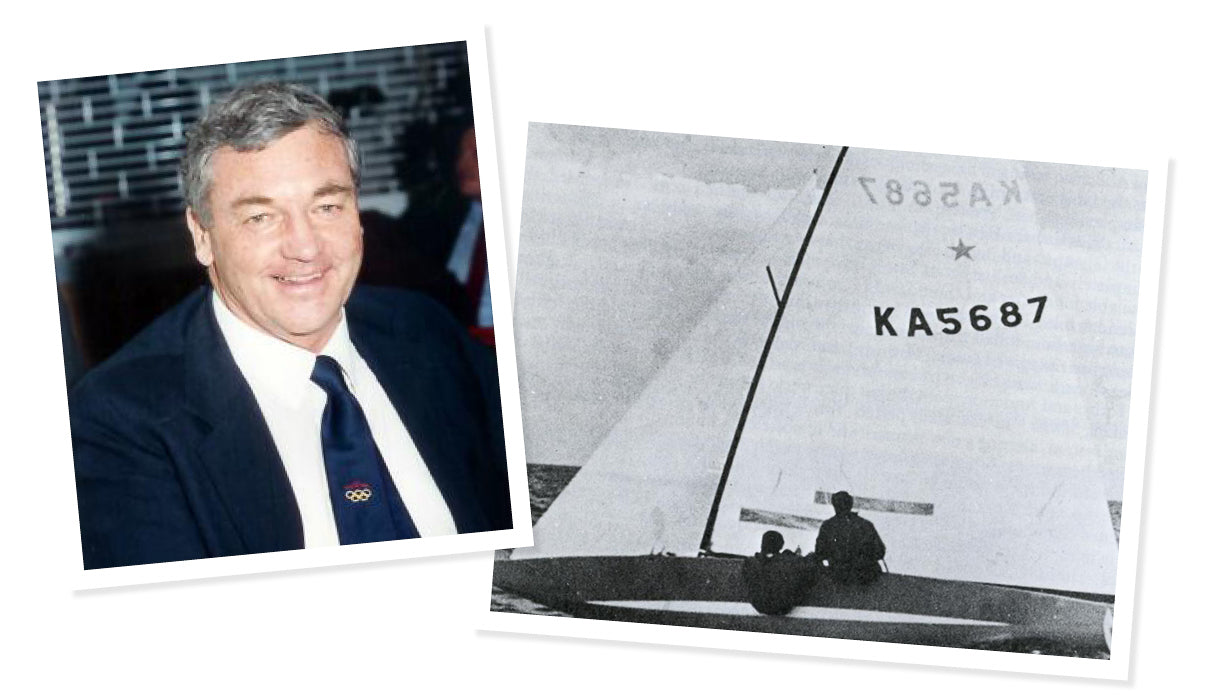
CELEBRATING DAVID FORBES AND HIS VISION FOR THE FUTURE
CELEBRATING DAVID FORBES & HIS VISION FOR THE FUTURE
One of North Sails Australia’s Early Leaders
It’s with great sadness that we mourn the loss of one of North Sails Australia’s early leaders, David Forbes. A successful businessman and close friend of North Sails founder Lowell North, David embraced the position of interim manager of the loft in the late 1970s, to find stability and determine the future of the company.
David’s vision to ensure North Sails Australia was a success led him to Michael Coxon, appointing him Manager of the loft in 1982 which was the beginning of a life-long friendship.
Michael Coxon remembers his mentor sharing his vision clearly, “In the beginning, David came into the loft one to two days a week.” Coxon said. “And the other days, had me out to his business where we’d look at everything from business admin, to the production lines. I spent my time learning from David and he gave me confidence and taught me what business was about. On weekends we sailed Etchells and yachts together where my higher level of education continued on the water under Dave's watchful eye. After a year under Dave's mentorship Dave recommended I purchase North Sails Australia, at which point I stated that we needed to introduce a big boat specialist to compliment my sailmaking, one design, skiff and dinghy expertise. Dave introduced Grant Simmer, fresh from winning the America's Cup as navigator on Australia 11. Dave showed great foresight in pairing Grant and I, recognizing our diverse skills complemented one another and over a 17 year partnership we positioned North Sails Australia to be a highly respected business within the North International Group.”
Forbes had great foresight in both business and on the water as an Olympic Gold Medalist in the Star Class from the Munich 1972 Olympics.
Coxon says, “Dave is the most naturally gifted yachtsman I’ve ever sailed with. He had the ability to feel the boat, and know what to tweak. Balance, trim, sail shape, rig tune, Dave could always put his finger on it after a few minutes on the helm. Naturally gifted and always generously investing in me."
“I became his protégé. I could always call him up and get his advice. If I’ve picked up just a little bit of his skill set, I know I’m better off for it. He’s helped me in both sailing and business and I wouldn’t be where I am today without him.”
“He touched so many people, and there’s no one else in my life who’s helped me more than Dave - though he’d deny it and laugh at me saying that.”
Coxon finished, “Dave Forbes vision positioned North Sails Australia to be where it is today.”
David was a friend to many, and North Sails would like to send our condolences to David's family and friends.
READ MORE
READ MORE
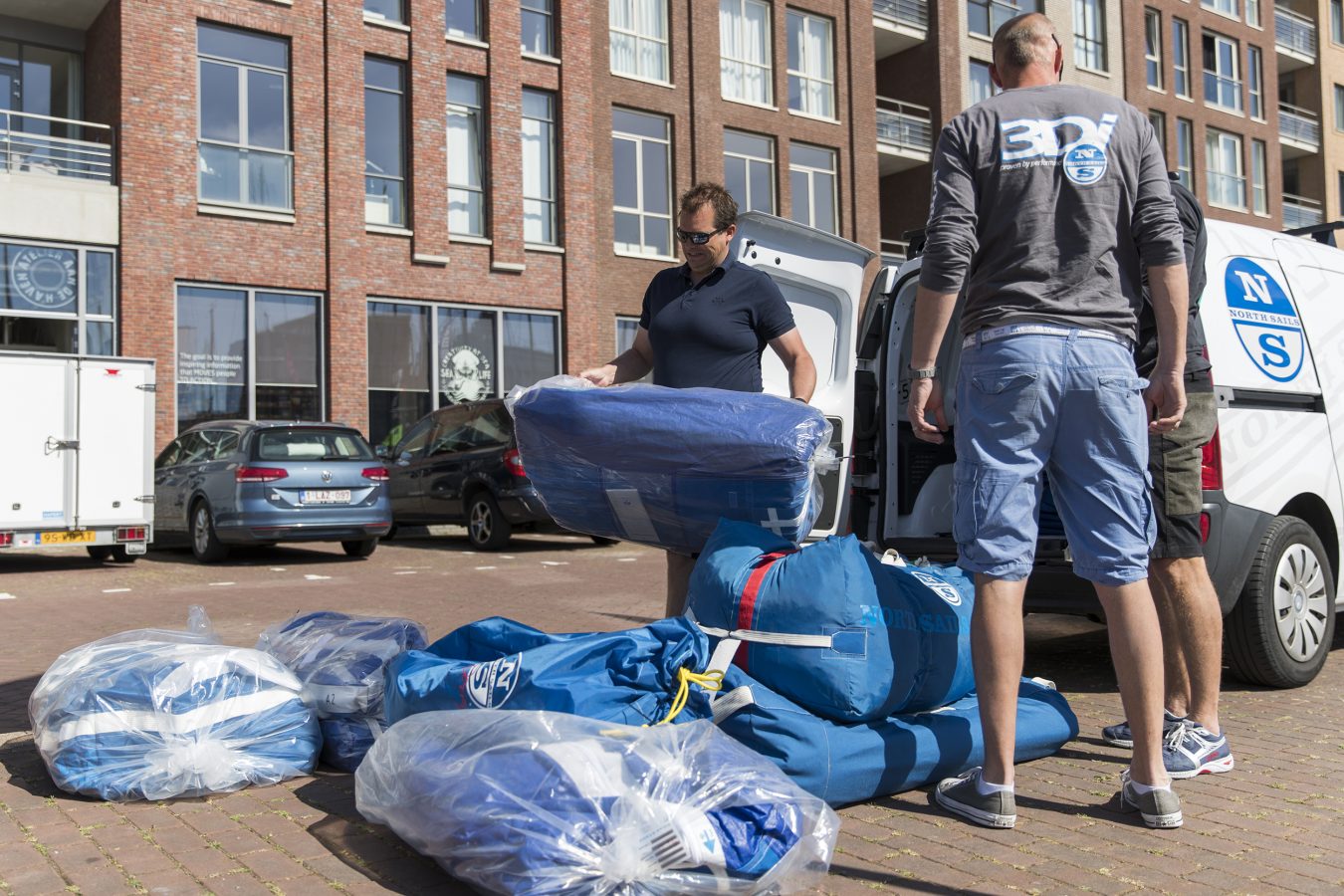
NORTH SAILS KLANTEN TONEN KRACHTEN TIJDENS NSR OFFSHORES | REGATTA SERVICE TIJDENS NSR INSHORES
North Sails klanten tonen krachten tijdens NSR Offshores | Regatta Service tijdens NSR Inshores
Veel zeilers in top drie Vuurschepen Race en North Sea Race
Prachtig resultaten...! In de uitslagen van de Vuurschepen Race en North Sea Race zijn veel North Sails klanten in de top drie beland. De Vuurschepen Race werd op 24 mei voor de 75 ste keer gevaren en voerde het veld van Scheveningen naar Harwich. De North Sea Race vormde traditiegetrouw de terugreis, welke op 27 mei van start ging. In de verschillende ORC, IRC en double handed klassen gingen de deelnemers de strijd met elkaar aan.
De resultaten van de twee races maakt Jacco Huijgen, Operations Manager North Sails Benelux, trots. “In alle klassen zijn onze klanten hoog geëindigd. Dan zie je dat alle energie die we samen met de klanten in de voorbereiding hebben gestoken, zich ook echt uitbetaald. Het is voor ons niet alleen een kwestie van goede zeilen leveren, maar we denken graag mee om de zeilers zo optimaal mogelijk aan het raceseizoen te laten beginnen. Een zeilgarderobe die goed op elkaar aansluit en geschikt is voor de geplande wedstrijden, is hierbij key.”
Komend weekend, van 4 tot en met 6 juni, staan de Inshore races van de North Sea Regatta op het programma. Deze worden gevaren vanuit Scheveningen. Voor de ORC 1 en ORC 2 worden de resultaten van de Inshore races opgeteld bij de uitslagen van de Vuurschepen Race en North Sea Race. De overall winnaar wordt de nieuwe Nederlands Kampioen ORC. Het wordt dus een spannend weekend...
Regatta service tijdens NSR Inshore races
North Sails is tijdens de Inshore races aanwezig om eventuele schades aan zeilen, waar mogelijk, te herstellen. Heeft u schade? Neem dan na de wedstrijden zo snel mogelijk contact met ons op. U vindt onze trailer op het stallingsterrein van Malherbe, direct aan de haven. Iedere wedstrijddag vertrekt de bus met reparaties om 17.30u uit Scheveningen, zodat u de volgende dag weer gebruik kunt maken van uw favoriete zeilen.
Contactpersonen tijdens NSR Inshores
Nic Bol(ORC 2, X-362 Extra Djinn ): +31 (0)6 55376636
Bart Overgaauw(SB20 Manta) : +31 (0)6 50730512
Wouter Köllmann(ORC 2 J99 Lallekönig): +31 (0)6 42156449
Tom van der Vecht(ORC 1 Luffe 40 Kreutz Ass): +31 (0)6 46140346
Joost Houweling(Finn): +31 (0)6 22798462
Trots op onze klanten
De volgende klanten zijn op het podium beland bij de Vuurschepen Race en North Sea Race:
Vuurschepen race
ORC 1
1: Frans van Capelle, Moana, J122
2: Ronald Prins, Sailmon JR, J122
3: Frederic de Visser, Spitfire, J121
IRC 1
1: Frans van Capelle, Moana, J122
2: Ronald Prins, Sailmon JR, J122
ORC 2/ IRC 2
1: Michel Dorsman, Extra Djinn, X362 Sport
ORC 3
1: Simeon Tienpont, Fever, J35
ORC Double handed
2: Willem Schopman, Waverider, Sun Fast 3200
3: Paul Manuel, Jongeheer, J99
IRC Doublehanded
1: Willem Schopman, Waverider, Sun Fast 3200
North Sea race
IRC Zero
1: Van Uden, Gert Jan Poortman, Ker 46
2: Oyster cathcer xxxv, 2: Richard Matthews, CF520
IRC 1
1: Il Corvo, Astrid Vin, JPK 1180
2: Frans van Capelle, Moana, J122
IRC 3
1: Michel Dorsman, Extra Djinn, X362 Sport
2: Richard Palmeer, Jangada, JPK 1010
3: Willem Schopman, Waverider, Sun Fast 3200
ORC 1
1: Van Uden, Gert Jan Poortman, Ker 46
2: Frans van Capelle, Moana, J122
3; Jan-Friso Blacquiere, Blacq Magic, TH38
ORC 2
2: Paul Manuel, Jongeheer, J99
3: Michel Dorsman, Extra Djinn, X362 Sport
IRC Double handed
1: Richard Palmeer, Jangada, JPK 1010
2: Willem Schopman, Waverider, Sun Fast 3200
ORC Double handed
2: Richard Palmeer, Jangada, JPK 1010
3: Willem Schopman, Waverider, Sun Fast 3200
READ MORE
READ MORE
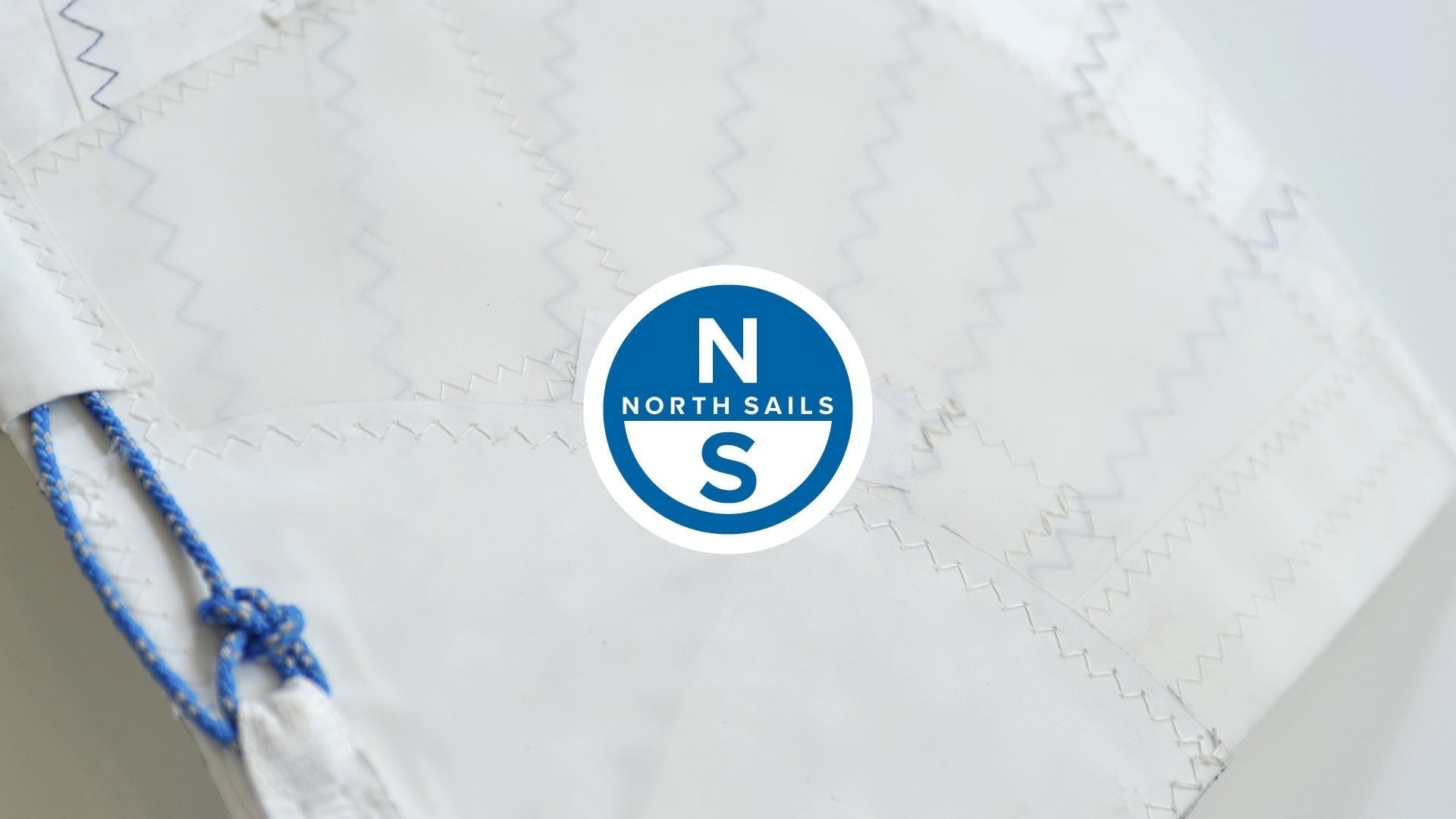
SOLO TUNING GUIDE
The Solo is a boat with a relatively simple rig. Once you are on the water there is little adjustment possible. It is essential therefore that you get the right rig settings before launching. When setting up a new boat you need to establish the following:
MAST FOOT POSITION
In the past we suggested two mast foot positions, but in recent years when sailing in a mixed upwind/downwind race track I have found I liked the one setting for all conditions so this is what we would recommend. Measuring from the front edge of the mast foot to the outside edge of the transom should be as close to 3065mm as possible. Please see Fig 1, 1a, 1b showing how to take this measurement.
PLEASE NOTE with this setting the boom will be lower, if you have limited mobility, sail at a venue where you are constantly tacking or on a club course with more offwind than upwind please feel free to move the heel aft to a setting nearer 3052 mm to keep the boom higher, make it easier to tack and bias performance more to downwind. Secondary to this is boats prior to approximately 2008 may struggle to move the heel forward to this measurement due to the bulkhead position.
Fig 1
Fig 1a
Fig 1b
MAST RAKE
This is controlled by forestay tension. Set the forestay so its tight when the back of the mast hits the back of the mast gate, then release the forestay tension by 2 holes on the adjuster, this is the base rake. For those with a mast cutout [please check your mast manufacturer for warranty on this] you can set the average mast rake with a tape measure, should be set at 5940mm measured using a tape measure on the halyard hoisted to your black band and then to the top aft edge of your transom bar. To ensure the hoist of the halyard is at the correct height the tape should read 5030mm when held down the mast to the top of the gooseneck band, this is then at the correct hoist height and can easily be replicated, now you can proceed to measure the rake. See Fig 2 & 2a showing how to do this.
Fig 2
Fig 2a
SHROUD TENSION
Update for P-4/F-4/L-4 designs - These designs are setup best with a slacker rig tune than previous designs. This allows the mast to bend more, both fore/aft and sideways and provides a less critical For these sails we would recommend getting setup with a light-medium/All purpose tension and then easing the shrouds further for strong/overpowered conditions. This crossover between the tensions is a combination of wind strength, sea conditions and helm weight. For example if you are 90kg sailing inland on flat water you will likely 'ease' tension at a windspeed 6-7kts higher than a 76kg sailor sailing in choppy conditions. As a baseline we would suggest 16kts being the crossover to work up or down from.To get to the correct tension firstly you should find your datum, this is done onshore without a sail hoisted. To do this mark your shrouds adjusters at the position where your shrouds just come into tension when the mast touches the front of the mast gate - this is your datum. From this position 'slacken' your shrouds 1 Half of a hole. (see Pic to confirm). This position is now your light-medium/all-purpose shroud tension and the one we would advise using if you are looking for a single all purpose setup. For strong/overpowered conditions we would advise to slacken your shrouds a further 1 half of a hole from your light-medium/AP tension.Please note - for previous generation sails (P-3/F-3/L-3 etc etc) please use the Datum as an all purpose setup. If you are over 90kgs or sail predominantly on flat water then tighten 1 half of a hole from this datum tension.
CENTREBOARD POSITION
Turn the boat on it’s side and drop the board and mark the handle when the leading edge is vertical (LV), relative to the bottom of the case. Then lift the board until the trailing edge is vertical (TV) and mark the handle. Then mark the handle with 20mm spacings to guide when you lift the board further as the breeze builds.
MAST CHOCK
Use 1 x 10mm chock to be used as per the tuning matrix below.
Control
0-5 knots
6-10 knots
11-16 knots
17+ knots
Centreboard
Leading edge vertical
Trailing edge vertical
40mm up from TV mark
40-100mm up from TV mark
Chock
Chock behind mast
Chock in front
Chock in front
Chock in front
Kicker
Slack
In tension to stop boom
Tension to control leech
Max. kicker
Outhaul
50mm depth in foot
100mm depth in foot
50-100mm depth in foot until overpowered then tension progressively
Max. outhaul with crease along foot
Inhaul
15mm from back of mast
10mm from back of mast
5mm from back of mast
0-5mm from back of mast
Traveller
Positioned so that boom end is over inboard edge of sidedeck
Positioned so boom end is between inboard & outboard edge of sidedeck
Positioned so boom end is over gunwhale, until overpowered then vang sheet and keep traveller on centreline
On centreline
Cunningham
Slack
Slack snug to remove larger wrinkles on luff
Tension progressively to depower
Tension to depower
Because Solos are relatively easy to sail a boatspeed advantage is hard to find. The settings that have been used for this tuning guide are based around a Solo sailor weighing 8085kg using a Selden D+ mast and North Sail. However these settings still apply providing you use the correct mast and sail combination for your weight.
The settings are dependent on sea state, weight, mast, sail and fitness. So in a force 3 a 90kg helm would be on full power settings whereas a 75kg helm with the same rig would be on overpowered settings. The overlap between settings can be achieved with a combination of rig, sail and centreboard adjustment. There are different ways to achieve the same result. If for example you are caught out with light/medium settings in strong breeze raise the centreboard further, use more kicker tension (to bend the mast) cunningham and outhaul tension.
Use a combination of mainsheet tension, kicker tension and traveller position to find the best speed upwind. As a general rule start in light winds with the traveller positioned so that the boom end is over the inboard edge of the sidetank and mainsheet tensioned so that all the leech tell tails are flying. As the wind increases use more mainsheet tension and ease the traveller to stop the boom getting too close to the centreline. Kicker tension in light winds should be set just slack so that it controls leech twist out of tacks. As the breeze increases and you have to ease the mainsheet to keep the boat flat use kicker to control the leech profile, and adjust the traveller (usually move inboard) to keep the boom roughly over the outside edge of the quarter. Once fully overpowered use kicker upwind to increase low down mast bend and flatten the mainsail and pull the traveller to the centreline and leave it.
In a Solo body position is extremely important. In very light airs your body weight should be centred on the thwart, but do not move forward of this point however light it is. Once you are sat on the side deck move back so that your front leg is pressed against the thwart. As you become fully hiked move back to 150mm from thwart, and then up to 300mm as the wind increases.
OFFWIND
Use only enough centreboard so that the rudder is neutral when the boat is flat with the following sail settings:
LIGHT AIRS
Leave the outhaul on its upwind setting. The inhaul (if adjustable) should be released so its slack. The kicker should be slack or just in tension to stop the leech opening too much in the gusts.
MEDIUM AIRS
Ease outhaul so that lens foot is fully eased, ease the inhaul until slack. Set the kicker so that the top batten flies approximately 90 degrees to the boat, this allows the leech to open and maximise speed. If planing is a possibility keep the boat as flat as possible and take the mainsheet 2:1 from the boom.
HEAVY AIRS
Only ease the outhaul on tighter reaches if you can use more power. Ease Inhaul until slack. Once on the broader reaches and run ease outhaul to allow a little depth in the foot. Set the kicker as for medium airs or ease to depower on the reaches. This is also very quick on the run to allow running by the lee. By spending time on the water preferably with a tuning partner you will be able to establish the right settings for all conditions. This will allow you to concentrate more of your energies on finding the quickest way round the course.
READ MORE
READ MORE

LOFT 57 PODCAST: THE EXTREME TESTING GROUND
Offshore sailing has seen a dramatic rise in popularity and awareness. Ocean Race legend Bouwe Bekking joins Ken Read on Episode 4 of the North Sails podcast.
READ MORE
READ MORE
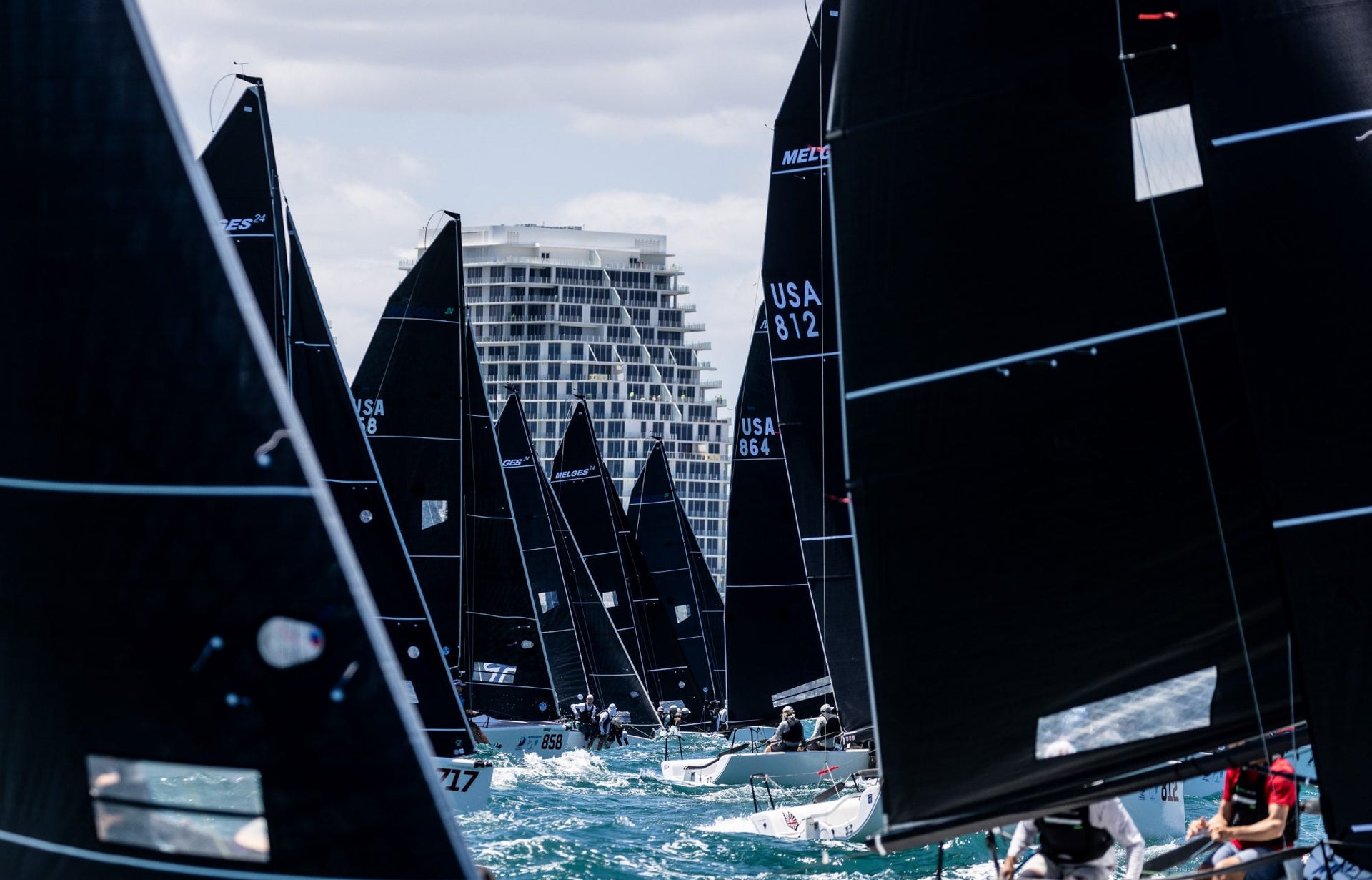
PETER DUNCAN AND TEAM CROWNED 2022 MELGES 24 WORLD CHAMPIONS
PETER DUNCAN AND TEAM CROWNED 2022 MELGES 24 WORLD CHAMPIONS
Coach Chris Larson and Tactician Victor Diaz de Leon Break Down the Win
📸 Matias Capizzano
After a two-year World Championship hiatus, Peter Duncan’s Raza Mixta team proudly hoisted the Melges Performance Sailboats Trophy at the 2022 Melges 24 Class Championship this May in Fort Lauderdale, Florida.
And while Duncan and his crew of Erik Shampain, Morgan Trubovich, Victor Diaz De Leon and Matt Pistay were coming in hot from a successful winter season, winning the Worlds was no easy feat. Getting to the top of the podium required the team to claw back points from deep within the fleet.
North Sails had a chance to check in after their win and get the inside scoop on what went on. Raza Mixta’s tactician Victor Diaz De Leon and team coach, North Sails Expert Chris Larson were happy to walk us through their experience; how it felt and what it took to come from behind.
The Road to Worlds:
Winning a World Championship is never as easy as just showing up and racing hard. Typically there is a long road and hard work that leads a team to the top and Raza Mixta is no exception, with various lead up events and multiple players contributing to reaching the top. Raza Mixta is a young team in terms of sailing together, but the collective experience of all the players is what made the difference.
Pulling veteran talent from the Melges 24 fleet with Shampain and Pistay, mixing in the talented J/70 team of Duncan, Diaz de Leon and Trubovich and rounding out the team with deep coaching experience paid off. Raza Mixta won the class at the Southernmost Regatta and was named first overall in the Bacardi Series before winning the Worlds. The team sailed hard and coach Chris Larson took charge of organizing schedules, training sessions, sail inventory, and boat preparation. According to Diaz de Leon, “Larson was definitely instrumental in us being able to pull it off.”
📸 Sharon Green
Raza Mixta’s Rebound:
A come from behind story. After two thirteenth place finishes on day one, team Raza Mixta found they barely made the top ten, ninth place at the end of the day. Duncan remained optimistic and kept team morale high, but at the same time the team knew they had work to do to get to the finish.
After-dinner debriefs, powerpoint presentations on sail trim and competitors, Larson left nothing to chance. There was ground to make up and still time to come out ahead. “Each day I would be on the water with the team photographing and videoing all of their movements. Later, as I presented I would include details such as sail twist, sheet tension, jib car position, traveler position, forestay sag, rig tension and sail scanning. We would then review video from each maneuver enabling the team to perfect their boat handling.” It worked.
As the event progressed, with Duncan doing a great job getting the boat off the line, constant communication from Shampain, and Trubovich and Pistay hiking, De Leon did what he does best, working his way through the fleet, and rounding the first weather mark in the front pack. From there, the team let their speed and boat handling take over by gaining at every corner of the race track. Having used their throw-out on day one, they could not afford another double-digit finish. By day four they turned an insurmountable deficit to a six point lead and never looked back.
Sails That Deliver Results
Raza Mixta used the class MNi-2 mainsail, Ji-4 Jib and P1 Spinnaker for the entirety of the event. Speed was a strength for them, and they had confidence in their set-up and sails throughout the vast range of conditions seen throughout the event.
The Ji-4’s round entry helped with steering and gave the boat enough power to get through the chop. And Larson thinks that the MNi-2 mainsail is a great all around sail, “It flattens out nicely, but still has shape in the back-end of the sail. This was ideal when the conditions warranted sailing with more twist than normal.”
According to Diaz de Leon “We felt very comfortable with our sail set up and our rig tune set up. We were going well in the light air, medium air and heavy air so we felt confident in our speed. Chris Larson was again a very helpful coach that worked really hard on the rig tune and sail selection.”
Clearly the right choices were made and the hard work paid off. Congratulations Team Raza Mixta.
Hard-won expertise from over six decades of success is built into every sail we make.
This is why North Sails wins more races than any other sailmaker.
Remember to check out the #NSVictoryList and tag us in your posts for a chance to be featured on the wall!
#NSVICTORYLIST
📸 Matias Capizzano
READ MORE
READ MORE
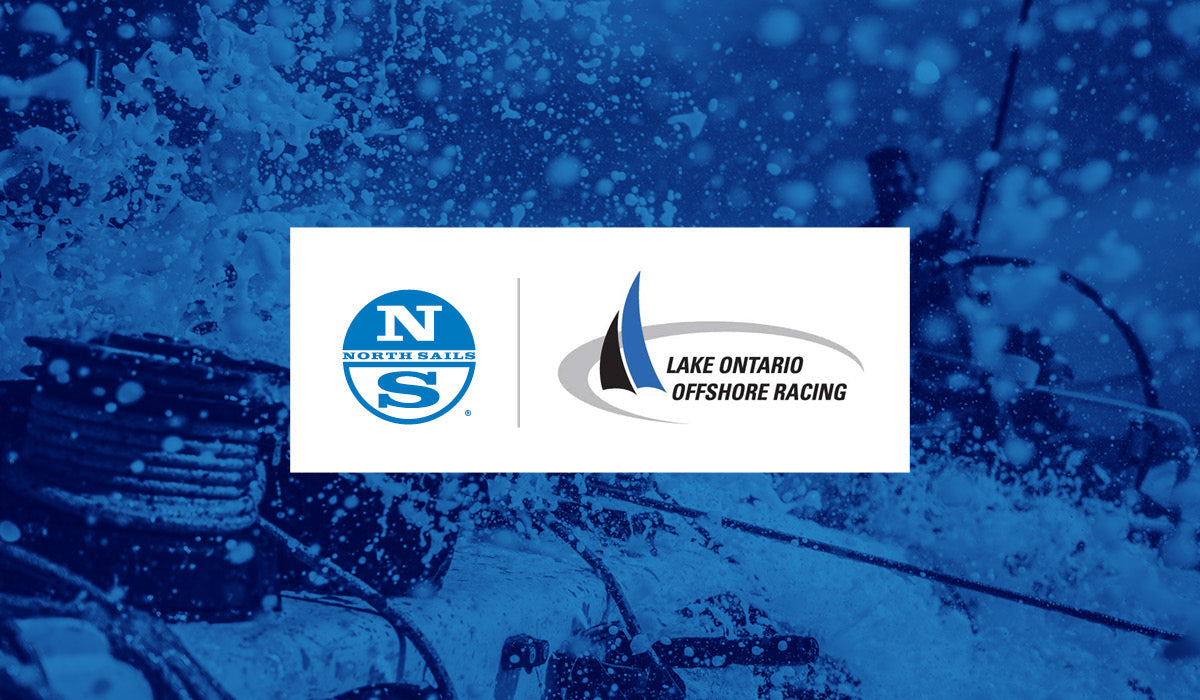
NORTH SAILS CONTINUES PARTNERSHIP WITH LOOR AS EXCLUSIVE SAILMAKER
NORTH SAILS CONTINUES PARTNERSHIP WITH LOOR AS EXCLUSIVE SAILMAKER
Supporting Local Distance Racing
A partnership spanning over 15 years, North Sails is proud to continue its support of LOOR racing for the 2022 season. North Sails will sponsor the Susan Hood Trophy Race and Lake Ontario 300 presented by DriveHG, as well as the LOSHRS series, as the exclusive sailmaker.
After a year without the races and then a hybrid version in 2021, we are excited for these races to come back like old times. They are such staples in the sailing community and we know many sailors are excited for them.” shares Hugh Beaton of the Toronto loft of North Sails. He adds, “These events offer many sailors the opportunity to test their overnight skills and distance racing skills. We at North Sails are pleased to continue our support as exclusive sailmaker sponsor for all events; continuing our support for racers and racing on the Great Lakes.”
The coveted embroidered flags will make a return for the 2022 season. As well, North Sails will provide regatta repair, as in previous years, with post event sail pick up for the Susan Hood Trophy Race and Lake Ontario 300. Aligning with Access Abilities, North Sails will offer a special prize to the LOSHRS fleet.
“The partnership Lake Ontario Offshore Racing (LOOR) has with North Sails is a natural and synergistic one and we are thrilled that once again we will be working together to help promote distance racing on Lake Ontario.” shares Monica Doedens, chair of Lake Ontario Offshore Racing.
Lake Ontario Offshore Racing (LOOR) of the Port Credit Yacht Club (PCYC), is dedicated to bringing the offshore sailboat racing experience to Lake Ontario. This is accomplished with its running of the Lake Ontario 300/600 Challenge Races (LO300/LO600), including the Solo Challenge, the Susan Hood Trophy Race (SHTR) and the Lake Ontario Short Handed Racing Series (LOSHRS) offshore sailboat races.
Whether you race or cruise, your sails are a major investment, and we are committed to helping you maximize their performance and lifespan. The Toronto team of North Sails is available to help you get ready for the season ahead. Connect with a North Sails expert today and receive personalized advice on your sail or service buying questions.
READ MORE
READ MORE
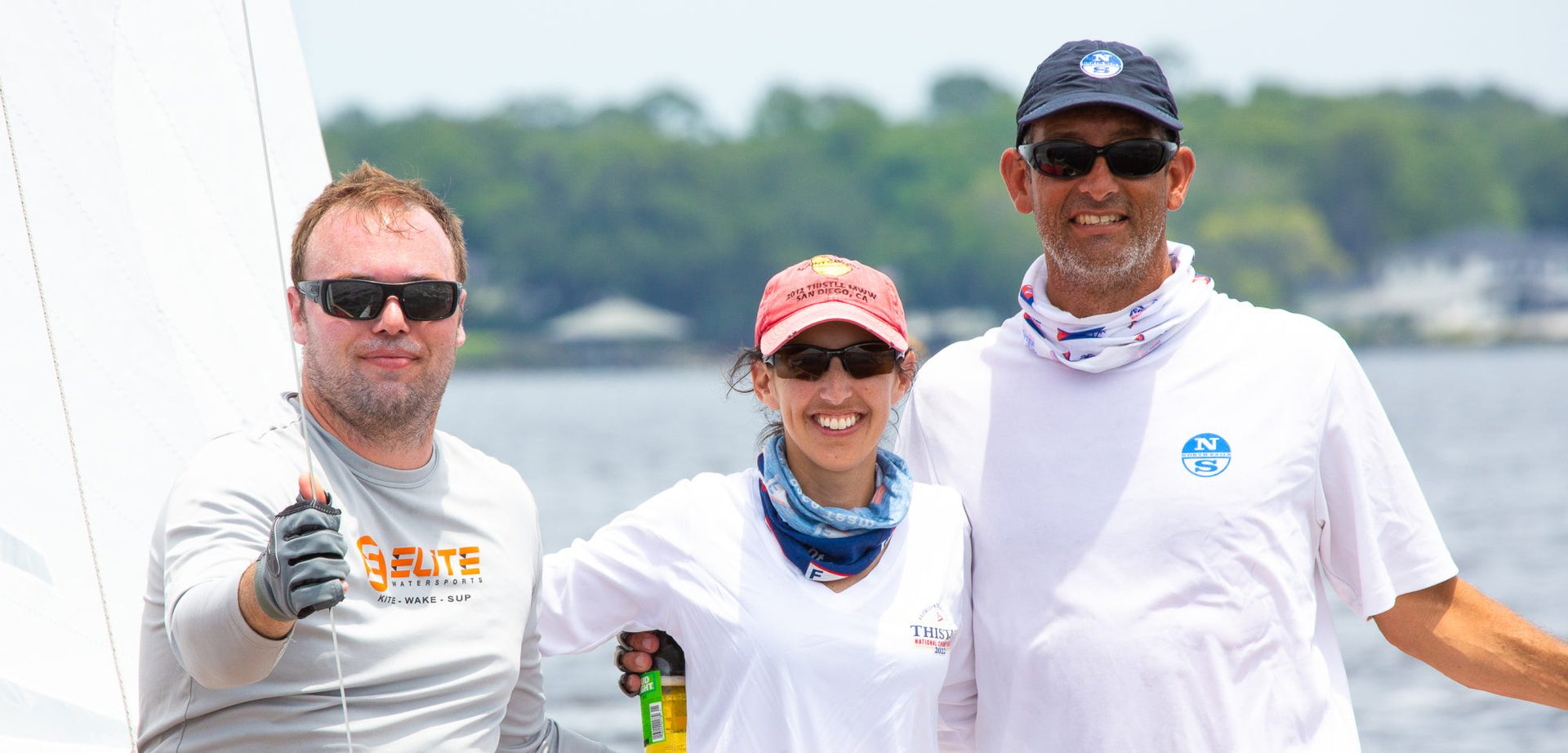
PAUL & MARIE ABDULLAH - THISTLE NATIONAL CHAMPIONS
PAUL & MARIE ABDULLAH – THISTLE NATIONAL CHAMPIONS
Hometown Couple Prevails at Class Championships
📸 Michael Brown
North Sails Expert Paul Abdullah grew up in Jacksonville, Florida, and started sailing in dinghies at a young age and joined his father in various PHRF boats. Currently Abdullah competes across various one-design and PHRF class platforms and has won 17 National, North American, and World championships. However at 18, he got his first Thistle, beginning his journey to where he is today. Along the road he met his wife Marie who was also sailing in the Thistle Class, and they, alongside Barrett Rhoads just won their first Thistle National Championship.
The Thistle Class is known for its family- friendly culture, age – inclusivity, top notch competition, and the camaraderie fostered throughout the fleet. At the 2022 Thistle National Championships there were 10 skippers under the age of 30 and 5 skippers over the age of 70. There were 9 family boats and 13 husband and wife boats racing. Also, with 8 first-time Nationals skippers, there were also 7 past Thistle National Champions in attendance, making this a highly sought after Championship. Last but not least, Thistle #1 sailed in its 50th National Championship!
The 76th Thistle Class National Championship, hosted by Florida Yacht Club, in Abdullah’s hometown of Jacksonville, FL was a marathon event. Sailors faced high temperatures and light breeze for the majority of the regatta placing an emphasis on ensuring ample hydration to keep focus levels sharp throughout the duration of each long day. Seven races were completed, and with no drop allowed, teams were rewarded for low point consistency and minimizing high risk moves. Paul and his team placed no higher than 6th place in all but one race, but managed to secure the victory by eight points over the next finisher, Dave, Becca and Emily Dellenbaugh (another family team)!
📸 Deb Fewell
We sat down with husband- wife duo Paul and Marie to catch up after the big win:
Tell us about your team, and how you all prepared for the National Championships?
Paul: Having a great team allows me to focus on driving. Barrett Rhoads kept me going in the right direction at all times and I kept the boat going fast. Barrett is a great sailor and tactician, and kept us away from too much risk. Marie is one of the best forward crews (she doesn’t think that) and keeps the boat organized for the next mark rounding. Together, we make a great team! Leading up to Nationals, we did a training session in January, won Midwinters East and finished 2nd at Orange Peel. We had a lot of confidence coming into the event.
Marie, tell us about your sailing. How long have you and Paul been sailing together?
Marie: I grew up sailing with my dad in Y- Flyers on Lake Allatoona in Georgia. I later started crewing in the Thistle Class, sailing with my aunt and uncle, as well as in the Snipe Class with various skippers. Every weekend I was on a boat and I loved every minute of it. Paul and I started sailing together in 2009 and I wouldn’t change the last 13 years for anything!
What are some things you guys are especially good at? (Whether it be technique, conditions, starting in big fleets)…
Paul: I like starting in big fleets! We got off the starting line well and it allowed us to sail the first beat conservatively up the middle in most races. The bigger the breeze, the better we are, mostly because of our technique.
Favorite part about sailing with your spouse?
Paul: Sailing with Marie brings a sense of calm on the boat. Ever since we started dating, my success on the water and in life has improved.
Marie: My favorite part about sailing with Paul is simply being together doing what we love. Sailing was such a big part of who we were before we met, and getting to enjoy it together as husband and wife makes it that much more special.
📸 Deb Fewell
Florida Yacht Club is your home club, what does it mean to you to win at home?
Paul: Unbelievable! As Regatta Chair the amount of stress was huge but the team at The Florida Yacht Club kept telling me to focus on my sailing and that allowed me to sail with a clear mind. As soon as the first gun went off I was able to put my focus on sailing. Winning in front of family and friends was a dream come true.
Favorite moment at the 2022 Nationals? Hardest moment? How did you and the team overcome obstacles (bad results, missed a shift, bad starts?)
Paul: Having a 8pt lead going into Thursday and finishing 1-3 in races 5 and 6 to extend our lead. Race 7 was harder than we wanted it to be. Things were going sideways mid-race, but we knew our speed would give us opportunities later in the race. At the last leeward gate, we were just behind Dave and Dan and victory was in sight. We never panicked whenever things weren’t going our way. Our saying in our boat is “boat speed kills” and each race we found our way back in the top 10 by focusing solely on our boat speed and technique.
What products are you using and how did these products play into the result? Did you use our tuning guide? Do our sails seem to be ‘better’ in a certain wind condition?
Paul: I use the DSD sail designs that were designed prior to me joining North Sails. Our design team worked to make the sails better once we put them into our design software and the results really show it. North Sail designs finished 1,2,3..! Whatever it is, we have a sail designed to fit your sailing style. I personally prefer the DSD designs (DSD+ Main, DSD Jib), Dave Dellenbaugh likes the Proctor designs (Proctor Main, Proctor Jib) and Dan Hesse uses the VS designs (VS Main, VS Jib). You can’t go wrong with North Sails! Yes, I wrote the tuning guide and follow it exactly.
With several past National Champions in attendance, this year’s nationals were especially competitive. What differentiated your team from the rest of the pack?
Paul: Someone said when it’s “your time” it’s going to happen. There were a couple races that local knowledge worked out for us, but mostly we had great speed and opportunities just kept coming our way. Winning the Thistle Nationals is a dream come true!
Hard-won expertise from over six decades of success is built into every sail we make.
This is why North Sails wins more races than any other sailmaker.
Remember to check out the #NSVictoryList and tag us in your posts for a chance to be featured on the wall!
#NSVICTORYLIST
📸 Deb Fewell
READ MORE
READ MORE
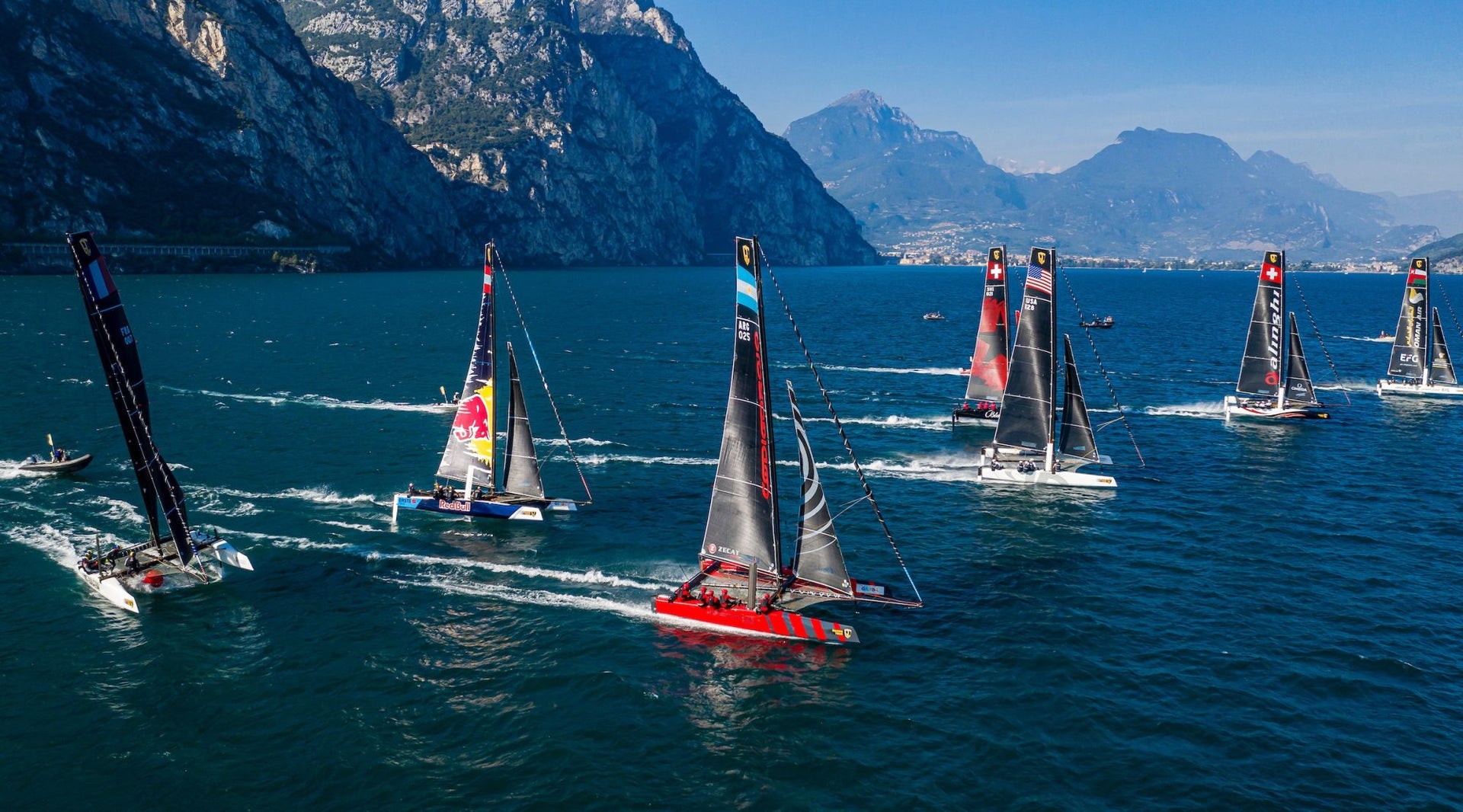
GC32 RACING TOUR STRONGER AND FITTER IN 2022
GC32 RACING TOUR STRONGER & FITTER
A Look Into What’s Coming During the 2022 Season
📸 Sailing Energy / GC32 Racing Tour
The GC32, the sole World Sailing- recognized foiling catamaran big boat class, returns in 2022 with a full season of racing on the GC32 Racing Tour.
Now in its ninth year, the GC32 Racing Tour will visit five of the best foiling venues in southern Europe. The tour kicks off this month with the GC32 Riva Cup held in the big wind, flat water, Alpine mountain encircled Lake Garda. It then moves on to Lagos on Portugal’s Algarve where the GC32 teams can experience Atlantic winds within the confines of a protected bay. Two events will be held in this welcoming venue, the first June 22-26 acting as a warm-up for the main event, the GC32 World Championship held July 13-17. The Tour then returns to Villasimius, Sardinia September 14-18 before concluding in the Spanish Murcia region’s inland sea, the Mar Menor, October 19-23.
More than ten boats are expected for the GC32 World Championship, including the Alinghi team that won the GC32 World Championship when it was last held in Lagos in 2019. Since then Alinghi has united with Red Bull to challenge for the 37th America’s Cup and is fielding two teams on the GC32 Racing Tour: Alinghi Red Bull Racing SUI-8 with their regular helmsman Arnaud Psarofaghis skippering and Alinghi Red Bull Racing SUI-15 helmed by 49er sailor Maxime Bachelin. The latter will be sailed by a younger ‘development’ squad, with the old hands among the SUI-8 crew providing experience as well as a benchmark for their teammates.
View this post on Instagram
A post shared by GC32 Racing Tour (@gc32racingtour)
SailGP teams are also represented with the Danes led by Nicolai Sehested on Team Rockwool Racing who will be looking to improve on their mid-leaderboard finishing position in 2021. Additional SailGP teams are due to join the GC32 Racing Tour later in the season.
A huge development for 2022 is the stronger turn-out of privately backed teams competing, their owners relishing the state of the art foil-borne racing at 30+ knot speeds which the GC32 provides. France’s Erik Maris with his Zoulou team and American Jason Carroll with Argo, are both back. Christian Zuerrer’s Black Star Sailing Team, who managed to beat both Argo and Zoulou on the 2021 GC32 Racing Tour, is also returning for 2022. On board Zuerrer trims main while Kiwi match racer Chris Steele helms.
The Zoulou and Argo teams will be joined in the GC32 Racing Tour’s Owner-Driver Championship this year by GC32 Class President Simon Delzoppo’s film AUS Racing, which last raced on the circuit in 2018 and whose plans to return were previously scuppered by the pandemic. These privately-backed teams are looking forward to not just racing each other but also, the unique opportunity the GC32 Racing Tour provides to line up in anger against a talented field of high performance sailors.
“This new season promises to be exciting with a great mix of old and new teams,” confirms Erik Maris. “I look forward to racing against the other owner-drivers even though the beauty of this class is the mix of fantastic professionals and amateurs.”
📸 Sailing Energy / GC32 Racing Tour
READ MORE
READ MORE
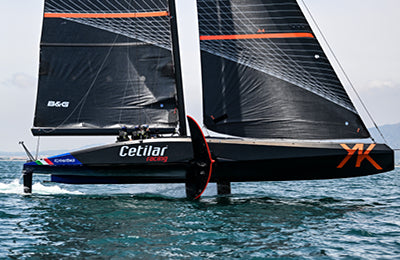
RECENTLY LAUNCHED: FLYINGNIKKA
RECENTLY LAUNCHED: FLYINGNIKKA
Roberto Lacorte’s New Racing Machine is Pure Performance
It was the most anticipated launch of 2022 and one that generated a buzz of excitement. A challenge within a challenge, FlyingNikka is the first yacht to tackle so many design boundaries. The 60′ Mark Mills designed mini-maxi experienced the first ‘flights’ in Valencia in early May and is soon departing to Italy with a mission; to claim race records of the prominent offshore regattas. North Sails is a longtime supplier to the ‘Nikka programs, and we’re honored to have played a part in bringing FlyingNikka to life.
“To fully understand the meaning and purpose of such a boat, it is first necessary to get acquainted with its owner Roberto Lacorte,” says North expert and Italian sales manager Alessio Razeto.
Razeto heads up the FlyingNikka sail program and serves as the team’s sail trimmer. He explains more from Valencia:
“We met with Roberto during the construction of the first Nikka, a Vismara-Mills 47. It was 2012, and compared to where we are now, it seems like a lifetime ago! In those years one of his other creations was taking shape, the 151 Miglia – a regatta that is now sold out with every edition.”
In 2012, Lacorte’s core team was formed, a group still together over a decade later. From the 47′, the program moved on to its next ambitious project, SuperNikka. From a blank sheet of paper and the design vision of Mark Mills and Alessandro Vismara, SuperNikka saw immediate success. The boat claimed the 151’s Line Honors in 2015 just four days after her launch, a hint that this was a program that would never stop racing alongside such an owner, neither at sea nor in the design office.
With the original group intact, the boat continued to do very well, and the results kept coming in. But despite their numerous successes, the team always felt compromised. “Sometimes we ended racing with 72s, and in other regattas, we sailed against the 50s with mixed results, Razeto explains. “And so we reached a turning point: changing the boat and moving forward along the path of friendship and sport, consolidated by thousands of miles in regattas.”
Razeto elaborates, “FlyingNikka is how Roberto Lacorte abandoned the path of compromise. He wanted a pure racing machine.”
Mark Mills, again the facilitator of Lacorte’s vision, presented the first drawing of a reasonably radical 75′. As the AC75s had just hit the water, the attention – and the inevitable doubts – of the entire world sailing community were mesmerized by the new America’s Cup monsters. But Lacorte knew there were boundaries to push further.
‘What’s new? I want to leave my mark” were Roberto’s exact words as he observed the plans for the new concept, to which Mills immediately took up the challenge.
“And so, we started too,” concludes Razeto – sharing his vision and demonstrating the cohesion of the group once again. “This is how FlyingNikka was born, an unparalleled design challenge. The boat and the sail inventory were an infinite series of uncharted design aspects, and a direct technology transfer from the experience North Sails gained during the 36th America’s Cup. But, unlike the Cup boats, which are designed to always fly, we will sail distance and, at times, stay offshore overnight. We will have to have a seaworthy boat and, last but not least, with acceptable performance even in displacement, we have a thermal engine and so on. We like to think that we have extended the concept of high limit and low limit of the AC75. And in this, we are indeed the first.
FlyingNikka’s Sail Inventory:
FlyingNikka’s sail inventory enjoys a considerable advantage from North HELIX Structured Luff, a technology derived from the America’s Cup, and yields sail with a more dynamic shape. “This is not an insignificant detail onboard a hull without a backstay or flying shrouds,” Razeto explains. “These load sharing sailing transfer to 80% of the overall sail load in the jib with 20% remaining on the forestay. A similar situation applies to the mainsail, also designed HELIX.”
All of FlyingNikka’s sails are 3Di Raw, and according to Razeto, “We have coined the new term ‘ultra-custom.”
FlyingNikka’s sail inventory includes a 140sqm square-top Helix mainsail, with two reefs (122 and 73sqm), four Helix headsail sails, from the 93sqm J1 to the 44sqm J4, all for flying speeds, and a large Helix Code sail of 150 square meters to be used solely for displacement sailing. Her total sail area is 564 sqm, approximately the size of two tennis courts.
Razeto joined the team in Valencia for the first trial and, considering a thousand unknowns of the project, saw the new boat fly on several occasions and sail very fast in light winds. The FlyingNikka program has many miles and many races ahead of it. It’s an ambitious project with a big family vibe amongst the close-knit team, just like when Roberto Lacorte, in 2012, launched his first Nikka into the water.
“A lifetime ago, indeed.”
READ MORE
READ MORE
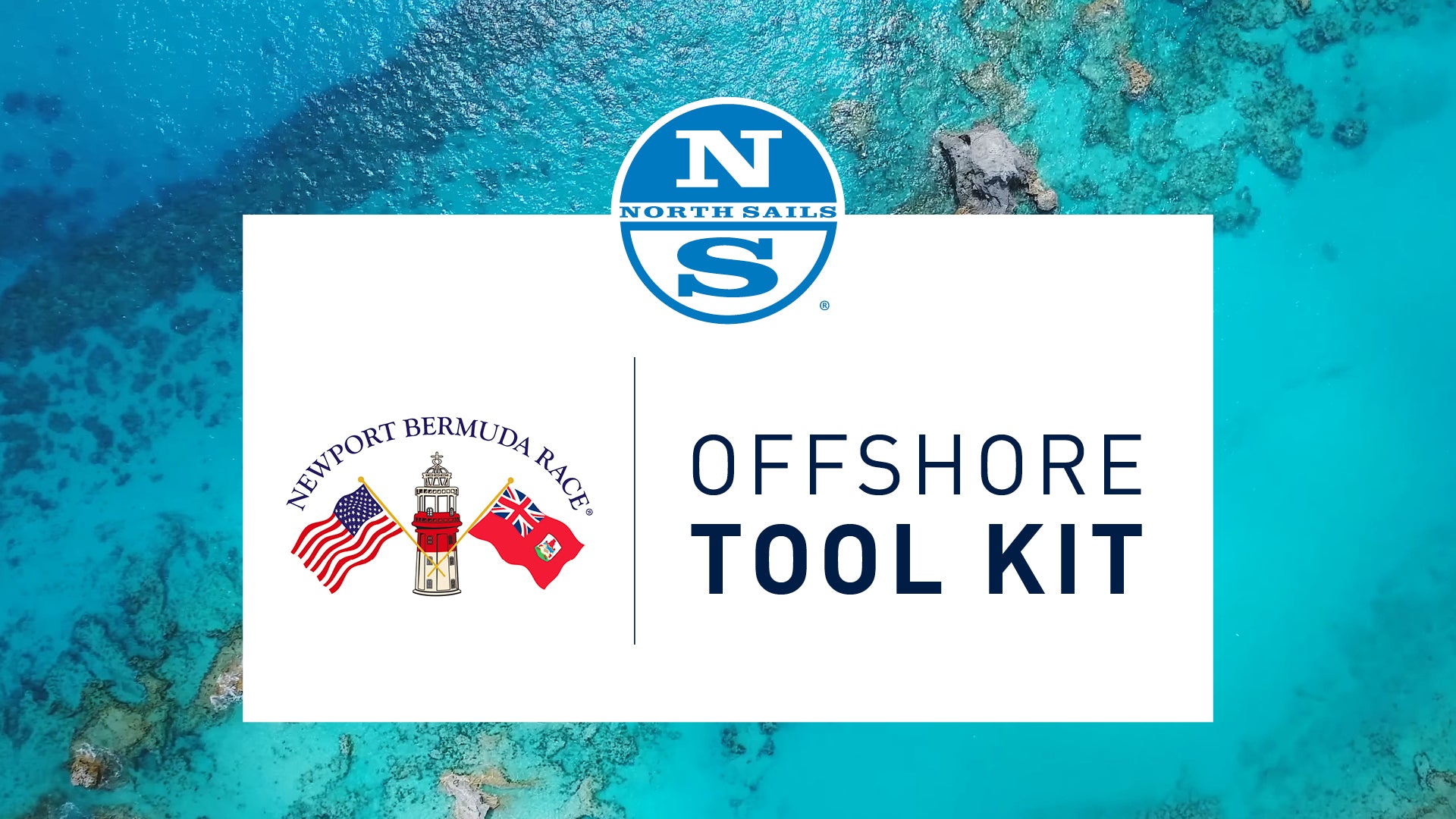
NEWPORT BERMUDA RACE OFFSHORE TOOLKIT
Get Ready for the Newport Bermuda Race
When heading offshore, there are many things to keep in mind that can help you make it to the finish line in one piece. Planning ahead can contribute to your success and assure your crew and your boat is set up to take on anything mother nature can bring. Here are some articles that will help you plan ahead, expect the unexpected, and get the best results in the upcoming Newport Bermuda Race.
Good luck, sail fast, be safe, and sail smart!
Finding the Right Fit
Ken Read has plenty of experience in building ocean racing teams. Here is his advice for speed and success when it comes to finding the right players for the positions.
BUILD YOUR TEAM
Planning Ahead
Preparing successfully to compete in the biggest offshore races requires putting your attention to every detail. When sailing the Rolex Sydney Hobart Yacht Race (or a similar race that heads well offshore such as the Newport Bermuda Race, Fastnet or Transpac), you’ll need to win a different sort of race after crossing the finish line—the delivery back to your home port.
FORECASTING
Fueling Your Crew
For many teams, preparing for any offshore race begins immediately after the finish of the previous edition. Here’s what Sarah O’Kane from Shorebase, a logistics company, says is important to properly provisioning for your next offshore adventure.
LEARN MORE
The Solution To Every Hoist
When it comes to hoisting your spinnaker, there are some details to consider that make everyone’s life easier (or harder). Having zippers instead of bands is a great way to achieve a smoother, cleaner and quicker hoist, as well as help keep trash out of the ocean.
LEARN HOW
Shift Changes: Know Your Role
It is important to always have a clear strategy for the team on deck to follow, so that rest periods by the navigator do not lead to missed opportunities or mistakes.
LEARN MORE
To Reef or Not to Reef
Shortening sail quickly and easily when the breeze comes on is key to looking after your sails and your crew.
LEARN MORE
Safety is No Accident
Hardcore ocean racers and coastal cruisers alike should all make safety at sea a priority. North Sails President and offshore veteran, Ken Read, shares his tips and best protocols for sailing offshore.
LEARN MORE
Get Downwind, Fast!
Steering off the wind, on reaches and runs, requires a coordinated effort between helmsman and spinnaker trimmer. More often than not there are conflicting suggestions: Go up. Go down. Be more aggressive. Steer less. Hear our thoughts on how to manage feedback from the crew.
HOW TO
The Trip Home is Just as Important
Preparing successfully to compete in the biggest offshore races requires putting your attention to every detail. When sailing an offshore race you’ll need to win a different sort of race after crossing the finish line—the delivery back to your home port.
LEARN MORE
Inventory Checks
Have you made arrangements for sail check-ups after the delivery home? Every sail serviced in a North loft undergoes a thorough inspection designed to identify maintenance issues early, so they do not become major problems later on. Contact your nearest loft when you hit the dock after your delivery. We look forward to helping you maintain your sail inventory so you are ready for the next event.
CONTACT US
READ MORE
READ MORE
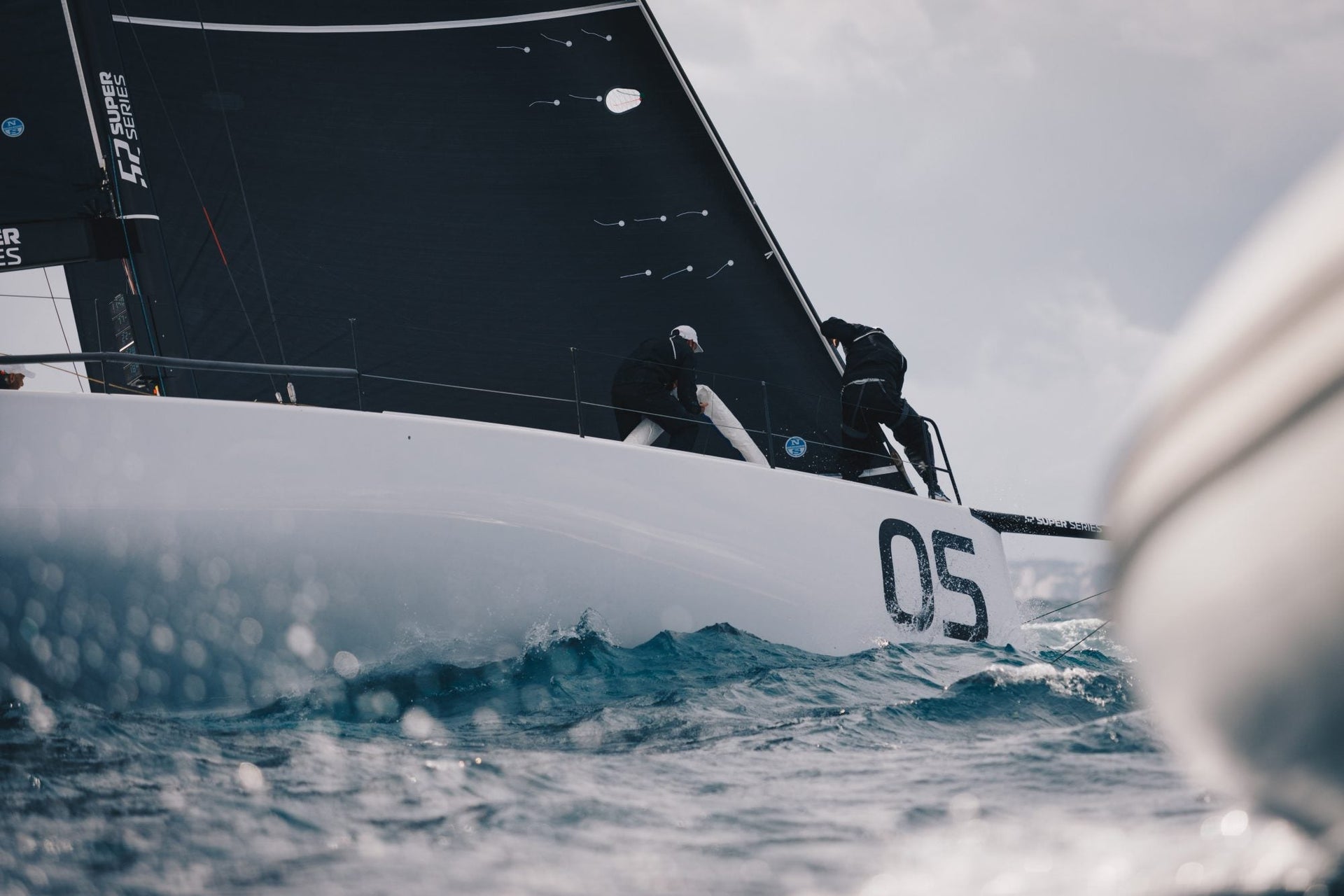
READY FOR ANOTHER SEASON OF SUPER SERIES SAILING?
READY FOR ANOTHER SEASON OF SUPER SERIES SAILING?
The Ultra Competitive TP52 Circuit Commences in Late May
📸 Atila Madrona
The 52 Super Series is gearing up to kick off another season of competitive sailing with five events in this high-powered circuit. As the sailmaker of choice to the majority of the fleet, North Sails eagerly anticipates the season opener when the Super Series fleet lines up next week in Baiona, Spain.
For those readers who are less familiar with the 52 Super Series, let us fill you in. This best of five series is one of the most competitive circuits in our sport. It draws some of the biggest names in sailing and has an aggressive sail development cycle that rivals that of the America’s Cup. The series began in 2012 and up until last year, only two teams dominated the overall season championship. In 2021, Mr Takashi Okura’s “Sled” ended that reign by not only becoming the 52 Super Series champions but also winning the coveted World Championships. Mr. Okura and his international crew will look to defend their status against the 9-boat fleet this season.
“In this game of millimeter perfect competitive racing, we’re ultimately judged on the performance of our product, and performance equals results,” remarks North Sails Grand Prix leader Paul “Flipper” Westlake. “For over a decade, North Sails TP52 class experts and sail designers have gathered feedback from the teams in the Series and this collective experience is fundamental to building the fastest sails on the racecourse.”
But in a class as refined as the TP52, where do you find your next performance gain?
North Sails Dave Lenz explains, “The trim techniques, the sail shapes…these sailors know their boat speed levers and because of that, we’re not radically changing the sail designs and structures each season. Instead, we explore fine-tune details to make that flying shape more active, which allows the trimmers to further manipulate the sail’s shape across the range.”
Last season saw North-powered teams adopt Helix Structured Luff and we expect to see even more throughout the fleet in 2022. “Helix is a game-changer that enables a new gear,” comments Juan Meseguer, North Sails designer and designer for TP52 Provezza. “The structured luff sails have a more dynamic shape, which translates into more power for the boat. We learned a lot last season and from our design team’s work within America’s Cup. Helix is the future, and we’re going to keep exploring this new design space.”
52 Super Series racing commences on May 23 in Baiona, Spain. This is the first of five events scheduled through October 2022. Learn more about the Super Series and follow all the action here.
📸 Atila Madrona
READ MORE
READ MORE
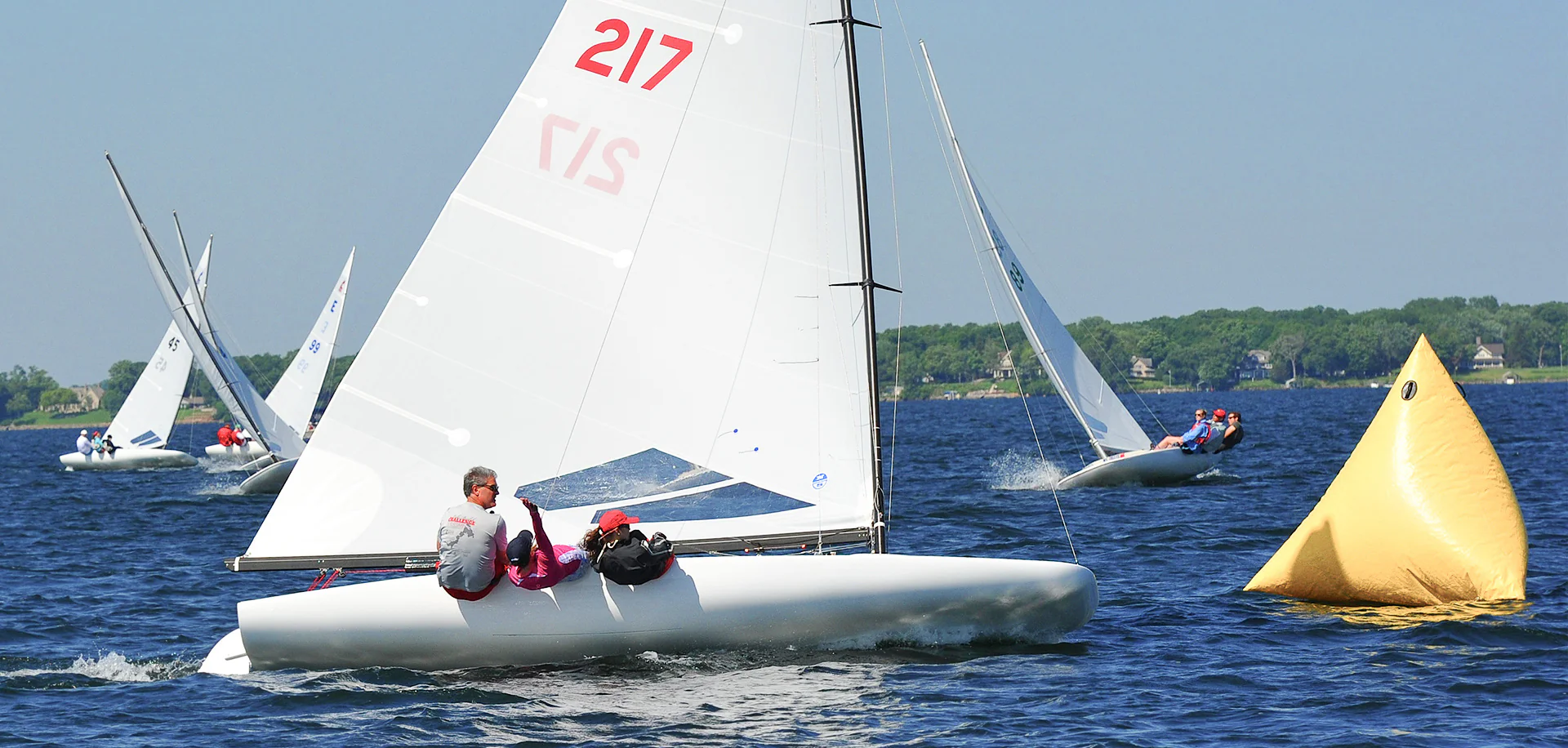
THE SCOW SAILOR'S GUIDE
THE SCOW SAILOR’S GUIDE
North Sails Tuning Guides, Webinars and More
📸 Hannah Lee Noll
North Sails has been manufacturing and designing championship winning scow sails for over forty years and look forward to doing so for forty more. The North Sails One Design team has a long tradition of serving one design fleets all over the country and we look forward to working with you! Our network of local one design experts and dealers are available to help you get the most out of your sails so you can reach your goals whether it is an informal evening race, or the Class Championship. North Sails is continually developing and improving our products and services to enable you to sail faster is not just our goal; it is our obsession.
“The North Sails team will have a presence at every major scow regatta on the calendar, and we’re dedicated to providing the latest tips, tricks and tuning info to get the most out of your North Sails scow designs. We have put a huge effort into modernizing our product line using the best software, best materials and hundreds of hours on the water to refine the designs,” says North Sails Expert, Jeff Bonanni.
Get to Know Your Class Experts
Allan Terhune has won eleven North American Championships (in the Lightning, Flying Scot and Thistle Classes) and was crowned the 2013 J/22 World Champion, a two time E Scow Eastern Champion crew and is the current ILYA MC Scow Champion. Allan is also a class expert in the E Scow, MC Scow, Etchells, J/70, J/80, J/88, J/105, J/111 with many podium finishes in each class. Allan is a resident of Annapolis, MD. In 2007, Terhune was awarded US Sailing’s One Design Leadership Award and named Rolex Yachtsman of the Year Finalist in 2008 and 2013. Allan has been with North Sails since 2007.
Jeffrey Bonanni has won 5 National and North American Championships, including the 2015 E Scow National Championship. He is one of a small handful of helmsman to have won all 6 National Championship trophy races. Jeff actively races in the E Scow, Melges 20, Melges 24 and Etchells classes, as well as coaching the Northeast’s top junior sailors on Barnegat Bay. Jeff currently serves on the National Class E Scow Association’s Board of Directors and is the Commodore of the Eastern Class E Scow Association. Jeff is a resident of Little Silver, New Jersey and a graduate of Boston College, where he was an ICSA All American Skipper.
Eric Doyle – Eric was raised in Pass Christian along the Mississippi Gulf Coast, where he learned at a ripe young that he was hooked on sailing. Eric began his career at North Sails in 1992. Shortly after starting at North Sails One Design, he was hired by Dennis Conner to sail with Stars & Stripes America’s Cup campaign in 2000. Continuing on he raced with BMW Oracle for the 2003 and 2007 America’s Cup campaigns. Eric’s passion is with smaller keel boats like the Etchells, Melges 24, and J/70, but his favorite boat is the Star in which he won the World Championship in 1999 as skipper and the coveted Bacardi Cup in 2019! Eric is currently based in our San Diego Loft and when he’s not racing or coaching he’s constantly working on R&D sails for the One Design team.
Tim Carlson – Tim Carlson has been selling North Sails for over 5 years as a North Sails representative in the Upper-Midwest and offers a wide variety of services to the vibrant sailing scene in the Twin Cities. Tim is proud to serve the members of Wayzata, Minnetonka, and White Bear Lake Yacht Clubs which host some of the most competitive weekly races in the country. While Tim is fluent in the ways of inland lake sailing, he is no stranger to offshore sailing on the Great Lakes. Over the years, he has participated in the Chicago Mac, Bayview Mac, Trans-Superior, and many more.
📸 Hannah Lee Noll
Tuning Guides
North Sails Experts carefully create and update each class’ tuning guide each season and upon the launch of new sail designs. Make sure you are optimizing your rig, sails, and boatspeed by downloading your class’ guide below.
A SCOW
E SCOW – Newly Updated in May 2022
C SCOW
MC SCOW
M-16 SCOW
M-20 SCOW
X-BOAT
Client and Expert Testimonials
“After North updated their sail selections recently the Magnum has been the only sail that I use. Upwind it is easy to trim and keep the boat on rails but downwind is where it really shines. I was sold on it once I realized I was able to keep pace in the light stuff with the smaller sailors. ” – Sean Bradley
“E Scow racing rewards the teams that put in 100% effort around the race track. The boat is so dynamic and fast, you’re always within striking distance of the next pack. My favorite races are not the wins, but the races where we passed thirty boats to finish fifth.” – Jeff Bonanni
“The MC Magnum is a powerful sail. The results are here and we are very confident that the MC Magnum will be a huge success this summer. We made some significant changes to the MC Tuning Guide, including shroud tension and board angles, which are crucial for boat speed. Make sure to check it out! The MC Magnum is a MUST HAVE!” – Allan Terhune
Webinars
North Sails Experts and Class Champions conduct regular webinars to touch on teaching moments from past events, discuss changes to the tuning guides, explain new sail designs and their intricacies and take the time to answer your questions. Take a look through our collection of Scow Webinars, and learn something new from a class expert!
NORTH SAILS SCOW WEBINARS
READ MORE
READ MORE
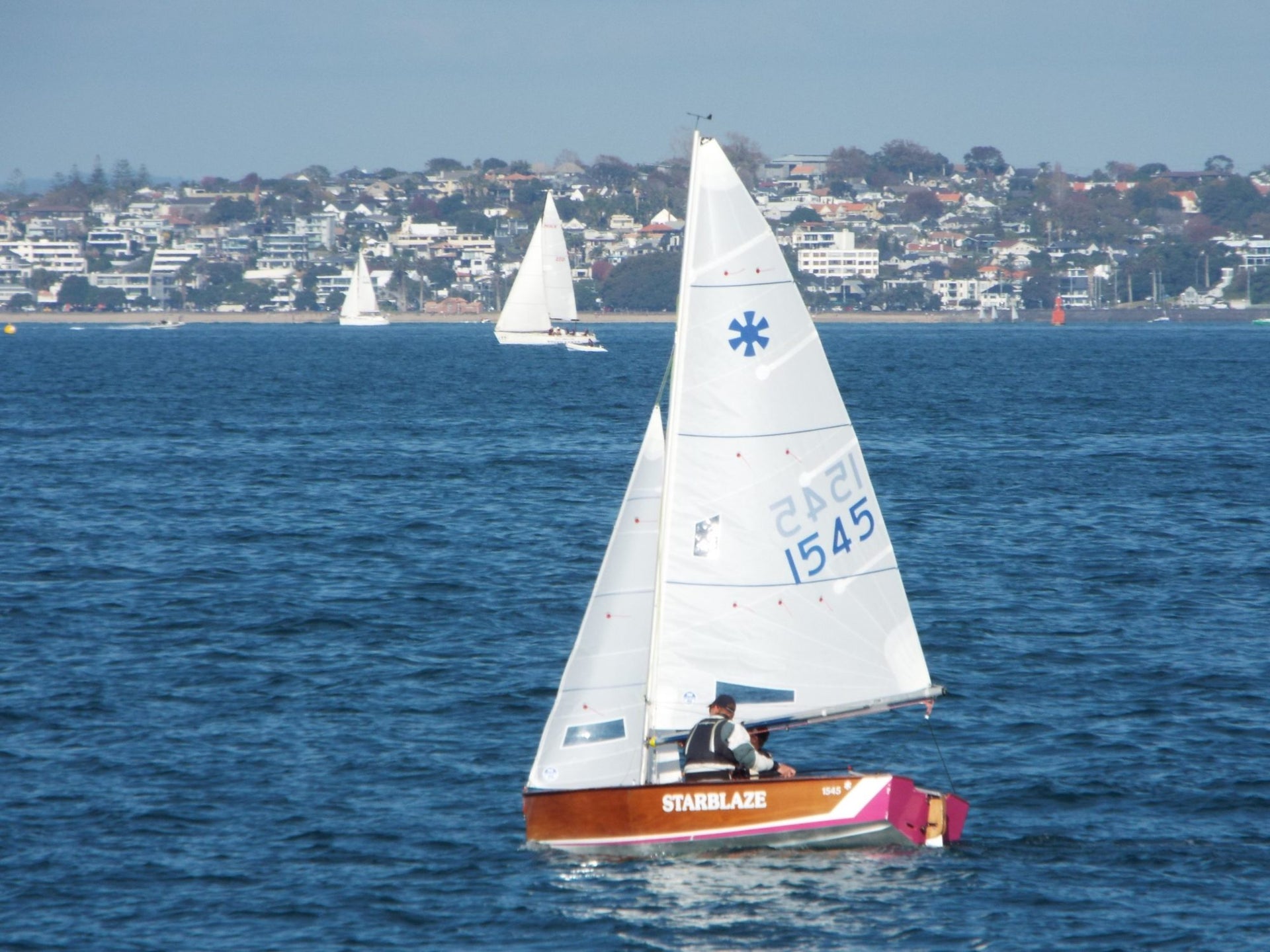
FATHER-SON DUO WINS NEW ZEALAND SUNBURST NATIONAL CHAMPIONSHIPS
FATHER-SON DUO WINS NEW ZEALAND SUNBURST NATIONAL CHAMPIONSHIPS
Catch Up With Winner Andrew Wills, Who Sailed With His His 9-Year-Old Son Leo
North Sails Sales Expert Andrew Wills is a 2 time World Maxi title winner and an Etchells class World Champion, in which he has also won North American and European titles. Wills has also claimed over 30 national championships in various classes and has also successfully coached many Youth National and World champions who have become America’s Cup and Olympic winners. All of that is quite impressive, but now Andrew can say he is a National Champion in the Sunburst Class, alongside his 9-year-old son, Leo.
The Sunburst Class was originally designed in the late 1960s in New Zealand, by John Balmain Brooke. It became an extremely popular class, as it was a great vessel to teach beginner sailors, and kids. Intended as a two-person boat, the Sunburst is easily sailed single-handed in light to moderate conditions. The Sunburst is usually rigged with a mainsail, jib, and a small spinnaker. The perfect boat for a parent-child duo…
Leo had only recently completed his first learn to sail course prior to hopping in the 3.5 meter dinghy with his father. According to Yachting New Zealand, the father-son duo had never sailed the Sunburst together before, so Thursday after school, Andrew scooped Leo up for a shake down sail. At the top mark Leo made it absolutely clear to his father that they would not be flying the spinnaker, and Andrew listened to his son’s demand.
Going into day one of racing, Andrew considered entering the non- spinnaker division, to ease Leo into the boat, but Bruce Yarton, the event organizer, stated that the two fleets would start together, so Andrew should pack the spinnaker, and only hoist it if Leo is ready. Bruce also gave Andrew some winning words of wisdom - “take some lollies, and give him one every time you hoist the spinnaker.” (Yachting NZL).
Conditions over the three-day event saw light breeze and flat water, the perfect recipe for the Wills team, sailing on Starblaze. Being such a family friendly event, the Sunburst Nationals saw several family teams competing. The seven-race series saw five teams in total winning a race, and eight of the top nine teams were family teams, they also swept the podium. Andrew and Leo Wills won the event by four points.
Andrew told Yachting New Zealand that he “doesn't really know where his sailing journey will take him as a parent but is keen to do more with his children, even if it means parting with a few more lollies.”
North Sails and the Sunburst Class -
Over the years North Sails has worked with quite a few teams refining our Sunburst designs. Each time just making the design a little better. What we have come up with is a very fast all round set of sails which is very easy to set up and trim.
We also have the very best team making the sails with over 40 years of experience. Both Derek Scott and Rod Chave have been working for North Sails New Zealand for over 20 years and that proves they love and care about making the fastest sails they can.
SUNBURST CLASS PAGE
READ MORE
READ MORE
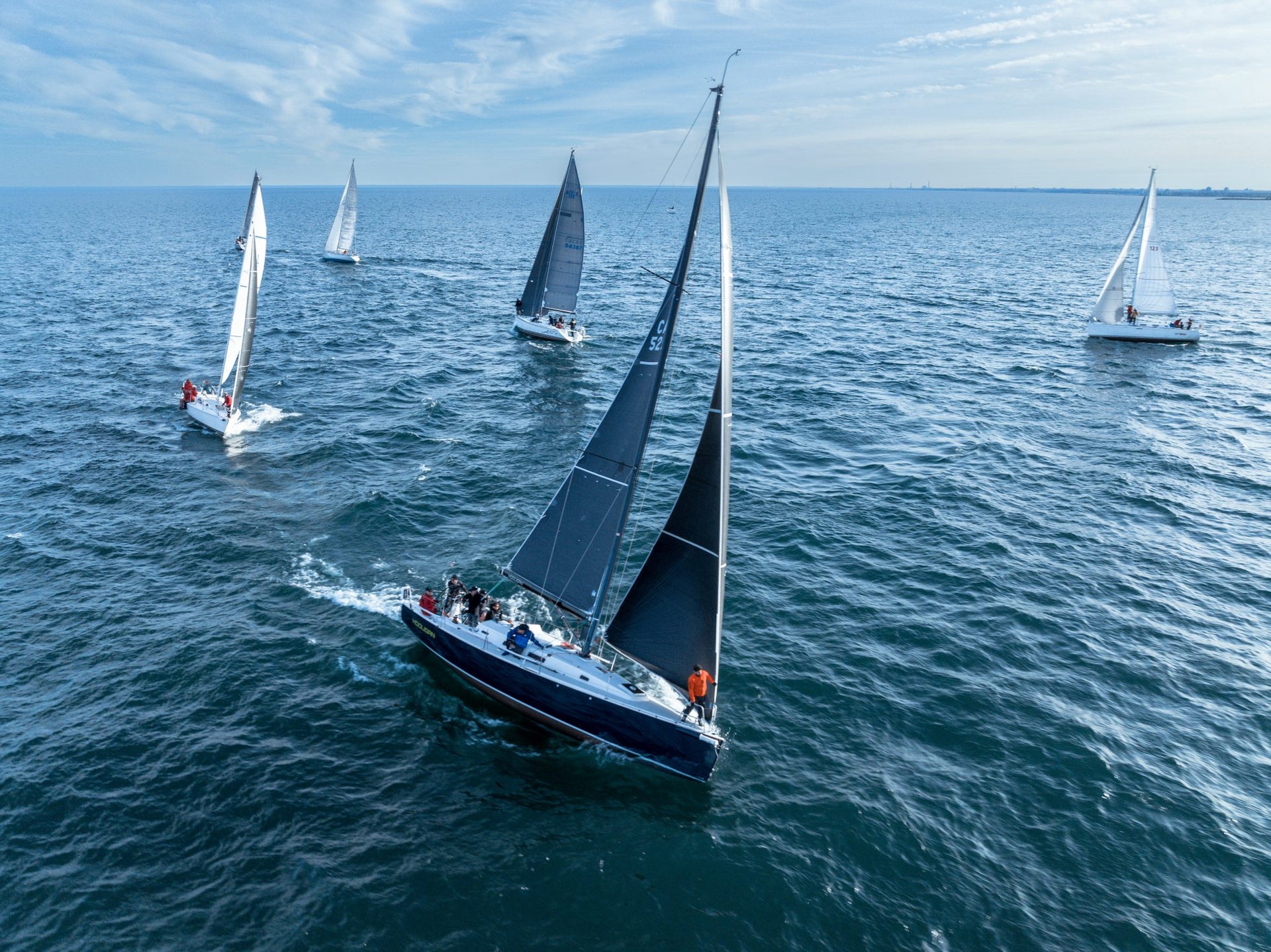
LET'S GET SAILING
LET'S GET SAILING
2022 Racing Season Kicks Off at Mimico Cruising Club
Photo Credit: Bobyk Media
Mimico Cruising Club (MCC) has been building its reputation as the 'it' racing venue for mid-week racing in Toronto over the past few seasons. With a racing fleet in the 40-boat range, offering both white sail and flying sail divisions, it has attracted competitive racers with full crews and those with more shorthanded crews, including double handed. These Wednesday night races have attracted racers from Etobicoke Yacht Club (EYC ), Lakeshore Yacht Club (LSYC) and Boulevard Club to name a few. It has been wonderful to have boats from neighboring yacht clubs join us on the start line the last few years.
Last Monday May 9th, MCC kicked off racing with a pre-race shake down sail after new race marks were splashed the last week of April. After a long and cold winter, it was time to get everyone out on the water before Wednesday night racing began on May 11th. The first start resulted in a general recall. You would never have thought this would occur after a 6-month winter hiatus, yet this is indicative on just how competitive MCC race nights are. Watching the large Flying sail division of 13 boats comprising of J122 Hooligan, 36.7's including Neptune's Car, C&C 115s, Beneteau 10R's, J112E High Tea, FARR 39ML, J105s, Archambault 35 Great Escape, Archambault 40 Arrow and Entourage from LSYC to name a few.
Photo Credit: Bobyk Media
The post-race event in the club house resembled a camaraderie and buzz that was enjoyed by all, reminiscent of the experience that we have all been waiting for after two years of pandemic restrictions. Racing is back and with all the fan fair it; we look forward to racing this season at MCC.
Photo Credit: Bobyk Media
READ MORE
READ MORE
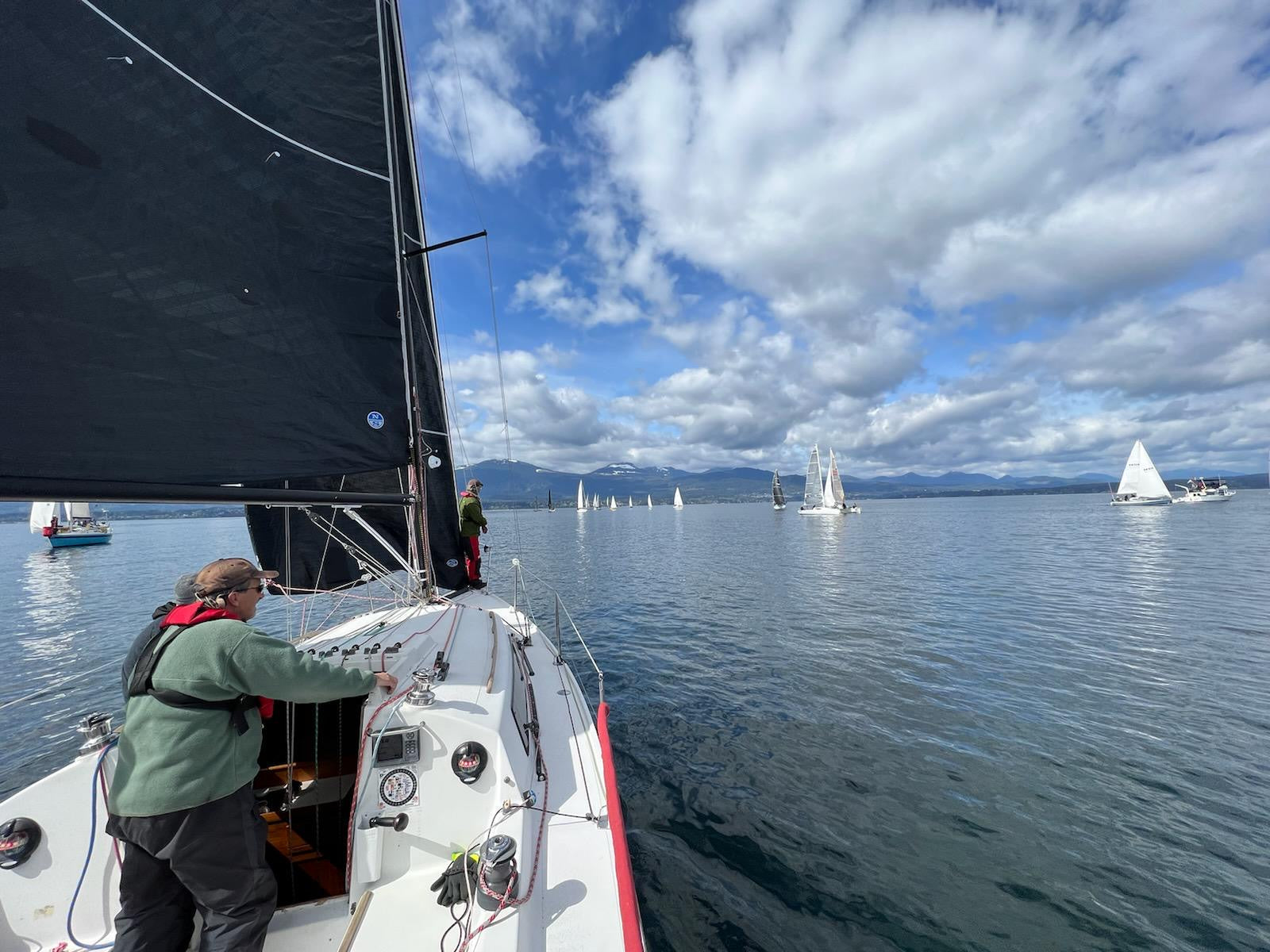
EVENT SPOTLIGHT: THETIS ISLAND RACE
EVENT SPOTLIGHT: THETIS ISLAND RACE
Focus on Fun and Good Times for Sailors
The Maple Bay Yacht Club's Thetis Island Race was one for the ages and the North Sails Vancouver loft was proud to support the 2022 edition of the race. With the PNW's spring yet to show, rain showers, cold temperatures and low winds were expected. The one positive of the race was that the current, which is always a big factor in this race, was going clockwise around the entire island during the hours we were planning to race. Most teams arrived Friday, some with motherships to stay on and others just the boat they planned to race on. Per usual, there was no shortage of good sailing banter going on around the docks well into the late hours of the night. On Saturday morning, the sun showed up and the wind forecast was looking better. After a quick skippers meeting where Penny, the race organizer, made sure everyone knew the regatta was about having fun and strongly discouraged on-water protests, all 30 boats got out to the start line. As boats headed out there was zero wind but just as the first gun went for the Division 1 boats, the wind filled down the channel. The first leg up the east side of the island was quite condensed, as it was a beat, and the faster boats were slowly catching the slower divisions. As the fleet approached the northern end of the island, it looked like we may have had one of the famous Thetis island "parking lots" but the wind filled as the fleet approached the hole.
Everyone was still sailing hard on the wind until reaching the southern end of Reid Island and the spinnakers started to go up across the fleets. The wind had decreased from earlier in the race but was still present. Teams focused on gybing all the way down to the south end of Thetis in order to stay in positive current lines. Once most of the fleet rounded the southern tip, it was then a fetch to the finishing line. Most boats tried to sail as close to Thetis as possible without being caught in the wind shadow. A few of the last boats got caught in a dying breeze which made their finish time slightly longer than originally hoped. Post racing, the Maple Bay Yacht Club and the Thetis Island Marina ran a regatta dinner buffet that rivaled the morning breakfast. After most sailors finished dinner, awards were held outside as the sun continued to shine. There were some fun awards such as a painting of a sailboat that was donated by the artist herself, PRO Judy Button. Once the awards were finished, the dock party continued and everyone had a great night chatting about the race and summer racing plans. Maple Bay Yacht Club and the Thetis Island Marina did a fabulous job hosting and running a spectacular event. With sun, wind, and positive current the entire race competitors could not have asked for better conditions. Thank you to everyone who was involved in making this race happen. I recommend it to any boat with a PHRF cert looking for a fun race and good time on Thetis Island!
See here for full results. To learn more about getting involved or how to get your inventory ready for racing, connect with our North Sails experts in Vancouver.
READ MORE
READ MORE
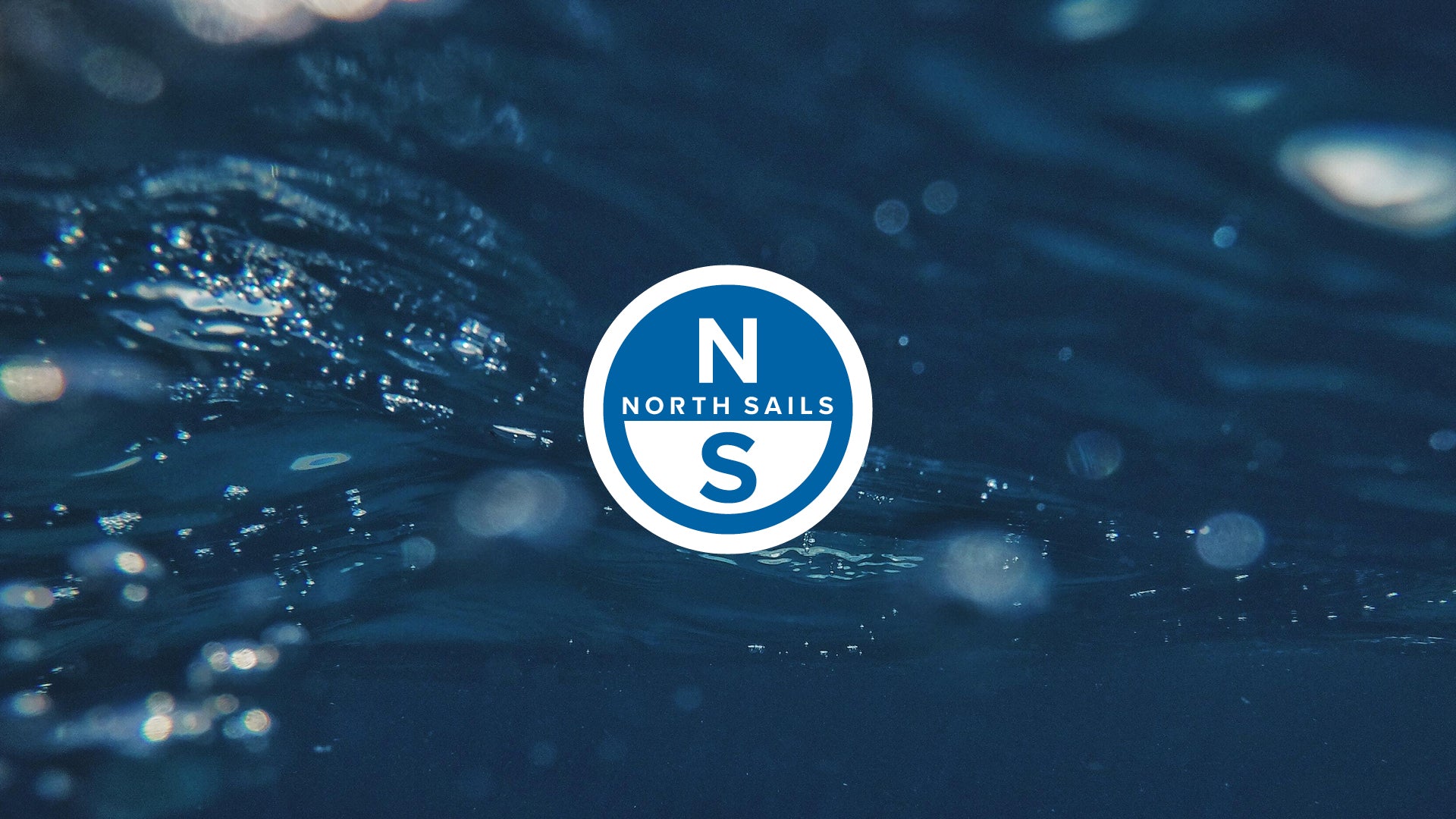
E SCOW TUNING GUIDE 2022
This tuning guide is for E Scow sailors using the rig with the chainplates at the max aft position with longer spreaders. With this rig, backstays are not required, allowing the skipper to fully concentrate on tactics and boat speed.
BEFORE STEPPING THE MAST
Clean and lubricate turnbuckles, make sure that the top and bottom threaded studs are even in the turnbuckle tube.
Position mast so that base is locked in mast step plate on deck and top end is resting in the boom rest support.
Check all pins, wires, and fittings for wear, and attach upper and lower shrouds.
Pull the forestay down along the top of the mast, pull firmly, and mark the wire with a permanent marker at the top of the mast base casting or where the tube is cut off at the bottom. You will use this mark to measure your mast rake once the mast is in the up position.
Check the spreaders to make sure they are pinned in the forward hole for an all-purpose setting. This puts the spreaders in the aft-most position.
Make sure that all halyards are pulled down and are not fouled.
Using the feeder line that comes up through the mast step, tie this onto the bottom end of the jib halyard and pull the jib halyard through the deck.
Take care not to loose the feeder line through the deck or you will have to re-run through the pulleys inside the backbone.
Using a person on the foredeck pulling on the spinnaker halyard and someone walking up the mast, step the mast and attach the forestay.
After stepping the mast, proper shroud tensions should be obtained.
If you have a new North mainsail with the slug sewn into the sail, remove the screw holding the slug slide in the mast and remove the slug slide.
This slide can be shackled on another sail for use of an older mainsail.
ALL PURPOSE SETTINGS
For base setting of the mast rake, start by measuring up from the top of the deck at the forestay along the forestay wire to the mark on the wire that corresponds to the mark you put on the wire at the bottom of the mast tube. Please refer to the mast rake chart and use the measurement which corresponds to the year your boat was built.
At this point, tighten the upper shrouds (shrouds that go to the forestay) so they measure 37 (560 lbs) on a PT-1 Loos tension gauge. Make sure the uppers are in the aft-most hole in the chainplates and also make sure you tighten each turnbuckle the same amount. If you want to really fine-tune the rig, measure down to the deck at the chainplates using the jib halyard and adjust the intermediates to center the mast athwartship.
Set the lower shrouds at 21 (240 lbs) on the PT-1 gauge and the diamonds at 23 (280 lbs). You will have to work back and forth between shrouds to achieve these base numbers.
Note: If you have a new boat or new shrouds it is important to sail a few times in heavy air to stretch out the rigging before setting permanent marks on the shrouds and the mast rake. Double check the mast rake measurement after tightening shrouds and after sailing in a good breeze.
Rake Setting
The proposed rake settings below are based on the year your E Scow was built.
1998 - 2011
2012 - 2015
2016 or newer
26"
26 1/4"
26 3/8"
Easy Tuning Charts
Note that all recommended turns are from the base settings.
M3 Mainsail / J4 Jib
TWS
6 knots
BASE - 8 knots (2-3 on rail)
10 knots
12 knots
15 knots
18+ knots
Uppers
-
37
+1
+1.5
+2
+3
Lowers
-1
21
+1
+1
+2
+2
Diamonds
-1
23
-
-
+2
+3
Boards
2 holes FWD
1 hole FWD
1 hole FWD
AP
1 hole AFT
2 holes AFT
Outhaul
Smooth
Smooth
Smooth
Smooth
Max
Max
Vang
Loose
Slack Out
Firm
Firm
Max
Max
Cunningham
Loose
Loose
Loose
12" Wrinkles
Smooth
Smooth
Main Traveler
Up 2-6"
Center to up 2"
1/4 to 1/2 to Post
1/2 to Post
3/4 Down or Post
Post
Jib Traveler
Max Up
Max Up
Max Up
Down 2"
Down 3"
Down 4"
Clewboard
2nd Hole From Top
2nd Hole from Top
2nd Hole From Top
3rd Hole From Top
Bottom Hole
Bottom Hole
Tack Height
4"
4"
3.5"
3"
2.5"
2"
MAINSAIL TOP BATTEN - 6-12 knots go to 10180c, >12 knots increase to 10230c
2021 Easy Tuning Charts
Easy Tuning Charts (pre 2022)
Jib Tack Height
Jib tack height at base measured from the deck to the bearing point of the jib tack control line. Mark your control line to ensure you can quickly find your base setting. Adjusting the jib tack in in small increments during a race is a quick way to power-up or de-power the jib and has a more meaningful effect on jib shape than a 1 hole adjustment on the clewboard. See below.
Jib Spreader Mark
18.5"-19" measured from center rivet on front of spreader bracket, alongside the front of spreader.
In most conditions, the jib leech should be at or near this mark. Periodically sight through the mainsail window or from behind the mainsail to check your sheeting is accurate.
RACING YOUR ASYMMETRICAL
We wanted to provide you with some helpful tips so that your learning curve moves upward. Please follow some of these initial tips so that you reach maximum performance right out of the gate. Teamwork is a major factor in this sport. So, work with your team and see what techniques may work for you specifically. The tips provided are a baseline to work from. When setting up your Asymmetrical sheets – be sure to rig them so that you are doing “inside jibes”. The clew passes between the luff of the kite and the forestay. A quick way to ensure this is to lead the tack line over the starboard spinnaker sheet when you rig your sheets. Tack over sheet.
IMPORTANT MAST TUNING AND ASYMMETRICAL TECHNIQUES TO LEARN
As with any masthead spinnaker configuration, the rig is more loaded and will require more attention to rig tuning and some changes in sailing technique.
DIAMOND STAYS
The diamond stays on the mast help to support the mast head spinnaker configuration and the tension on the diamonds is important to ensure that the mast stays pre-bent and in column. It is important to follow the tuning guide recommendations and not stray too far from these numbers. Diamonds that are too loose when it is windy will not support the masthead kite properly and cause the mast to invert. Note: Diamond stays will stretch when they are new and you must check them before and after heavy air races, especially when the rig is new. Diamond stays will also measure differently with different tension on the Intermediates and the lowers.
SPREADERS
Spreaders should always be in the maximum aft setting on the mast to ensure maximum spreader sweep. Note: This is the fast setting for all wind conditions, and this is true for the aft chainplate boats as well as the forward chainplate boats. The upper spreaders are set from the factory with approximately a 6-1/4” sweep when measuring from the back of the mast to a straight line from tip to tip where the wire passes through the tip. Sweeping the spreaders forward will make the top of the mainsail fuller, sweeping them aft will flatten the top of the mainsail.
SIDESTAY TENSION
With the forward chainplate rigs it is important to start to put some tension on the uppers once the breeze is over 10 knots. 400 lbs. On the uppers is necessary to insure that the mast stays prebent when sailing downwind. We recommend sailing with the uppers closer to 600 lbs once the breeze is over 15knots. This is the same for the aft chainplate rigs. With the aft chainplate rigs we rarely go below 600 lbs on the upper sidestay tension.
MAINSHEET TECHNIQUES
It is important with the Asymmetrical to sail at slightly hotter or higher angles than with the symmetrical kites to achieve the greatest performance. This, along with the higher speeds you are achieving will bring the apparent wind angle forward and require the mainsail to be trimmed at a tighter angle. Also, more vang can be carried since you are sailing at hotter angles with more load on the mainsail. Because you are sailing at hotter angles and the A sails are so easy to jibe you should not ease the mainsail out too far on the jibes. The maximum the sheet should ever be eased is about 10’ measuring from the aft corner of the boat to the boom. This technique along with keeping some vang on will help maintain a positive bend in the mast and regardless of backstay tension will help ensure that the mast does not do an inverted bend.
RECIPE FOR MAST DAMAGE
Crew weight should never exceed 675lbs. on an E Scow. The target weight for 4 people sailing in heavy wind is 630-650lbs. Sailing heavier will dramatically increase loads on the boat and rigging and amplifies mistakes made with tuning and mainsail handling. Jibing in heavy air with the vang loose and the mainsail eased out too far can be a recipe for mast problems. This is the single most important thing you need to concentrate on when sailing the A sail configuration. When you go into a jibe do not slow the boat down, go from high-speed mode right into the jibe. I equate this to a high-speed windsurfing jibe. If the diamonds are too loose and the uppers are too loose this will also compound the situation and cause the mast to invert and could cause failure. As with any powered-up masthead configuration you have to learn the techniques to ensure that you are safely performing the maneuvers. Once you understand the mechanics of the rig you will realize how much fun the A sails are and how much easier they are to sail. With the proper mechanics of boat handling and rig tuning, the rigs are very durable and will stand up to a lot of wind. It is very important to stay within the recommended rig settings. Do not overload the shroud tension or the crew weight as this places too much compression load on the mast and boat and can cause failures.
Downwind Asymmetrical Techniques
SETTING THE ASYMMETRICAL
Pull the bow sprit all the way out – Important – You cannot pull the bowsprit out until you break the plane of the windward mark. Only pull bow sprit out prior to hoisting without kite launcher and one pull tack line system.
Mid crew opens the bag and prepares for the kite to exit the cockpit. Only if you don’t have a kite launcher.
Make sure to keep the boat flat when in the hoisting process as this helps keep the spinnaker out of the water. Not as important with kite launcher.
Mid Crew pulls the spinnaker halyard all the way up - Tip – Make a permanent mark on the halyard in the “full up” position so you pull to that point every time.
With kite launcher on hoist countdown, jib crew pulls windward jib sheet in through ratchet and cleats to windward to clear kite launcher hole.
After the halyard is ¼ of the way hoisted, Jib Crew now pulls the tack of the asymmetrical all the way out and then immediately uncleats the jib sheet and properly trims jib.
Helmsperson Tip – on the set it is very important to help your crew out by bearing away a bit on the hoist. This allows the kite to go all the way up with ease. It is important to also make sure the mainsail is not let out too far. The halyard and head of the kite can get hung up behind the spreader delaying the hoist. Keep an eye on these things.
Once the halyard is up your mid crew should communicate “made”. The helmsperson should freshen (head up) right away so that the kite blows away from the rig and then fills.
Limit your mistakes on the set – do not sail too high on the set – this makes it harder to pull the halyard up and the kite will fill early making it harder on the crew. With practice, you can push this limit higher.
Limit your mistakes on the set.
Practice your timing on all of these things and know when you can push the envelope for the ultimate set!
THINGS TO THINK ABOUT AND PRACTICE
When sailing downwind with the asymmetrical we sail with our boards all the way down. In varying conditions, you may want to experiment with pulling your boards up some. This could be especially good in moderate winds and wavy conditions. Practice this technique and find out what is fast for your team. When in doubt though – keep the boards all the way down.
The angle of heel will not vary from the symmetrical kite setup.
It is very important to keep your lines clean and drop coiled. You need to drop coil your spinnaker sheets after every jibe so that the sheet runs free through this maneuver.
Compass – it is very important to watch your compass angles downwind while staying in the freshest breeze on the course. These boats will be going very fast. Angles and wind really make the difference. Watch your compass as much if not more than you do going upwind.
Downwind Sailing Angles – this will vary some. Many think that you have to sail hot and fast in all conditions with this setup. This is not the case. Here is a brief guideline to go by.
WINDS 0 - 8 KNOTS
A higher angle is required so that the boat builds apparent wind. With this speed, you can begin to sail low. As soon as the boat slows even slightly or the boat begins to flatten in angle of heel – you need to head right back up and fire up the speed again. This requires constant attention and focus. One key factor in this condition is mainsheet trim. As your apparent wind moves forward you need to keep your mainsheet trimmed a lot more. Make sure your mainsail is not luffing. You will be amazed as to how the boat reacts to a tighter mainsheet and how much the boat likes to have the mainsheet worked downwind. Practice this. In this wind range, you want to practice float jibes where you bear away slowly and ease the kite out and start pulling it around so it floats around the bow.
WINDS 9-12 KNOT
You can experiment with sailing a lower or deeper angle in these conditions. As the breeze hits and the boat heels, begin to drive the boat down and sail deeper. Work your mainsheet. As you sail deeper the main will need to be eased slightly, but not nearly as far as would for a symmetrical sail.
WINDS 13 - 15 KNOT
This is where it is really fun! Rock and Roll time! Crews should all be on the high side in their hiking straps. The mainsail will need to be trimmed in – almost all the way at times – as your apparent wind is way forward. The Jib Crew will need to work the jib and also the vang. It will feel like you are sailing at a higher angle due to the speed build-up. You really need to get the boat up and rolling – do not sail low or keep people in the boat – put them on the rail and go for a fast ride! The key is the mainsheet, keep the main trimmed. Do not ease the main much through your jibe either! Keep the sail in! In this wind condition you want to perform Mexican jibes, the skipper turns right into the jibe, you trim the sheet tight, strap the foot of the kite, let it back slightly onto the rig on the new windward side of the boat and as the main is coming across you blow the sheet off and trim the new sheet on quickly.
ASYMMETRICAL TAKEDOWNS
The easiest takedowns are the Windward takedown or the Mexican take-down. The leeward takedown is your third option.
WINDWARD TAKEDOWN
Head the boat virtually dead downwind.
Middle crew begins to pull the windward spin sheet around and then the Jib crew releases the tack line shortly after that. You can release the bow sprit line shortly after. With the kite launcher, mid crew counts down 3-2-1 as they start to pull on the kite retrieval line, jib crew uncleats halyard on 0 and then tack line, tailing as they drop to keep the kite out of trouble. All sheets have to run smoothly to keep the kite coming in freely.
Middle Crew - Pull the windward sheet aggressively through the ratchet - all the way back so that the clew reaches the ratchet block. The sail will have inverted. Only if you have no kite launcher.
Middle Crew - Call for the halyard once you have the sail in hand. See #2 for kite launcher.
Helmsperson - Before the halyard begins to drop be sure to steer up slightly so that the sail blows onto the deck of the boat. If you are dead downwind or sailing by the lee the kite will blow out away from the boat and go into the water. This is not good. It is very important that the helmsperson helps out the crew by steering up.
The Middle Crew stuffs the sail into the bag and prepares for the rounding. Only if you don’t have a kite launcher.
MEXICAN TAKEDOWN
This takedown is effective when approaching the leeward mark on starboard tack and you need to jibe to go around the mark. As you reach a 3 boat length circle from the leeward mark you prepare to go into action. The key is that you need to be at about 150 degrees to true wind as you complete your jibe and you sail on port tack to the mark ( as you jibe you need to have the ability to head up on port jibe slightly so that the asymmetrical stays on the deck of the boat. If you come out of the jibe dead downwind the spinnaker will fall right into the water – again, the helmsperson needs to do their job to make the takedown easy and effective). So, your relation to the leeward mark is critical – you want to exit the jibe and begin to reach toward the leeward mark.
You enter the three boat length circle on starboard tack.
Helmsperson calls for a Mexican.
Middle Crew - Be sure to drop the windward board before entering the jibe.
Begin the jibe – the Middle Crew needs to trim the sheet hard so that the clew goes to the ratchet on the port side of the boat. This brings the clew and the foot of the sail to within reach for the takedown.
The helmsperson turns the boat and enters the jibe. As the boom goes across he yells for the halyard release. The Jib Crew needs to release the halyard and the mid crew will already be taking in the retrieval line.
The helmsperson needs to head up so that the sail gets “pressed” into the rig on the port side. The key is to head up so that the sail falls onto the deck and into the rig keeping the sail away from the water.
The crew needs to be on the high side – on this port jibe as you approach the leeward mark – very important if it is windy as the boat will accelerate once you begin to reach to the mark.
The tack line and bowsprit line are the last two items to be released. The Middle Crew needs to stuff the sail into the bag and hike hard as the boat rounds the mark. Refer to #2 on windward takedown for jib crew steps.
Middle or jib crew pulls the board up on the port side as soon as possible or before the leeward mark.
LEEWARD TAKEDOWN
The key here is that the helmsman heads down for an easy takedown.
Release the tack line and trim the spinnaker sheet in.
Release the halyard slowly or with friction for the first 8 feet so that the halyard does not blow out and get hooked on the leech of the mainsail.
Middle Crew stuffs the kite into the bag.
Final release is the bowsprit line which can occur shortly after the release of the tack line.
Takedown with kite launcher:
Helm bears away, mid crew starts retrieval in counting down, 3-2-1 halyard is released, then tack. Flatten boat as much as possible to all crew to windward. Speed on the retrieval line is the name of the game.
SET UP
It is important to follow the North Sails Tuning Guide – I-1 Rig. Follow the amount of rig tension suggested for the varying conditions.
SPECIAL CONSIDERATIONS
The angle of heel is very important on an E Scow. Upwind in up to 10 knots, go for a maximum heel, but never let the water get up on the leeward deck. In more wind, sail with the bilge board vertical in the water. Don’t let the boat heel too much when sailing in a chop: it might feel good, but it is not fast. Just make sure that the bilge board is vertical, or that the boat is just a little flatter. When sailing in a lot of chop, be sure to have a very full jib, power up the main by keeping the rake forward, Cunningham off all the way and the outhaul pulled just until the vertical wrinkles disappear. An E Scow travels at very high speeds for a sailboat, and is very maneuverable even though the rudders are only 10” X 16”. Still, it is important for the crew to be in tune with the skipper to help steer the boat. When a big puff hits, the bow has a tendency to blow to leeward, so the jib crew must be prepared to ease the sheet to prevent this. The most important thing to do when tacking an E Scow is to lower the new board at the right time. As the boat is turning through the tack, wait until the bow is just past head to wind to lower the board: if you do this too soon, it just creates extra drag and slows the boat down. Don’t worry about raising the windward board until the boat is up to speed on the new tack. We like to ease the main slightly and then trim it in to heel the boat as we come up into the wind, and then everybody rolls the boat together. In light to medium winds, keep the jib trimmed in until the boat is head to wind and let the windbreak it across. When it starts to get windy it isn’t necessary to roll the boat, but ease the jib sooner so the bow can come up into the wind easier.
TACTICAL CONSIDERATIONS
As far as tactical considerations go, at the start just remember that E Scows accelerate quickly, so it’s important to trim in before the boats around you or you might get rolled right away. If you have the room to leeward, simply put the boat on a tight reach with 15 seconds to go, get it up to speed by the time you hit the line, and make sure you can sail over the boat to leeward. E Scows don’t seem to create much of a wind shadow, so don’t be afraid to sail in someone’s bad air if you think it’s the right way to go, since the gains in a windshift can outweigh the loss of boat speed. These boats sail so fast that you are never out of the race. If you find yourself behind, several good wind shifts can move you right through the fleet. The important thing to remember is to keep the pedal down and never give up. All these generalizations are norms and averages that have proven fast over many years. Some experimentation on your part may be necessary to fine-tune your particular rig and sailing style. Good luck!
READ MORE
READ MORE

E SCOW TUNING GUIDE
This tuning guide is for E Scow sailors using the rig with the chainplates at the max aft position with longer spreaders. With this rig, backstays are not required, allowing the skipper to fully concentrate on tactics and boat speed.
BEFORE STEPPING THE MAST
Clean and lubricate turnbuckles, make sure that the top and bottom threaded studs are even in the turnbuckle tube.
Position mast so that base is locked in mast step plate on deck and top end is resting in the boom rest support.
Check all pins, wires, and fittings for wear, and attach upper and lower shrouds.
Pull the forestay down along the top of the mast, pull firmly, and mark the wire with a permanent marker at the top of the mast base casting or where the tube is cut off at the bottom. You will use this mark to measure your mast rake once the mast is in the up position.
Check the spreaders to make sure they are pinned in the forward hole for an all-purpose setting. This puts the spreaders in the aft-most position.
Make sure that all halyards are pulled down and are not fouled.
Using the feeder line that comes up through the mast step, tie this onto the bottom end of the jib halyard and pull the jib halyard through the deck. Take care not to loose the feeder line through the deck or you will have to re-run through the pulleys inside the backbone.
Using a person on the foredeck pulling on the spinnaker halyard and someone walking up the mast, step the mast and attach the forestay.
After stepping the mast, proper shroud tensions should be obtained. If you have a new North mainsail with the slug sewn into the sail, remove the screw holding the slug slide in the mast and remove the slug slide. This slide can be shackled on another sail for use of an older mainsail.
ALL PURPOSE SETTINGS
For base setting of the mast rake, start by measuring up from the top of the deck at the forestay along the forestay wire to the mark on the wire that corresponds to the mark you put on the wire at the bottom of the mast tube. Please refer to the mast rake chart and use the measurement which corresponds to the year your boat was built.
At this point, tighten the upper shrouds (shrouds that go to the forestay) so they measure 37 (560 lbs) on a PT-1 Loos tension gauge. Make sure the uppers are in the aft-most hole in the chainplates and also make sure you tighten each turnbuckle the same amount. If you want to really fine-tune the rig, measure down to the deck at the chainplates using the jib halyard and adjust the intermediates to center the mast athwartship.
Set the lower shrouds at 21 (240 lbs) on the PT-1 gauge and the diamonds at 23 (280 lbs). You will have to work back and forth between shrouds to achieve these base numbers.
Note: If you have a new boat or new shrouds it is important to sail a few times in heavy air to stretch out the rigging before setting permanent marks on the shrouds and the mast rake. Double check the mast rake measurement after tightening shrouds and after sailing in a good breeze.
Rake Setting
The proposed rake settings below are based on the year your E Scow was built.
1998 – 2011
2012 – 2015
2016 or newer
26″
26 1/4″
26 3/8″
Easy Tuning Charts
Note that all recommended turns are from the base settings.
M3 Mainsail / J4 Jib
TWS
6 knots
BASE – 8 knots(2-3 on rail)
10 knots
12 knots
15 knots
18+ knots
Uppers
–
37
+1
+1.5
+2
+3
Lowers
-1
21
+1
+1
+2
+2
Diamonds
-1
23
–
–
+2
+3
Boards
2 holes FWD
1 hole FWD
1 hole FWD
AP
1 hole AFT
2 holes AFT
Outhaul
Smooth
Smooth
Smooth
Smooth
Max
Max
Vang
Loose
Slack Out
Firm
Firm
Max
Max
Cunningham
Loose
Loose
Loose
12″ Wrinkles
Smooth
Smooth
Main Traveler
Up 2-6″
Center to up 2″
1/4 to 1/2 to Post
1/2 to Post
3/4 Down or Post
Post
Jib Traveler
Max Up
Max Up
Max Up
Down 2″
Down 3″
Down 4″
Clewboard
2nd Hole From Top
2nd Hole from Top
2nd Hole From Top
3rd Hole From Top
Bottom Hole
Bottom Hole
Tack Height
4″
4″
3.5″
3″
2.5″
2″
MAINSAIL TOP BATTEN – 6-12 knots go to 10180c, >12 knots increase to 10230c
2021 Easy Tuning Charts
Easy Tuning Charts (pre 2022)
Jib Tack Height
Jib tack height at base measured from the deck to the bearing point of the jib tack control line. Mark your control line to ensure you can quickly find your base setting. Adjusting the jib tack in in small increments during a race is a quick way to power-up or de-power the jib and has a more meaningful effect on jib shape than a 1 hole adjustment on the clewboard. See below.
Jib Spreader Mark
18.5″-19″ measured from center rivet on front of spreader bracket, alongside the front of spreader.
In most conditions, the jib leech should be at or near this mark. Periodically sight through the mainsail window or from behind the mainsail to check your sheeting is accurate.
RACING YOUR ASYMMETRICAL
We wanted to provide you with some helpful tips so that your learning curve moves upward. Please follow some of these initial tips so that you reach maximum performance right out of the gate. Teamwork is a major factor in this sport. So, work with your team and see what techniques may work for you specifically. The tips provided are a baseline to work from.
When setting up your Asymmetrical sheets – be sure to rig them so that you are doing “inside jibes”. The clew passes between the luff of the kite and the forestay. A quick way to ensure this is to lead the tack line over the starboard spinnaker sheet when you rig your sheets. Tack over sheet.
IMPORTANT MAST TUNING AND ASYMMETRICAL TECHNIQUES TO LEARN
As with any masthead spinnaker configuration, the rig is more loaded and will require more attention to rig tuning and some changes in sailing technique.
DIAMOND STAYS
The diamond stays on the mast help to support the mast head spinnaker configuration and the tension on the diamonds is important to ensure that the mast stays pre-bent and in column. It is important to follow the tuning guide recommendations and not stray too far from these numbers. Diamonds that are too loose when it is windy will not support the masthead kite properly and cause the mast to invert.
Note: Diamond stays will stretch when they are new and you must check them before and after heavy air races, especially when the rig is new. Diamond stays will also measure differently with different tension on the Intermediates and the lowers.
SPREADERS
Spreaders should always be in the maximum aft setting on the mast to ensure maximum spreader sweep. Note: This is the fast setting for all wind conditions, and this is true for the aft chainplate boats as well as the forward chainplate boats.
The upper spreaders are set from the factory with approximately a 6-1/4” sweep when measuring from the back of the mast to a straight line from tip to tip where the wire passes through the tip. Sweeping the spreaders forward will make the top of the mainsail fuller, sweeping them aft will flatten the top of the mainsail.
SIDESTAY TENSION
With the forward chainplate rigs it is important to start to put some tension on the uppers once the breeze is over 10 knots. 400 lbs. On the uppers is necessary to insure that the mast stays prebent when sailing downwind. We recommend sailing with the uppers closer to 600 lbs once the breeze is over 15knots. This is the same for the aft chainplate rigs. With the aft chainplate rigs we rarely go below 600 lbs on the upper sidestay tension.
MAINSHEET TECHNIQUES
It is important with the Asymmetrical to sail at slightly hotter or higher angles than with the symmetrical kites to achieve the greatest performance. This, along with the higher speeds you are achieving will bring the apparent wind angle forward and require the mainsail to be trimmed at a tighter angle. Also, more vang can be carried since you are sailing at hotter angles with more load on the mainsail. Because you are sailing at hotter angles and the A sails are so easy to jibe you should not ease the mainsail out too far on the jibes. The maximum the sheet should ever be eased is about 10’ measuring from the aft corner of the boat to the boom. This technique along with keeping some vang on will help maintain a positive bend in the mast and regardless of backstay tension will help ensure that the mast does not do an inverted bend.
RECIPE FOR MAST DAMAGE
Crew weight should never exceed 675lbs. on an E Scow. The target weight for 4 people sailing in heavy wind is 630-650lbs. Sailing heavier will dramatically increase loads on the boat and rigging and amplifies mistakes made with tuning and mainsail handling.
Jibing in heavy air with the vang loose and the mainsail eased out too far can be a recipe for mast problems. This is the single most important thing you need to concentrate on when sailing the A sail configuration. When you go into a jibe do not slow the boat down, go from high-speed mode right into the jibe. I equate this to a high-speed windsurfing jibe. If the diamonds are too loose and the uppers are too loose this will also compound the situation and cause the mast to invert and could cause failure.
As with any powered-up masthead configuration you have to learn the techniques to ensure that you are safely performing the maneuvers. Once you understand the mechanics of the rig you will realize how much fun the A sails are and how much easier they are to sail. With the proper mechanics of boat handling and rig tuning, the rigs are very durable and will stand up to a lot of wind. It is very important to stay within the recommended rig settings. Do not overload the shroud tension or the crew weight as this places too much compression load on the mast and boat and can cause failures.
Downwind Asymmetrical Techniques
SETTING THE ASYMMETRICAL
Pull the bow sprit all the way out – Important – You cannot pull the bowsprit out until you break the plane of the windward mark. Only pull bow sprit out prior to hoisting without kite launcher and one pull tack line system.
Mid crew opens the bag and prepares for the kite to exit the cockpit. Only if you don’t have a kite launcher.
Make sure to keep the boat flat when in the hoisting process as this helps keep the spinnaker out of the water. Not as important with kite launcher.
Mid Crew pulls the spinnaker halyard all the way up – Tip – Make a permanent mark on the halyard in the “full up” position so you pull to that point every time.
With kite launcher on hoist countdown, jib crew pulls windward jib sheet in through ratchet and cleats to windward to clear kite launcher hole.
After the halyard is ¼ of the way hoisted, Jib Crew now pulls the tack of the asymmetrical all the way out and then immediately uncleats the jib sheet and properly trims jib.
Helmsperson Tip – on the set it is very important to help your crew out by bearing away a bit on the hoist. This allows the kite to go all the way up with ease. It is important to also make sure the mainsail is not let out too far. The halyard and head of the kite can get hung up behind the spreader delaying the hoist. Keep an eye on these things.
Once the halyard is up your mid crew should communicate “made”. The helmsperson should freshen (head up) right away so that the kite blows away from the rig and then fills.
Limit your mistakes on the set – do not sail too high on the set – this makes it harder to pull the halyard up and the kite will fill early making it harder on the crew. With practice, you can push this limit higher.
Limit your mistakes on the set.
Practice your timing on all of these things and know when you can push the envelope for the ultimate set!
THINGS TO THINK ABOUT AND PRACTICE
When sailing downwind with the asymmetrical we sail with our boards all the way down. In varying conditions, you may want to experiment with pulling your boards up some. This could be especially good in moderate winds and wavy conditions. Practice this technique and find out what is fast for your team. When in doubt though – keep the boards all the way down.
The angle of heel will not vary from the symmetrical kite setup.
It is very important to keep your lines clean and drop coiled. You need to drop coil your spinnaker sheets after every jibe so that the sheet runs free through this maneuver.
Compass – it is very important to watch your compass angles downwind while staying in the freshest breeze on the course. These boats will be going very fast. Angles and wind really make the difference. Watch your compass as much if not more than you do going upwind.
Downwind Sailing Angles – this will vary some. Many think that you have to sail hot and fast in all conditions with this setup. This is not the case. Here is a brief guideline to go by.
WINDS 0 – 8 KNOTS
A higher angle is required so that the boat builds apparent wind. With this speed, you can begin to sail low. As soon as the boat slows even slightly or the boat begins to flatten in angle of heel – you need to head right back up and fire up the speed again. This requires constant attention and focus. One key factor in this condition is mainsheet trim. As your apparent wind moves forward you need to keep your mainsheet trimmed a lot more. Make sure your mainsail is not luffing. You will be amazed as to how the boat reacts to a tighter mainsheet and how much the boat likes to have the mainsheet worked downwind. Practice this. In this wind range, you want to practice float jibes where you bear away slowly and ease the kite out and start pulling it around so it floats around the bow.
WINDS 9-12 KNOT
You can experiment with sailing a lower or deeper angle in these conditions. As the breeze hits and the boat heels, begin to drive the boat down and sail deeper. Work your mainsheet. As you sail deeper the main will need to be eased slightly, but not nearly as far as would for a symmetrical sail.
WINDS 13 – 15 KNOT
This is where it is really fun! Rock and Roll time! Crews should all be on the high side in their hiking straps. The mainsail will need to be trimmed in – almost all the way at times – as your apparent wind is way forward. The Jib Crew will need to work the jib and also the vang. It will feel like you are sailing at a higher angle due to the speed build-up. You really need to get the boat up and rolling – do not sail low or keep people in the boat – put them on the rail and go for a fast ride! The key is the mainsheet, keep the main trimmed. Do not ease the main much through your jibe either! Keep the sail in! In this wind condition you want to perform Mexican jibes, the skipper turns right into the jibe, you trim the sheet tight, strap the foot of the kite, let it back slightly onto the rig on the new windward side of the boat and as the main is coming across you blow the sheet off and trim the new sheet on quickly.
ASYMMETRICAL TAKEDOWNS
The easiest takedowns are the Windward takedown or the Mexican take-down. The leeward takedown is your third option.
WINDWARD TAKEDOWN
Head the boat virtually dead downwind.
Middle crew begins to pull the windward spin sheet around and then the Jib crew releases the tack line shortly after that. You can release the bow sprit line shortly after. With the kite launcher, mid crew counts down 3-2-1 as they start to pull on the kite retrieval line, jib crew uncleats halyard on 0 and then tack line, tailing as they drop to keep the kite out of trouble. All sheets have to run smoothly to keep the kite coming in freely.
Middle Crew – Pull the windward sheet aggressively through the ratchet – all the way back so that the clew reaches the ratchet block. The sail will have inverted. Only if you have no kite launcher.
Middle Crew – Call for the halyard once you have the sail in hand. See #2 for kite launcher.
Helmsperson – Before the halyard begins to drop be sure to steer up slightly so that the sail blows onto the deck of the boat. If you are dead downwind or sailing by the lee the kite will blow out away from the boat and go into the water. This is not good. It is very important that the helmsperson helps out the crew by steering up.
The Middle Crew stuffs the sail into the bag and prepares for the rounding. Only if you don’t have a kite launcher.
MEXICAN TAKEDOWN
This takedown is effective when approaching the leeward mark on starboard tack and you need to jibe to go around the mark. As you reach a 3 boat length circle from the leeward mark you prepare to go into action. The key is that you need to be at about 150 degrees to true wind as you complete your jibe and you sail on port tack to the mark ( as you jibe you need to have the ability to head up on port jibe slightly so that the asymmetrical stays on the deck of the boat. If you come out of the jibe dead downwind the spinnaker will fall right into the water – again, the helmsperson needs to do their job to make the takedown easy and effective). So, your relation to the leeward mark is critical – you want to exit the jibe and begin to reach toward the leeward mark.
You enter the three boat length circle on starboard tack.
Helmsperson calls for a Mexican.
Middle Crew – Be sure to drop the windward board before entering the jibe.
Begin the jibe – the Middle Crew needs to trim the sheet hard so that the clew goes to the ratchet on the port side of the boat. This brings the clew and the foot of the sail to within reach for the takedown.
The helmsperson turns the boat and enters the jibe. As the boom goes across he yells for the halyard release. The Jib Crew needs to release the halyard and the mid crew will already be taking in the retrieval line.
The helmsperson needs to head up so that the sail gets “pressed” into the rig on the port side. The key is to head up so that the sail falls onto the deck and into the rig keeping the sail away from the water.
The crew needs to be on the high side – on this port jibe as you approach the leeward mark – very important if it is windy as the boat will accelerate once you begin to reach to the mark.
The tack line and bowsprit line are the last two items to be released. The Middle Crew needs to stuff the sail into the bag and hike hard as the boat rounds the mark. Refer to #2 on windward takedown for jib crew steps.
Middle or jib crew pulls the board up on the port side as soon as possible or before the leeward mark.
LEEWARD TAKEDOWN
The key here is that the helmsman heads down for an easy takedown.
Release the tack line and trim the spinnaker sheet in.
Release the halyard slowly or with friction for the first 8 feet so that the halyard does not blow out and get hooked on the leech of the mainsail.
Middle Crew stuffs the kite into the bag.
Final release is the bowsprit line which can occur shortly after the release of the tack line.
Takedown with kite launcher: Helm bears away, mid crew starts retrieval in counting down, 3-2-1 halyard is released, then tack. Flatten boat as much as possible to all crew to windward. Speed on the retrieval line is the name of the game.
SET UP
It is important to follow the North Sails Tuning Guide – I-1 Rig. Follow the amount of rig tension suggested for the varying conditions.
SPECIAL CONSIDERATIONS
The angle of heel is very important on an E Scow. Upwind in up to 10 knots, go for a maximum heel, but never let the water get up on the leeward deck. In more wind, sail with the bilge board vertical in the water. Don’t let the boat heel too much when sailing in a chop: it might feel good, but it is not fast. Just make sure that the bilge board is vertical, or that the boat is just a little flatter. When sailing in a lot of chop, be sure to have a very full jib, power up the main by keeping the rake forward, Cunningham off all the way and the outhaul pulled just until the vertical wrinkles disappear.
An E Scow travels at very high speeds for a sailboat, and is very maneuverable even though the rudders are only 10” X 16”. Still, it is important for the crew to be in tune with the skipper to help steer the boat. When a big puff hits, the bow has a tendency to blow to leeward, so the jib crew must be prepared to ease the sheet to prevent this. The most important thing to do when tacking an E Scow is to lower the new board at the right time. As the boat is turning through the tack, wait until the bow is just past head to wind to lower the board: if you do this too soon, it just creates extra drag and slows the boat down. Don’t worry about raising the windward board until the boat is up to speed on the new tack. We like to ease the main slightly and then trim it in to heel the boat as we come up into the wind, and then everybody rolls the boat together. In light to medium winds, keep the jib trimmed in until the boat is head to wind and let the windbreak it across. When it starts to get windy it isn’t necessary to roll the boat, but ease the jib sooner so the bow can come up into the wind easier.
TACTICAL CONSIDERATIONS
As far as tactical considerations go, at the start just remember that E Scows accelerate quickly, so it’s important to trim in before the boats around you or you might get rolled right away. If you have the room to leeward, simply put the boat on a tight reach with 15 seconds to go, get it up to speed by the time you hit the line, and make sure you can sail over the boat to leeward. E Scows don’t seem to create much of a wind shadow, so don’t be afraid to sail in someone’s bad air if you think it’s the right way to go, since the gains in a windshift can outweigh the loss of boat speed. These boats sail so fast that you are never out of the race. If you find yourself behind, several good wind shifts can move you right through the fleet. The important thing to remember is to keep the pedal down and never give up.
All these generalizations are norms and averages that have proven fast over many years. Some experimentation on your part may be necessary to fine-tune your particular rig and sailing style. Good luck!
READ MORE
READ MORE
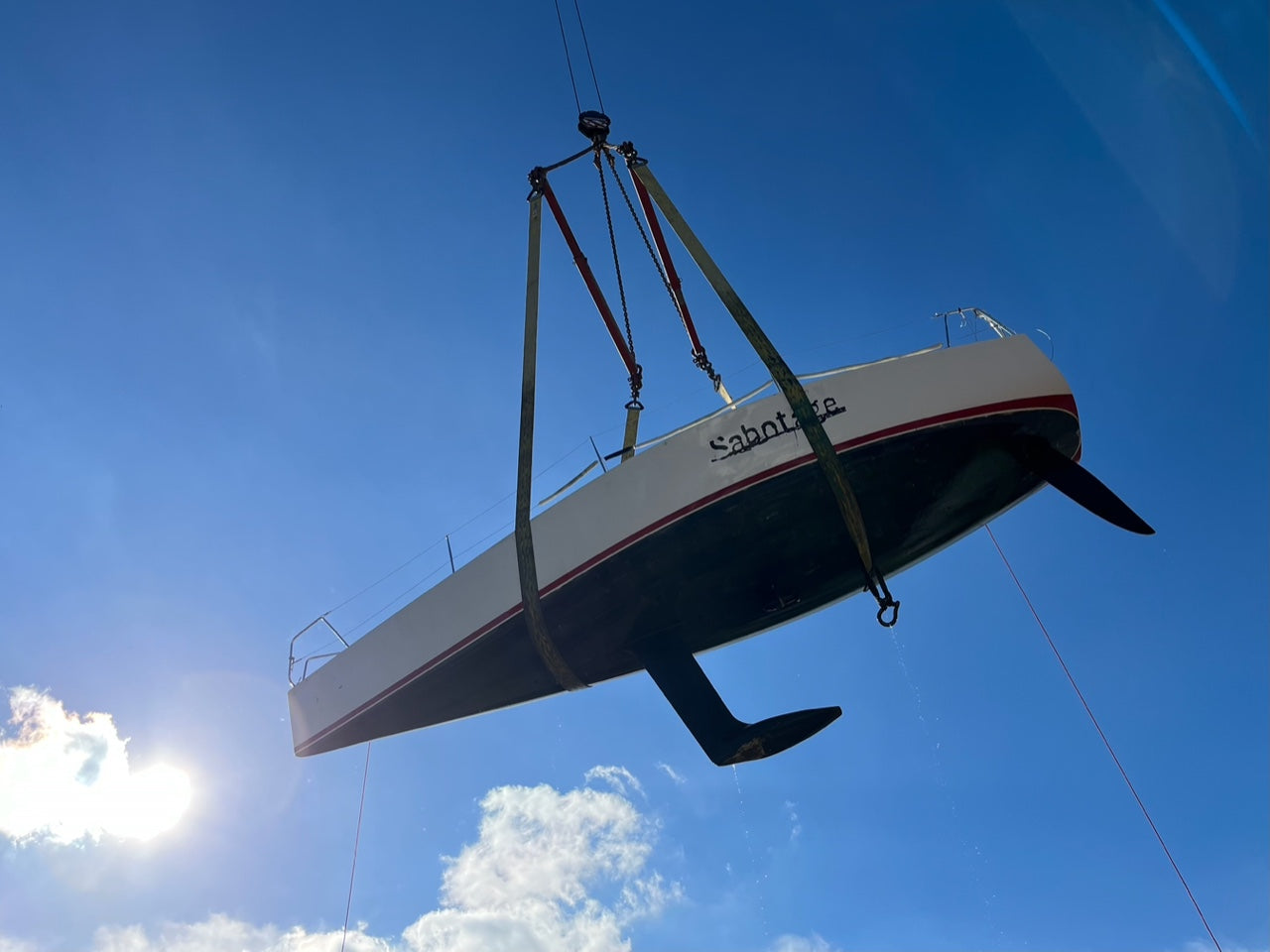
REHABBING AN OLD-ISH RACE BOAT
REHABBING AN OLD-ISH RACE BOAT
Five Tips to Upgrade Your Boat
North Sails expert Doug Folsetter shares his best tips for upgrading your old-ish race boat after modifying his new (to him) Farr 30 Sabotage. Doug sails Sabotage out of the Royal Hamilton Yacht Club and is a veteran when it comes to racing on Lake Ontario.
"Without enough distraction available during one of the prolonged covid lockdowns, I found myself spending far too much time online, looking at boats that were for sale. This culminated in the purchase of an older, Farr 30 (that had been modified with a 5’ bowsprit) sight unseen, 5,000 km away. While I wouldn’t necessarily recommend this for others (or do it again myself), we ended up with a good boat that can be great with some thoughtful updates."
"Despite having a few online tours of the boat, as well as a survey and rig inspection, I really wasn’t sure of what we were getting until it arrived. Once I was able to access the boat and equipment, I prioritized the upgrades in the following order in an effort to make the boat as competitive as possible while, at least, attempting to keep to a budget:"
Sails
"No surprise here. They’re the “engine above the deck” after all! I knew that the bulk of the inventory was approximately six years old and would need to be replaced. I didn’t have the budget to do it all at once so we looked to fill any holes in the inventory and replaced the worst or most frequently used sails first. Before the boat arrived, we ordered a Helix Code 0 with top down furler. The boat didn’t have a code zero and we know if would be a perfect sail for the distance races we had planned. Next, we discovered that there wasn’t a usable J3 onboard, so we moved that to the top of the list. We got through the remainder of the year with the existing inventory but replaced the Main and J2 with 3Di Raw this winter and will work on replacing the downwind sails later this year. After that, we should be able to work on a one (ish) sail / year rotation to keep costs under control."
Bottom
"While new sails are great, a slow bottom is... well... slow! We had planned to spend a couple of weeks sanding, fairing and painting before the boat went in the water. That said, working in the marina was questionable under the lockdown rules at the time and we we didn’t want to start a job that we couldn’t finish before our fixed launch date. Luckily, it turned out that the boat's bottom wasn’t too bad so we burnished the old paint and hoped for the best. We also bought a new bottom brush so we we could scrub regularly as it would inevitably be needed."
Running Rigging / Control Lines
"There is nothing worse than breaking a control line or ripping the cover off a halyard in the middle of a race. New lines also look good and don’t smell like dead fish (like the moldy saltwater crusted sheets the boat came with) when you put them down below. We ended up changing out almost all of the rigging and sheets after we had a chance to sail just to confirm that the existing lines lengths and diameters were correct."
Cosmetics
"While it won’t make the boat faster, I’ll admit that I’m vain enough to want good looking boat. Farr 30’s are well known to have have gelcoat issues but I was assured that all issues had been dealt with. Upon further use, I realized said issues weren’t dealt with and this became a project for last winter."
Electronics
"We ended up replacing our chart plotter right away. The older one that came with the boat only had a PNW chip and there was was not a Great Lakes chip available. We’ll look into replacing our current Nexus instruments with an integrated system over the next year or two."
"Overall, I’m happy with the boat and have created a competitive package in a reasonably cost effective way. In the end, I learned that the most return comes from tackling the jobs that make the most difference first, such as the sail inventory and the bottom. The to-do list never really gets shorter but the jobs become smaller as you go along!"
Connect with Doug to learn more about his upgrades, ask questions or gain insight into the sail package he put together for racing on Lake Ontario.
READ MORE
READ MORE
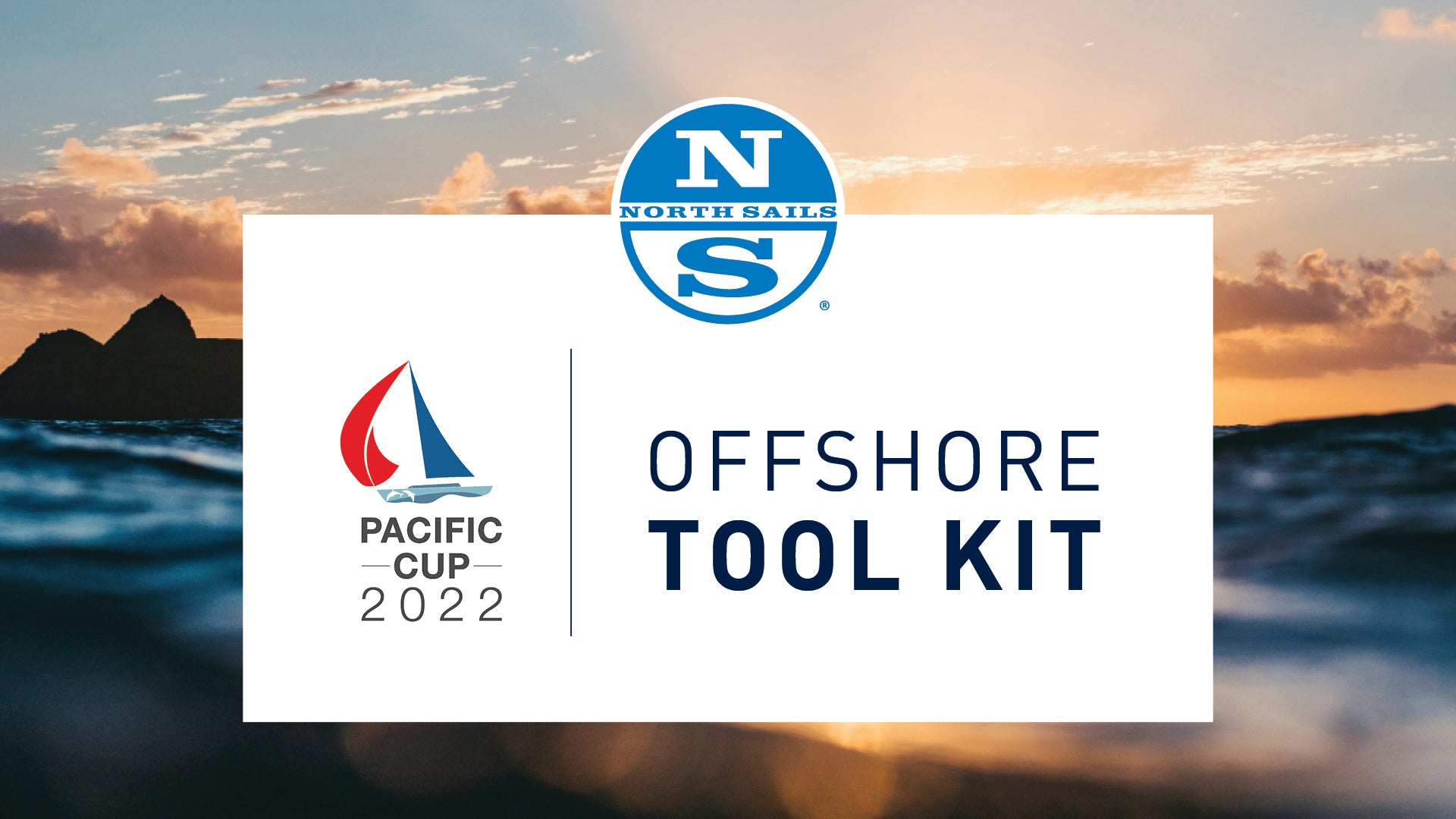
PACIFIC CUP OFFSHORE RACING TOOLKIT
Get Ready for the Pacific Cup
When heading offshore, there are many things to keep in mind that can help you make it to the finish line in one piece. Planning ahead can contribute to your success and assure your crew and your boat is set up to take on anything mother nature can bring. Here are some articles that will help you plan ahead, expect the unexpected, and get the best results in the upcoming Pacific Cup.
Good luck, sail fast, be safe, and sail smart!
Finding the Right Fit
Ken Read has plenty of experience in building ocean racing teams. Here is his advice for speed and success when it comes to finding the right players for the positions.
BUILD YOUR TEAM
Planning Ahead
Preparing successfully to compete in the biggest offshore races requires putting your attention to every detail. When sailing the Pacific Cup (or a similar race that heads well offshore such as the Newport Bermuda Race, Fastnet or Transpac), you’ll need to win a different sort of race after crossing the finish line—the delivery back to your home port.
FORECASTING
Fueling Your Crew
For many teams, preparing for any offshore race begins immediately after the finish of the previous edition. Here’s what Sarah O’Kane from Shorebase, a logistics company, says is important to properly provisioning for your next offshore adventure.
LEARN MORE
The Solution To Every Hoist
When it comes to hoisting your spinnaker, there are some details to consider that make everyone’s life easier (or harder). Having zippers instead of bands is a great way to achieve a smoother, cleaner and quicker hoist, as well as help keep trash out of the ocean.
LEARN HOW
Shift Changes: Know Your Role
It is important to always have a clear strategy for the team on deck to follow, so that rest periods by the navigator do not lead to missed opportunities or mistakes.
LEARN MORE
To Reef or Not to Reef
Shortening sail quickly and easily when the breeze comes on is key to looking after your sails and your crew.
LEARN MORE
Safety is No Accident
Hardcore ocean racers and coastal cruisers alike should all make safety at sea a priority. North Sails President and offshore veteran, Ken Read, shares his tips and best protocols for sailing offshore.
LEARN MORE
Get Downwind, Fast!
Steering off the wind, on reaches and runs, requires a coordinated effort between helmsman and spinnaker trimmer. More often than not there are conflicting suggestions: Go up. Go down. Be more aggressive. Steer less. Hear our thoughts on how to manage feedback from the crew.
HOW TO
The Trip Home is Just as Important
Preparing successfully to compete in the biggest offshore races requires putting your attention to every detail. When sailing an offshore race you’ll need to win a different sort of race after crossing the finish line—the delivery back to your home port.
LEARN MORE
Inventory Checks
Have you made arrangements for sail check-ups after the delivery home? Every sail serviced in a North loft undergoes a thorough inspection designed to identify maintenance issues early, so they do not become major problems later on. Contact your nearest loft when you hit the dock after your delivery. We look forward to helping you maintain your sail inventory so you are ready for the next event.
CONTACT US
READ MORE
READ MORE

NORTH SAILS WINTER SERVICE
NORTH SAILS WINTER SERVICE
Prepare for the Winter Sailing Season Today
The Winter sailing season is coming. Count on your local service team to provide our signature Certified Service and get you ready for the next big event. Now is the perfect time to get your sails in after the busy summer season. Make an appointment with your local team for post-season service today:
NORTH SAILS SYDNEY NORTH SAILS MELBOURNE NORTH SAILS BRISBANE
It’s our mission to provide you with expert repairs, maintenance, and upgrades. We know that whether you race or cruise, your sails are a major investment, and we’re committed to helping you maximize their performance and lifespan.
READ MORE
READ MORE
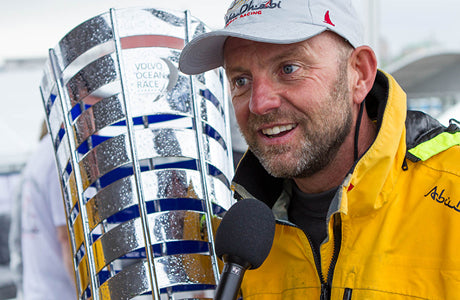
IAN WALKER JOINS THE NORTH SAILS MANAGEMENT TEAM
IAN WALKER JOINS THE NORTH SAILS MANAGEMENT TEAM
Olympic Medalist and Volvo Ocean Race Winner Named North Sails UK General Manager
North Sails is excited to welcome world-renown sailor Ian Walker to their management team. Walker is a two-time Olympic medalist, an America’s Cup veteran, and winner of the Volvo Ocean Race 2014-15 as skipper of Abu Dhabi Ocean Racing. He most recently served as Performance Director to the British Sailing Team, who claimed five medals at the 2020 Tokyo games. Walker’s next career move puts him at the helm of North Sails UK for the world’s leading sailmaker.
“Lowell North founded this business on a simple philosophy – get the best people and commit yourself to make the best product,” says Ken Read, President of North Sails. “Ian sits amongst the best in our sport. He possesses a winning attitude and a level of knowledge that’s invaluable to our brand and all North Sails customers. Having sailed against Ian, I know he’s a fierce competitor and simply a good guy. We’re honored to have him join our team.”
“The expertise from someone of Ian’s caliber is one of the greatest resources we can offer all of our customers,” remarks John Welch, COO of North Sails. “Each North Sails Manager is more than a champion sailor or a sail expert. They become a part of a tight-knit team working towards the common goal of developing superior products and delivering exceptional support for sailors at every level of our sport.”
“North has a long history and rich tradition of being at the forefront of sailmaking,” Walker explains. “Joining North Sails is an excellent opportunity to be an active voice in the marine industry and part of the industry’s leading brand. It’s clear that everyone on the North Sails team has a passion for helping people get the most of their sailing, and my new role presents a unique opportunity to work alongside talented, like-minded sailors.”
Walker’s official start date is August 1st, 2022. He will be based at the North Sails loft in Gosport, UK.
READ MORE
READ MORE
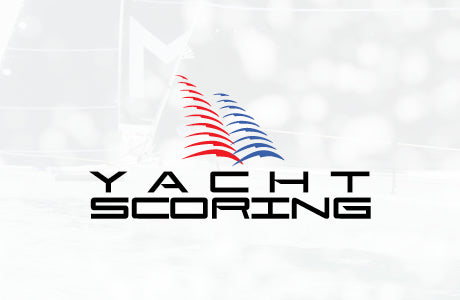
NORTH SAILS GROUP SUPPORTS YACHT SCORING
NEWS UPDATE: NORTH SAILS GROUP SUPPORTS YACHT SCORING
North Sails Group is pleased to announce the addition of Yacht Scoring to its family. Founded in 2006 by Luiz Kahl, Yacht Scoring is an easy-to-use yet powerful web-based race management and scoring tool used by hundreds of yacht clubs and race organizers around the globe. Kahl, who passed away unexpectedly in 2021, was a software developer by trade, a competitive sailboat racer, and a passionate race committee volunteer. This addition to North Sails Group is part of an ongoing mission to support the sport of sailing and increase participation.
Yacht Scoring is a race management and scoring system that simplifies the task of event registration and communications while allowing for complete results in near-real-time. The single online data-based platform streamlines regatta management and eliminates the need to maintain multiple independent spreadsheets for entry lists, scratch sheets, ratings, and competitors’ information. For sailors, Yacht Scoring’s quick and easy sign-in and live scoring program delivers immediate race results, helping sailors know the score before they return to the dock.
“Luiz uniquely blended an innovative business model with an unmatched level of customer support,” comments Ken Read, President of North Sails Group. “It was not uncommon to see him working hand-in-hand with race committees to ensure the success of their event. He didn’t do this because it was a requirement of using his services; Luiz did it because he was committed to helping sailors at all levels of the sport. It is our intention to follow his lead with this same service that he prided himself on.”
“Yacht Scoring is a tool to help race committees focus on what’s important, letting sailors have fun on the water,” says Gui Kahl, Luiz’s brother. “In just ten years, Luiz grew Yacht Scoring into a must-have regatta management platform used by thousands of sailors. Beyond his business, Luiz was an avid supporter of Warrior Sailing, youth sailing, and Bayview Yacht Club, his home club, which will continue to be supported by Yacht Scoring.” Gui further explains, “The continuation of Yacht Scoring by the North Sails Group preserves Luiz’s legacy and will keep building on his vision.”
The ease and accuracy of Yacht Scoring for race committees, sailors and volunteers with regard to all aspects of sailboat racing, from entry to scoring, will remain unchanged. The Kahl family extends their gratitude to Rob Bunn for his dedication and time over the last several months. A personal friend of Luiz’s, Rob was instrumental in keeping Yacht Scoring moving forward and operational for sailing and the sailing community. He will remain as interim manager of Yacht Scoring to ensure a seamless transition with the North Sails Group.
For more information on:
Yacht Scoring:
https://www.yachtscoring.com/howitworks.cfm
Media Inquiries:
Bridgid Murphy
bridgid.murphy@northsails.com
📸 CSR / Studio Borlenghi
READ MORE
READ MORE
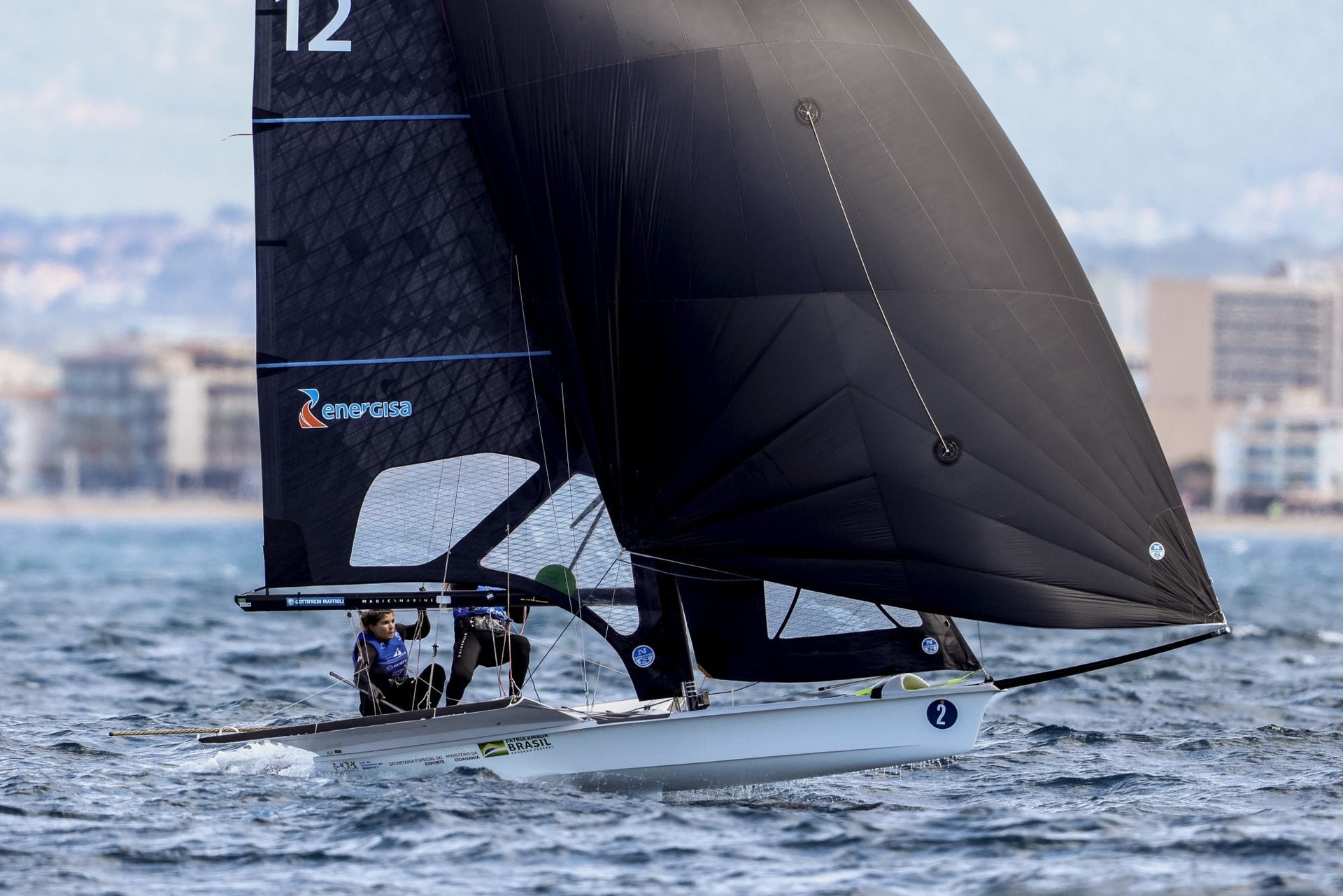
NEW 49ERFX OLYMPIC 3Di SAILS TRIUMPH
NEW 49erFX OLYMPIC 3Di SAILS TRIUMPH
North Sails Sweeps 2022 Trofeo Princesa Sofía Mallorca Podium
📸 Sailing Energy
The new North Sails 49er and 49erFX class 3Di sails which will be used in the 2024 Paris Olympics made their debut at the 51st Trofeo Princesa Sofía Mallorca. As the first event for the 2022 Hempel World Cup Series, the regatta demonstrated the potential of the North Sails 3Di sail inventory with the varied range of conditions that the Bay of Palma presented for the first major Olympic class regatta since Tokyo 2020.
At the beginning of 2021, North Sails was chosen as the official supplier of sails for the 49er and 49erFX classes for the Olympic cycle in Paris 2024. After the Tokyo 2020 Games, a short and intense transition process began to design and create the next set of sails that would unify the arsenal of contenders for Olympic glory, with all Olympic 49er and 49erFX racing North Sails 3Di sails. In the opinion of Blair Tuke, current 49er Olympic and World Champion, “This is the first time that an Olympic class is able to choose equipment that optimizes performance, consistency and longevity with a low environmental impact, all in one package.”
📸 Sailing Energy
The race to Paris began in Mallorca.
Overcoming the Tokyo hangover, the teams began preparation in a shortened cycle, which went from the usual four years to just over three years. The world health situation did not help either, making it necessary to wait until April 2022 to celebrate the first event of the Hempel World Cup Series. The 51st Trofeo Princesa Sofía Mallorca saw many 49er and 49erFX teams premier their North Sails 3Di sails in competition.
The 49erFX fleet brought together 56 boats from 23 nationalities, including the top contenders for Olympic glory in the upcoming Games. After five intense days of competition with varying wind and wave conditions in which 13 races were held (including the Medal Race), Odile Van Aanholt and Annette Duetz achieved a hard-fought win using the new North Sails 3Di inventory that will soon be required. The premiere of the new material helped the Dutch prevail over the current Olympic champions, the Brazilians Martine Grael and Kahena Kunze, who also competed with the spectacular black 3Di sails, as well as the third place team of Italy’s Jana Germani and Gloria Bertuzzi.
Nine of the ten medal race boats competed with the new North Sails 3Di sails, an excellent debut in the race to Paris 2024.
The next qualifying event for the 2022 Hempel World Cup Series, the Allianz Regatta will bring together the 49er and 49erFX fleets in Amsterdam, will take place from May 31 to June 5.
Learn more about why 3Di tested better than paneled sails during the rigorous testing process here.
📸 Sailing Energy
READ MORE
READ MORE
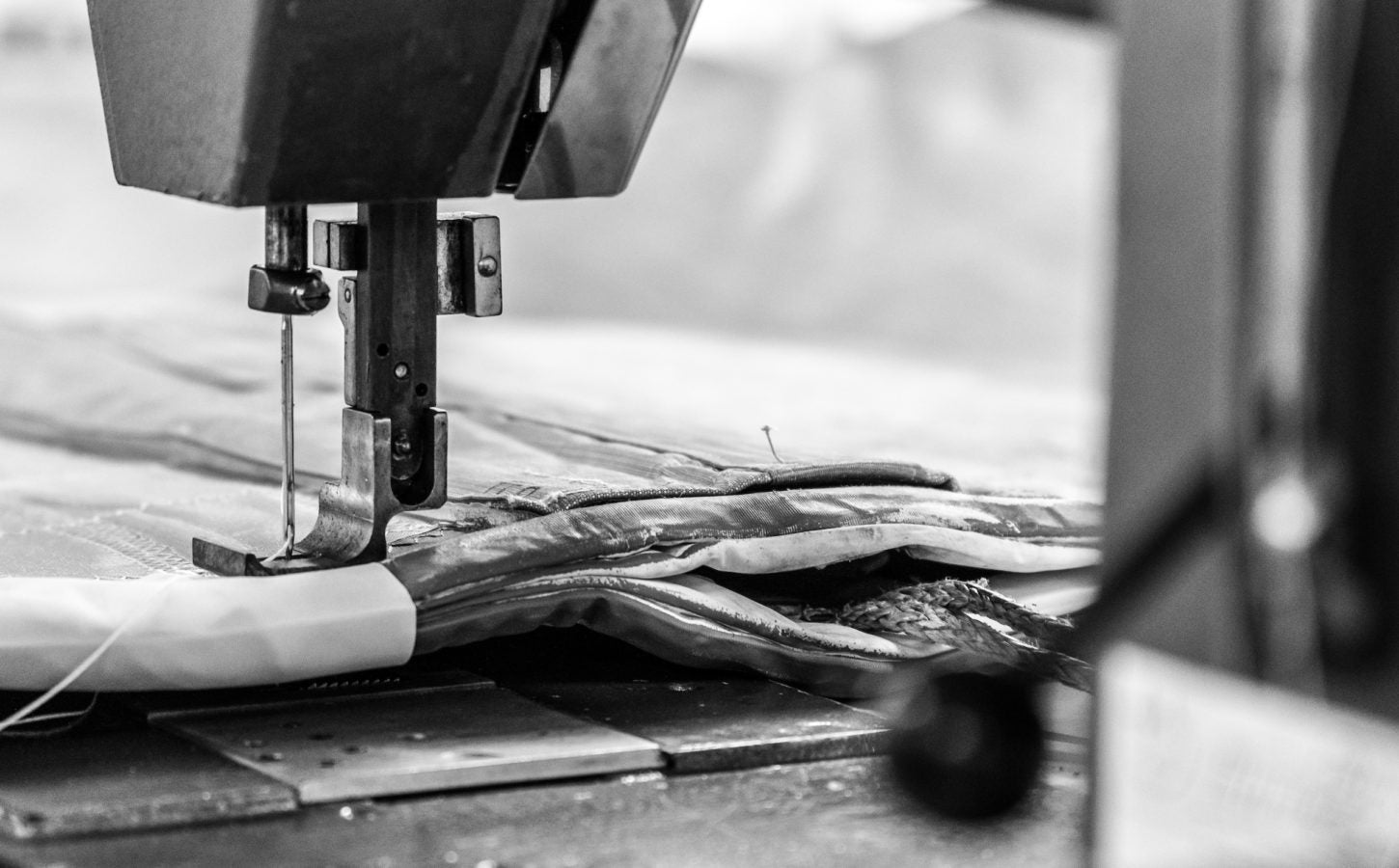
NEWS - BIENTÔT L’HEURE DE RETOURNER SUR L’EAU !
IL EST L’HEURE DE RETOURNER SUR L'EAU !
Les beaux jours approchent, le début de la saison nautique également !
Afin de vous préparer au mieux pour cette nouvelle saison, nous vous proposons quelques conseils que vous pourriez appliquer à votre bateau :
- Vérifiez le gréement dormant: nettoyez les traces de rouille sur les ridoirs, resserrez les pièces qui ont du jeu, vérifiez les sertissages et inspectez le mât et la bôme sur toute leur longueur,
- Nettoyez l’intérieur de la gorge du mât: montez au mât avec un chiffon doux, du produit nettoyant et un tournevis (ou petit outil) afin d’éliminer les dépôts accumulés pendant l’hiver,
- Vérifiez le gréement courant: inspectez vos drisses et écoutes, ainsi que tous les bouts qui sont répartis un peu partout sur votre bateau,
- Retendez les lattes de vos voiles, en espérant que vous les aviez détendu en fin de saison dernière ;-) !
- Appliquez du Teflon sur les coulisseaux de vos voiles,
- Si vous disposez d’un système réglable sur le guindant de votre grand voile, vérifiez les offsets (tout en hissant votre grand voile, mesurez la distance entre le mât et l’avant de la voile. Il faudrait avoir le même écart sur toute la hauteur de la voile afin d’obtenir la forme idéale),
- Vérifiez les coutures de toutes vos voiles ou demandez à votre voilier de le faire. Une petite reprise de couture vaut mieux qu’une grande déchirure :-) !
- Contrôlez l’état de votre sellerie: housses, tauds et poches à bouts,
- Vérifiez, graissez et huilez vos winches,
- Faites le tour de tous vos anneaux brisés et sécurisez-les avec du scotch de protection autour s’il n’y en a plus (le but est qu’ils soient lisses si la voile venait à s’y frotter),
- Vérifiez vos amarres.
N’hésitez pas à faire également appel à nos services d’enlèvement, de contrôle et de rapatriement de vos voiles !
Êtes-vous plutôt conseils à terre ou coaching sur l’eau ?
Faites appel à notre équipe pour bénéficier de conseils ou d’un coaching personnalisé ! Profitez de conseils sur-mesure, d’un workshop suivi de l’application sur votre bateau, et encore d’autres démonstrations grâce aux North Expériences !
Julien, Michel et Nicolas sont à votre écoute et se feront un plaisir de vous répondre, par email ou par téléphone au 022 782 32 22.
Nous vous souhaitons un beau début saison et restons à votre entière disposition !
Votre équipe North Sails Suisse
READ MORE
READ MORE
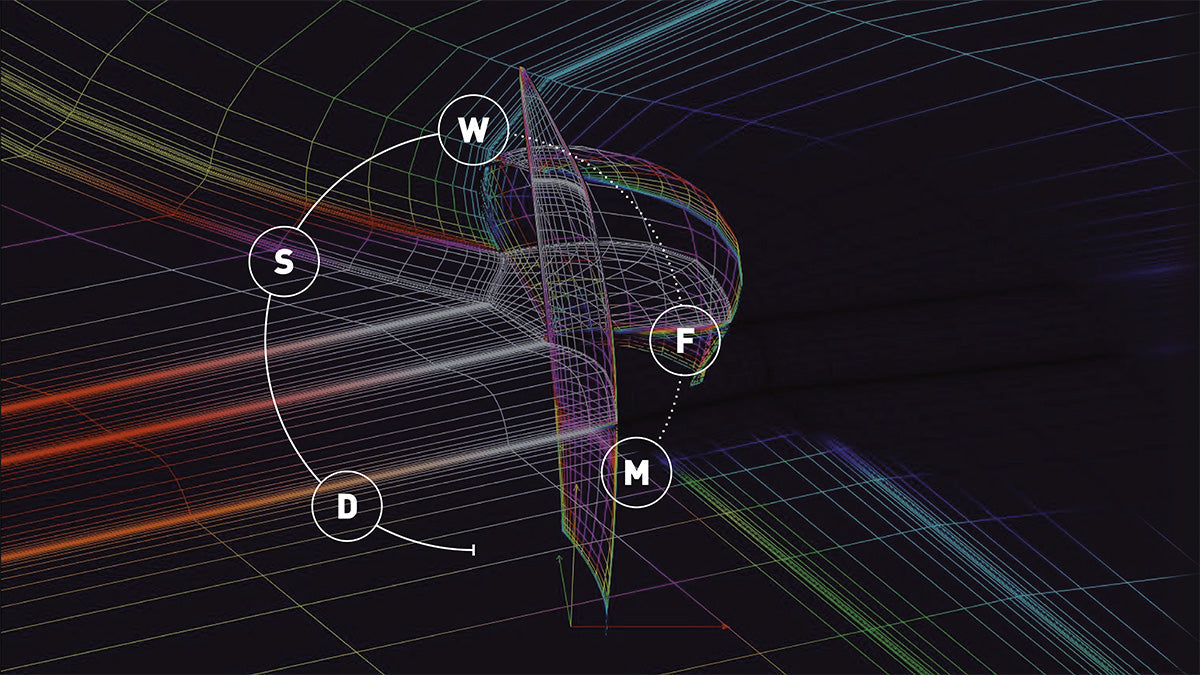
WHAT IS THE NORTH DESIGN SUITE?
It’s a competitive edge that keeps North Sails, and our clients in a class above the rest. The concept is founded on advanced mathematical modeling and powered by data.
READ MORE
READ MORE
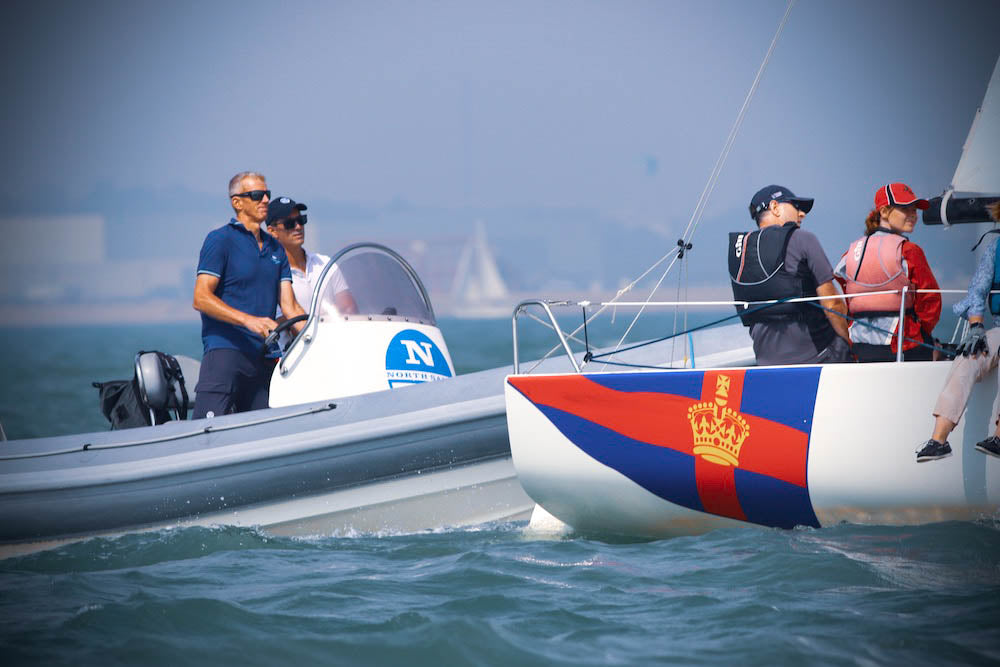
ROYAL SOUTHERN NORTH SAILS MAY REGATTA
ROYAL SOUTHERN NORTH SAILS MAY REGATTA
We Look Forward to Seeing You There
📸 Louay Habib / Royal Southern Yacht Club
North Sails UK is proud to support the Royal Southern May Regatta on the 7th and 8th of May. This regatta kicks off the first of a series of fun yet competitive summer regattas at the Royal Southern Yacht Club in Hamble.
With over 80 teams expected and hundreds of sailors taking part, it’s going to be a fantastic series, with boats on the entry list including J/70, SB20, Cape 31, HP30, J/111, and IRC Classes.
For the first day of the regatta, North Sails UK Experts will be on the water coaching from the North RIB, alongside Shaun Roster who is capturing drone videos of the fleets to be played at the club after racing. The local North experts will also run a short and relaxed in-person debrief for all competitors to help teams get the most out of the weekend and the series. And find our branded goodies amongst the prizes, including jackets, books, and sail bags. North Sails Certified Service will be onsite for the weekend. For any sail repairs during the regatta, contact the local Service Expert James Hobson on +44 7557 941069.
📸 Louay Habib / Royal Southern Yacht Club
Several high-performing North Sails-powered boats are set to take part, including Ian Atkin’s new Carkeek 40 Dark ‘n’ Stormy. “There is a big incentive to do all of the Summer Series regattas, but each feels like a proper championship in its own right,” comments Ian Atkins. “Dark ‘n’ Stormy is a thrilling boat to race, and there are about ten boats of similar capabilities racing in The Solent. We are looking forward to a superb season of racing.”
“Everyone could use a North Sails bag to carry their sandwiches down to the boat!” laughed Chris Jones, owner of North boat Journeymaker. “But the simple truth is that North Sails have some very high-quality experts, and we know their input is going to be of the very highest caliber. Their advice really does help us progress.”
One Design classes have always been a feature of the Royal Southern Summer Series. The pocket-rocket Cape 31 UK Class, based in Hamble, will see five or more Cape 31s at the North Sails May Regatta. North Sails has worked closely with the class, optimizing sail designs, offering support and training sessions. The Bartholomew’s Tokoloshe has an experienced crew onboard and is certainly one of the North boats that we have a close eye on having won the final regatta of the 2021 Summer Series. If you missed it, read our recap on the 2021 UK Nationals and how the fleet is captivating sailors worldwide.
📸 Live Sail Die / PKC Media
The SB20 Class will also be in action for the North Sails May Regatta which will be their Southern Championship and the first round of the SB20 UK Series.
The Royal Southern Yacht Club has produced J/70 World Champions in both the Open and Corinthian Classes. The 2022 J/70 UK Sprint Series kicks off at the North Sails May Regatta and will be held throughout the Royal Southern Summer Series. With five short, sharp races per day, the series is designed to test raw speed and boat handling.
J/70 UK Class Captain Marshall King, 2019 Corinthian World Champion, commented: “The Sprint Series provides thrilling racing and is the perfect environment to improve starts and boat handling. After racing, the J/70 Class enjoys getting together for post-race drinks where we share knowledge to increase performance right through the class.”
Online Entry for the North Sails May Regatta and the Notice of Race is available here. For more information, please email: RSrnYC Sailing Secretary James Ripley.
📸 Sportographytv
READ MORE
READ MORE
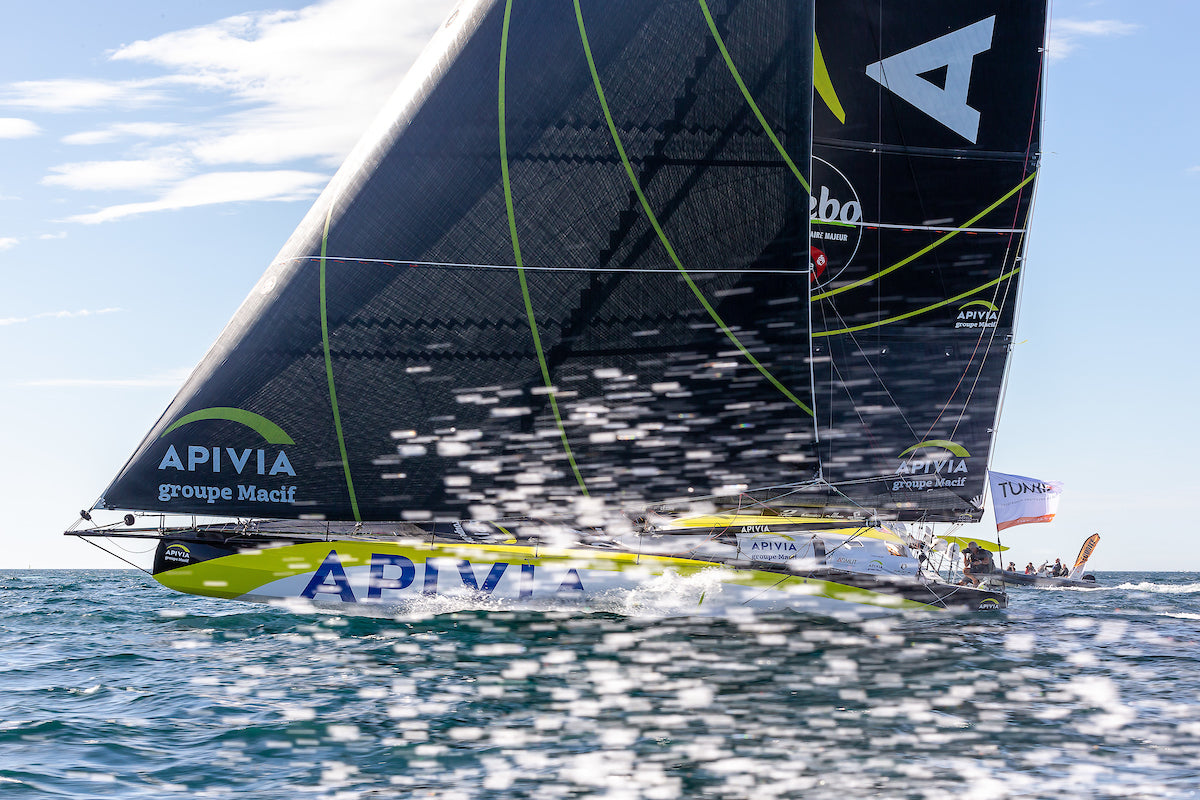
CODE SAILS DEFINED
CODE SAILS DEFINED
What Is A Code Sail?
The term ‘Code Sail’ means different things to different sailors. What started out as an innovative and straightforward concept has rapidly evolved into a whole new category of sails. While Code Sails may look and perform quite differently from one another, there is one common theme: Code Sails are fast, flat, free-flying sails, designed for close reaching angles.
To understand all the different names and versions, it may help to look back at the origin of these sails. Originally “Code Zeros” were designed to qualify as spinnakers under various rating rules that require the mid-girth to be 75% of the foot length. Volvo Ocean Racers coined the term Code Zero, which fit into the established North Sails coding convention: A1, A2, A3, etc. This design also became popular among handicap racers under Rules like IRC, ORR, and PHRF. As their effectiveness and ease of use became increasingly apparent, Code Sails expanded into cruising as well, and multihull sailors coined the term “Screechers” for their similar, specialized, high-performance reaching sails.
Code Sails add a great deal of sail area and power for close reaching angles. Boats with non-overlapping headsails see the biggest benefit from Code Sails, as they better fill the inventory gap between upwind headsails and downwind spinnakers.
REQUEST A QUOTE CONTACT YOUR LOCAL EXPERT LEARN MORE ABOUT CODE SAILS
Helix Structured Luff: Code Sails Redefined
While Code Sail is a term used by sailmakers across the board, in recent years North Sails has redefined what it means to have a North Code Sail, with the introduction of its Helix Structured Luff technology.
A design philosophy first introduced for offshore Grand Prix, the performance benefits of Helix have reverberated around the sailing world, making Helix Code Sails the go-to tool for improving aerodynamics and increasing range.
View this post on Instagram
A post shared by North Sails (@north_sails)
With their unique luff structures, Helix Code Sails give sailors another gear, increasing power potential by projecting the sail further forward and optimizing load sharing, for a positive sail shape and enhanced control. They are custom-designed – optimized to react to dynamic sailing loads, easily and efficiently handle torque for furling, and offer load-sharing characteristics suited to a much wider wind angle and wind speed range.
As of January 2022, Helix is now a feature of all North Racing Code Sails. The exact implementation of the Helix Structure varies according to the specific version of Code Sail. When purchasing a Code Sail, your boat’s performance, target wind angles and anticipated wind speeds, your onboard sail handling systems, and the sail material you have chosen are all taken into consideration. Then, the sail is designed around your specific needs.
Helix Code Sails and Mid-Girth Measurements
Note: Some rating/handicap systems strictly limit the available mid-girth specifications of rule-eligible sails, barring sails with mid-girths greater than a headsail’s 50%/less than a spinnaker’s 75% . Other rating systems heavily penalize mid-girths greater than 50%/less than 75%. And other systems attempt to generate accurate ratings with no special consideration given to mid-girths between 50 and 75. Discuss with your North Sails representative the rating system under which you will be racing to determine whether and which any rule restrictions or prohibitions apply.
Helix Code Zero Asymmetric Spinnaker – Mid Girth (SMG) >75%
For systems that disallow mid-girths between 50 and 75%, this sail remains much the same in concept as the original Code Zero. The design requirement is the flattest possible sail with a spinnaker mid-girth of 75%. The challenge of designing and building a Code Zero Asymmetric Spinnaker is meeting the 75% girth measurement while producing a sufficiently flat sail shape with no excess area”flapping” in the wind. Code Zeros carry an unsupported mid-girth sail area that is not aerodynamically efficient for light-air close reaching. Code Zeros can be made in 3Di Downwind or Code style aramid laminates.
Helix Code 50 – Mid Girth (SMG) <54%
North Sails’ newest code sail, the Code 50 is a free-flying sail for offshore racing. Ideally suited to ocean racing Grand Prix yachts such as IMOCAs and Ultime Trimarans, it uses a new 3Di Downwind (RAW) 700 material, uniquely suited to the hybrid requirements of offshore, free-flying sails – exceeding the limitations of standard 3Di Downwind 600, 700 & 800 material.
Helix Code 55 + 65 (SMG 51%-74%)
A Code 55 has a 55% SMG while a Code 65 features a 65% SMG. (SMG is the width of the sail measured at half the sail’s height, expressed as a percentage of foot length). Code Sails with mid-girth between 50% and 75% are highly efficient and versatile sails. However, as noted above, these sails are sometimes treated unfavorably (if not outright banned) by certain rating rules. Where allowed, these Code Sails provide pure reaching performance – ideal for offshore racing, multihull sailing, and performance cruising. A smaller SMG percentage implies a flatter sail for closer wind angles, while a higher SMG percentage implies a slightly fuller sail for wider wind angles. An SMG less than 51% is considered a genoa, while an SMG greater than 74% is considered a spinnaker.
REQUEST A NEW SAIL QUOTE
CONTACT YOUR LOCAL EXPERT
READ MORE
READ MORE
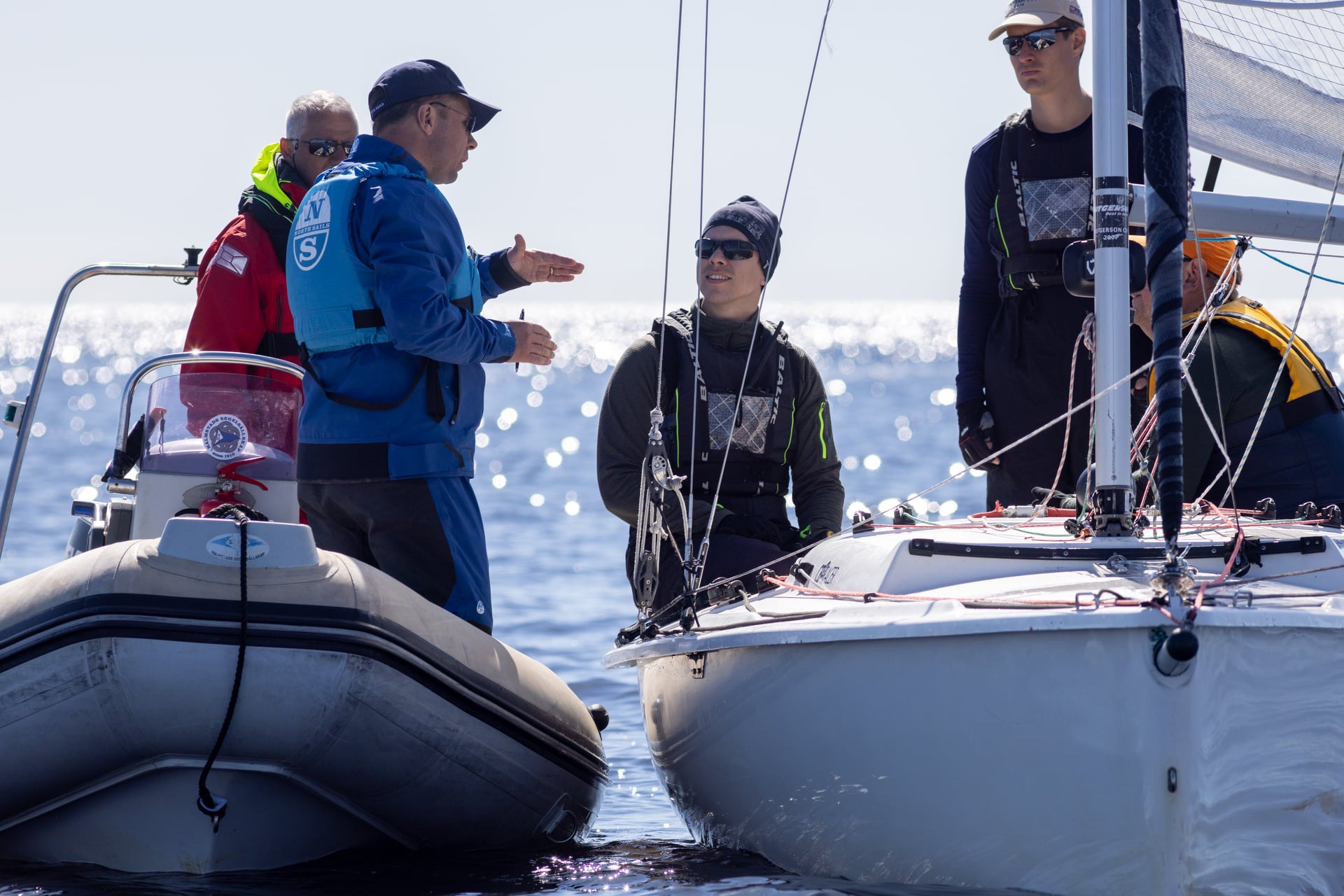
NORTH SAILS TRIM CUP 2022
NORTH SAILS TRIM CUP 2022
Ett Samarrangemang Mellan Halmstad Segelsällskap Och Oss På North Sails
📸 Daniel Stenholm
Sista helgen i april samlades ett tiotal besättningar i Halmstad för att vara med på en kombinerad tränings- och kappseglingshelg. Coacher var Henrik Ottosson och Andreas Turesson från North Sails i Göteborg.
North Sails Trim Cup är ett samarrangemang mellan Halmstad Segelsällskap och oss på North Sails. I år vände vi oss främst till CB66:or men kul nog tog även en lokal J/70-besättning tillfället i akt att haka på.
Vädret gick inte att klaga på. Det var klart och soligt under hela helgen, möjligtvis lite småkyligt ibland, med måttlig frånlandsvind under fredagen och lördagen och lite mer därtill under söndagen.
På programmet stod träning under fredag och lördag förmiddag, och kappsegling under lördag eftermiddag och söndag förmiddag. Planen var att köra ”så många seglingar vi hinner”, och det blev till slut tio genomförda race. Hur det gick är egentligen mindre viktigt. Syftet med helgen var framför allt att seglarna skulle få jobba bort ringrosten och förhoppningsvis få lite nya lärdomar och intryck som de har nytta under den kommande säsongen.
För coachningen stod Henrik Ottosson och Andreas Turesson från North Sails i Göteborg. De fokuserade särskilt på två områden: besättningens placering i båten under olika förhållanden och på olika bogar – en oerhört viktig faktor i lätta sportbåtar som CB66 och J/70 – och samspelet mellan focktrim och storsegeltrim.
📸 Daniel Stenholm
HSS har fina seglingsvatten precis utanför piren, vilket gör det möjligt att på ett effektivt sätt kombinera segling med lunch och genomgångar på land. Varje dag inleddes med dragning i klubbhuset innan båtarna skickades ut på vattnet. Henrik och Andreas åkte runt i var sin RIB-båt och kunde ge snabb feedback. De tog foton och filmer, och detta låg sedan till grund för de uppföljande genomgångarna.
Det var med andra ord ett ganska intensivt program, med två segelpass och tre genomgångar om dagen. Men det är ett trevligt upplägg som ju också ger utrymme för umgänge med seglarkompisar som man kanske inte träffat sedan förra säsongen.
Tack till Halmstad Segelsällskap för ett som vanligt fint arrangemang. Tack också till Hotell Clarion Collection Norre Park, som hade fixat bra priser på hotellrum och som ordnade en väldigt fin regattamiddag på lördagskvällen.
📸 Daniel Stenholm
READ MORE
READ MORE
